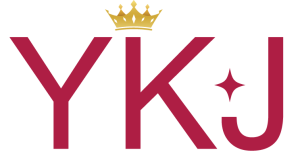
Open Rhinoplasty Program or Nasal Structure Reconstruction (Open Reconstruction, Open Rhinoplasty))
is a surgical technique that involves making an incision at the base of the nose on both sides to enhance or correct the nose. This approach provides full visibility of the nasal structure, allowing the surgeon to address various issues, including the removal of silicone implants, thread lifts, or any foreign substances previously injected into the nose.
Additionally, it enables the correction of various nasal deformities such as deviated nasal septum, large dorsal hump, bulbous nose, short nose, hooked nose, nasal asymmetry, wide nasal base, silicone extrusion, thin nasal tip, and cases with limited nasal tissue.
Unlike Closed Rhinoplasty, which primarily focuses on augmenting the nasal bridge with a silicone implant, Open Rhinoplasty offers a more comprehensive solution for structural modifications and complex corrections that cannot be achieved with the closed technique.
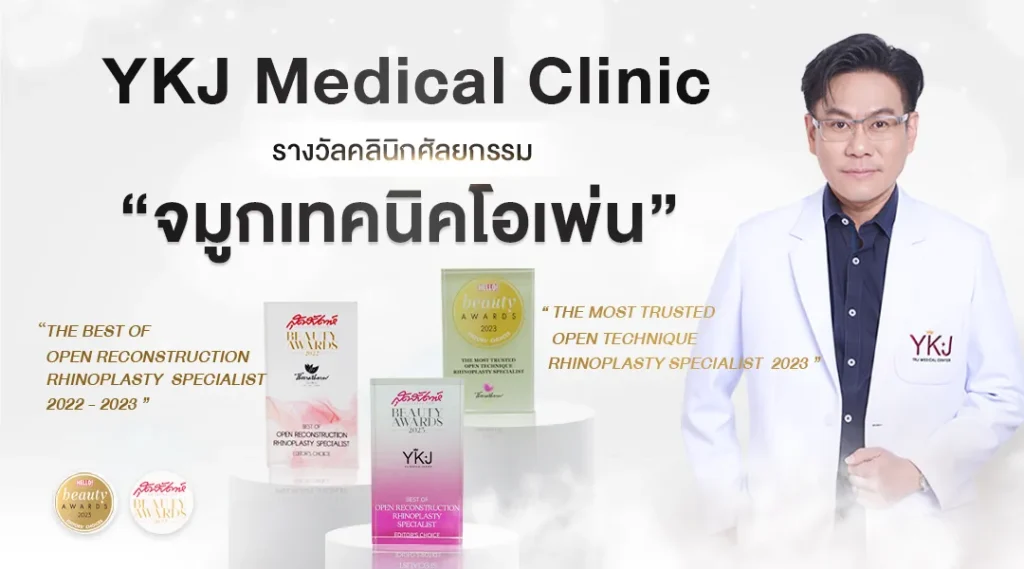
แก้จมูก ทำจมูกเทคนิคโอเพ่น ที่ YKJ Medical Clinic

คุณดาว มยุรี – นักร้องเพลงลูกทุ่งชื่อดัง แก้จมูกเทคนิคโอเพ่นซี่โครง ที่ YKJ Medical Clinic

คุณพริ้ง ชุติญา เจียรกุล – ดารานักแสดง

แม่นํ้าหนึ่ง เจ้าแม่วงการใบ้หวย – แก้จมูกครั้งที่ 7 + เสริมซิลิโคนร่องแก้ม เพื่อให้ร่องแก้มตื้นขึ้น ทำให้หน้าดูเด็กลง

คุณกีวี ณัฐวรัญชลี จิวจินดา - นักร้องวงเกิร์ลกรุ๊ป Beachy

เจนนี่ อรณิชา อัครเศวยา – นางแบบจากรายการชื่อดัง

คุณเจสซี่ วาร์ด – นางแบบ เน็ตไอดอล ชื่อดัง

คุณเหน่ง กุลธิดา เย็นประเสริฐ – Miss Thailand Universe ปี 2000

คุณแพม ปาเมลา ปาสิเนตตี – พิธีกรช่องดัง / Miss Grand Thailand ปี 2017 
คุณเชอรี่ เมลิสา – Miss Thailand World ปี 2006

คุณมีมี่ กัลยรัตน์ ขัติยะ – ดารา นางเอกชื่อดัง

คุณเบล สวรรยา เลียงประสิทธิ์ – ดารา นางเอกชื่อดัง

คุณทีน่า ธนาวรรณ วิกก์ – รองอันดับ 2 มิสแกรนด์ไทยแลนด์ 2022 และรองอันดับ 3 The Miss Globe 2022 
คุณมารีม่า สุภัทรา – รองอันดับ 4 มิสแกรนด์ ไทยแลนด์ 2022 และ Miss Tourism International 2022

Dj กาโต่ย – ดีเจและเน็ตไอดอลชื่อดัง ผู้ติดตามมากกว่า 1 ล้านคน 
คุณส้มโอ วัชราภรณ์ โพธิกสิกร – Miss Grand ลพบุรี 2017

คุณเด็บบี้ บาซู – นักแสดง นักร้องชื่อดัง วงบาซู (Bazoo)
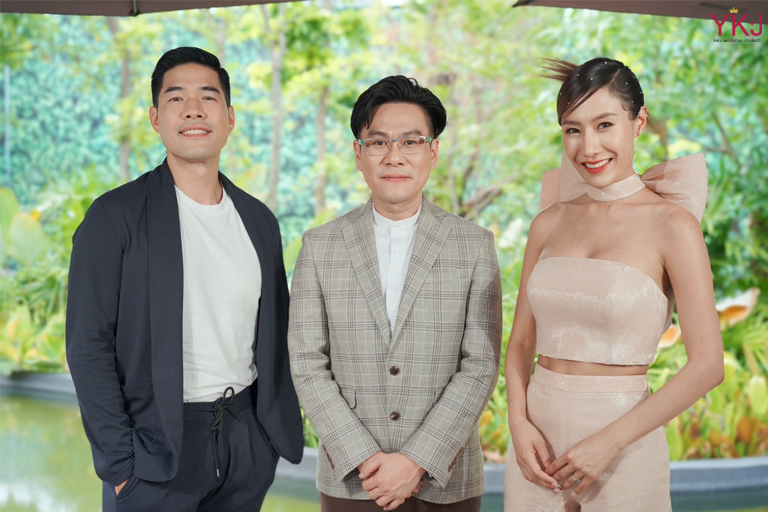
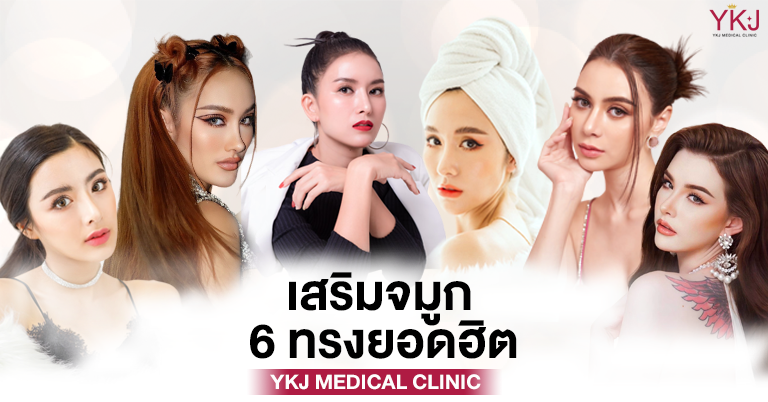
At YKJ Medical Clinic, we offer a wide range of nose shapes to suit every style, whether you’re looking for a Korean-inspired look, a Western-style contour, a teardrop shape, a smooth slope with a defined tip, an upturned slope, and more.
Our goal is not only to create a beautiful nose or address structural concerns but also to ensure that the nose perfectly aligns with the Golden Ratio of facial proportions. We focus on harmonizing all five key facial features—eyes, ears, nose, lips, and chin— to enhance natural beauty while preserving each individual’s unique identity.

The Most Popular Nose Shapes at YKJ Medical Clinic Include:
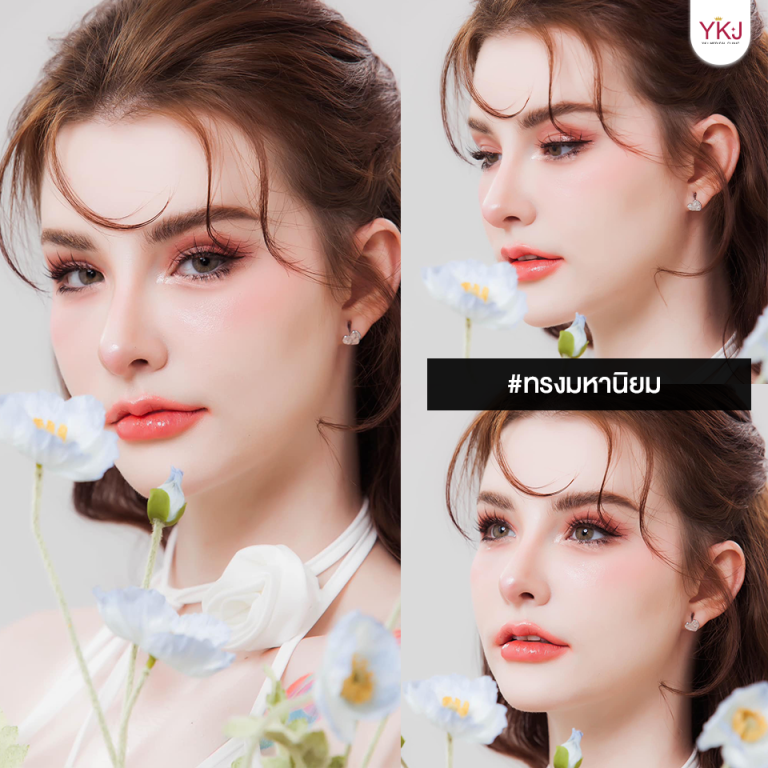
“Maha Niyom” – The Ultimate Popular Nose Shape
This nose shape is designed to create a soft yet refined appearance, blending elegance with a touch of charm. It is ideal for those who desire a Western-style nose with a naturally sophisticated feel.
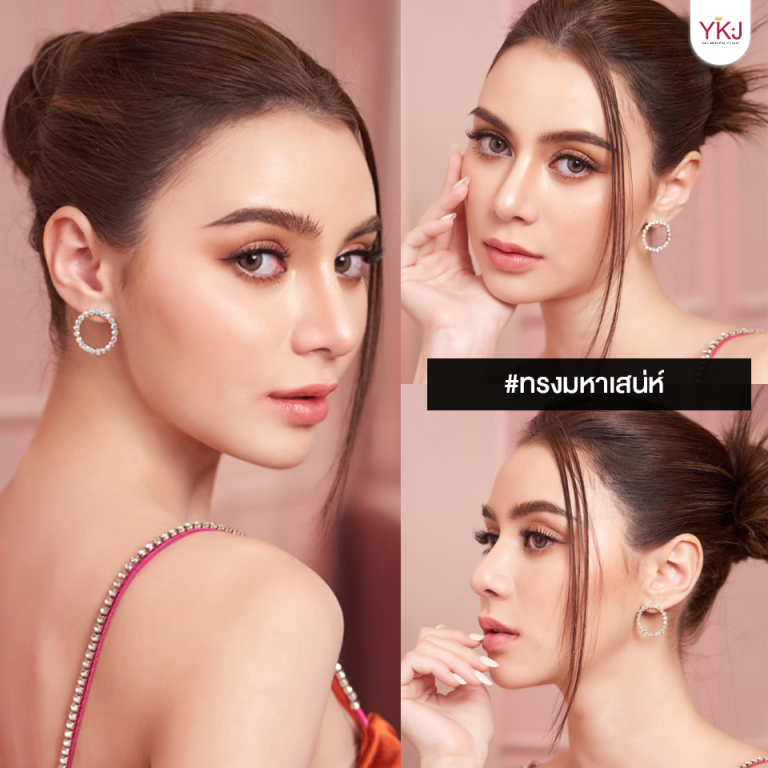
“Maha Saneh” – The Ultimate Charming Nose Shape
The Maha Saneh nose shape is designed for those who desire a delicate, adorable, and effortlessly charming look. With its soft, feminine features, this nose style enhances facial harmony while exuding a youthful and elegant aura.
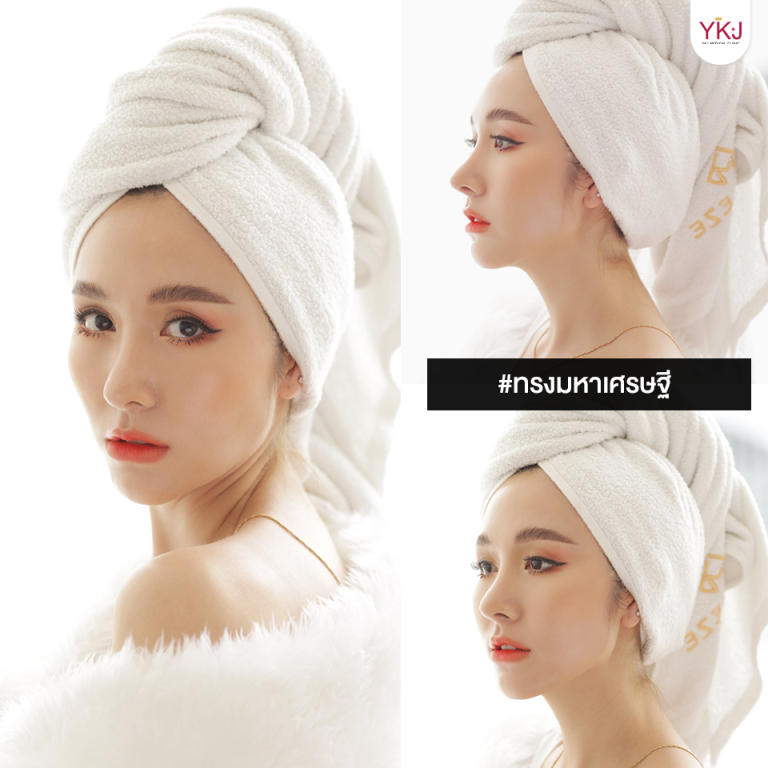
“Maha Setthi” – The Prosperous & Elegant Nose Shape
The Maha Setthi (มหาเศรษฐี) nose shape is designed for those who seek a refined, sophisticated, and luxurious look. With its elegant contours and sleek projection, this nose shape enhances facial structure, exuding confidence and success.
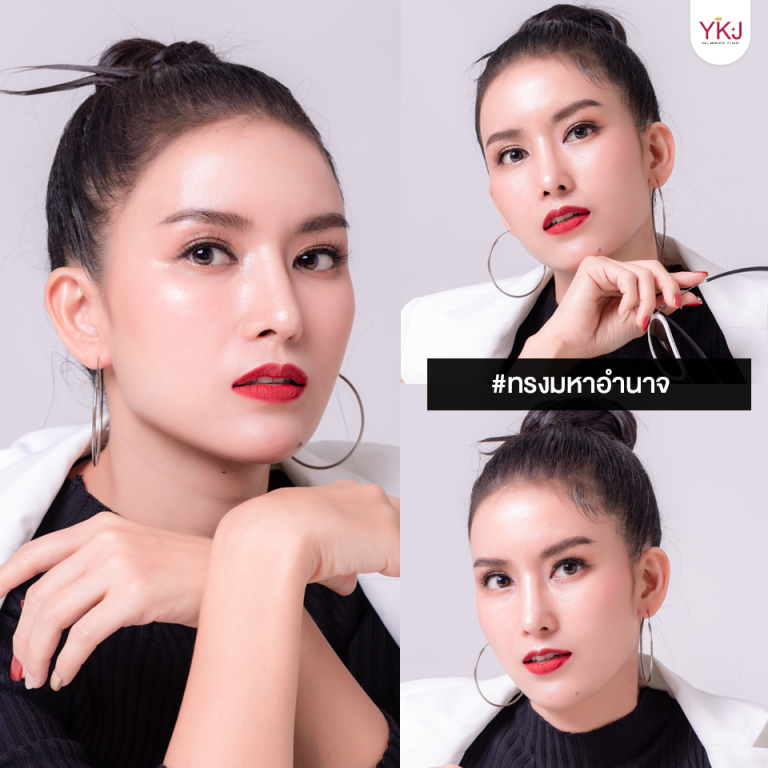
“Maha Amnat” – The Nose of Power and Authority
The Maha Amnat (มหาอำนาจ) nose shape is crafted for those who desire a strong, commanding, and dignified presence. With its sharp definition and structured elegance, this nose shape enhances facial symmetry while exuding an aura of respect and influence.
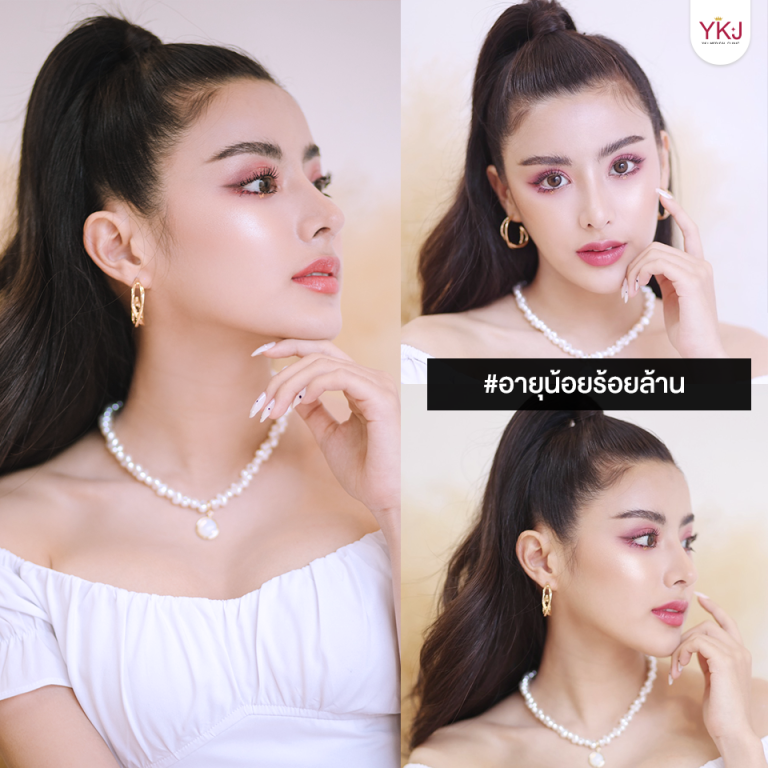
“Young Millionaire” – The Nose of Success & Youthful Elegance
The “Ayun Noi Roi Lan” nose shape is designed for those who desire a fresh, youthful, and naturally sophisticated look. This style subtly enhances facial proportions while maintaining a soft, effortless charm, making the face appear refined yet age-defying.
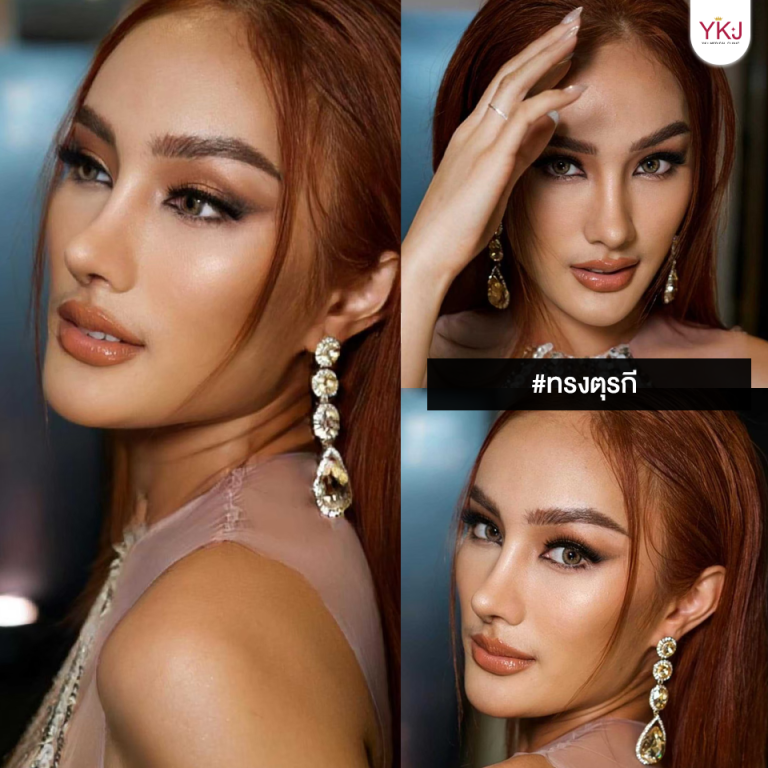
“Turkish Nose” – The Hottest Trend in Nasal Aesthetics
The “Turkish Nose” is one of the most sought-after nose shapes right now, blending elegance, sophistication, and a stylish international appeal. It is perfect for those who want a refined yet effortlessly chic look, enhancing facial harmony while maintaining a naturally striking presence.
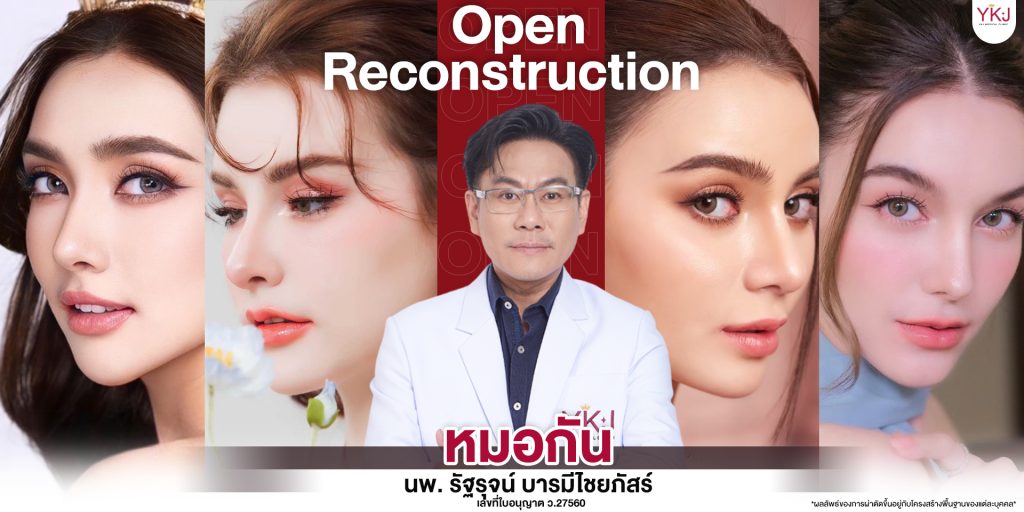
Nose Augmentation Pricing at YKJ Medical Clinic
Nose augmentation prices vary across different clinics. At YKJ Medical Clinic, the Close Rhinoplasty technique starts at 19,900 THB. The final cost depends on the materials, techniques used, as well as the client’s specific concerns and desired results.
For initial inquiries, you can reach out via online channels, or schedule a direct consultation with our doctors to discuss your needs in detail.
** If you’re interested in any topic, simply click to read more! **
1. How is Open Rhinoplasty Different from Close Rhinoplasty?
2. How Many Types of Open Rhinoplasty Are There?
3. Open Rhinoplasty with Ear Cartilage vs. Rib Cartilage – What’s the Difference?
4. 16 Common Nose Issues That Open Rhinoplasty Can Fix
5. Open Rhinoplasty Reviews at YKJ Medical Clinic
6. What Is the Silicone-Free Open Tip Technique?
7. Post-Surgery Diet – What Can You Eat After a Nose Job?
8. Where Is the Best Place for Nose Surgery? Why Choose YKJ Medical Clinic?
9. Celebrity & Influencer Video Reviews
10. FAQ – Frequently Asked Questions
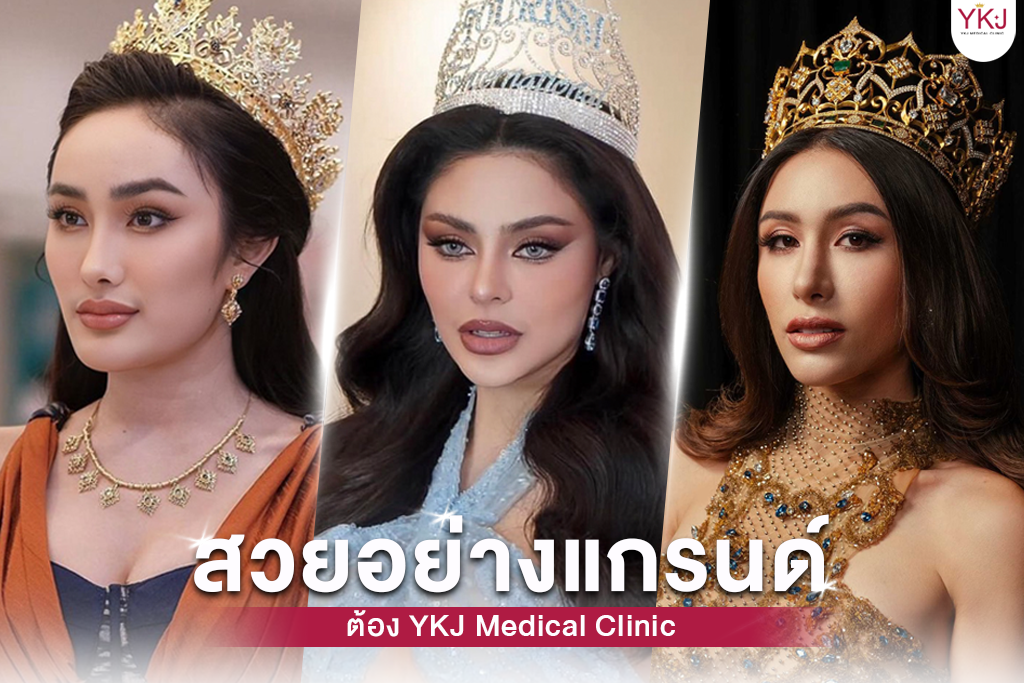
Close Rhinoplasty Program with Silicone
It is a popular nose augmentation technique in Thailand, designed to enhance the nasal bridge and lift the tip using silicone implants. The surgical incision is hidden inside one or both nostrils, ensuring no visible scars.
The silicone used is typically L-shaped, with the extended leg helping to lift the nasal tip and create a more defined projection. While this technique can effectively enhance the height and contour of the nose, it must be carefully tailored to each individual, as excessive tip elevation can increase the risk of thin nasal skin and potential implant extrusion.
This method is best suited for individuals with a good natural nasal structure who want to achieve a higher, more refined nasal bridge.
Open Rhinoplasty Program
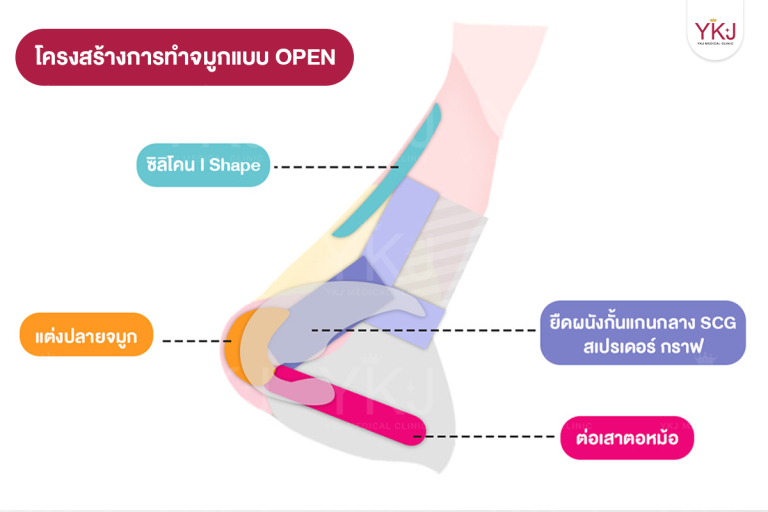
Open Rhinoplasty Program (Open Reconstruction) or Open Revision Rhinoplasty
The Open Rhinoplasty Program focuses on structural modifications, such as:
✔ Cartilage reshaping and suturing
✔ Septal extension for better support
✔ Correction of a deviated nasal septum
✔ Fixing a crooked or asymmetrical nasal structure
✔ Refining a large, bulbous nasal tip or prominent nasal hump
This technique involves making an incision at the front of the nasal septum, allowing full visibility of the internal structure for precise adjustments. The procedure utilizes the patient’s own cartilage (ear, septal, or rib cartilage) to reshape and reinforce the nasal framework.
Types of Open Rhinoplasty: Silicone-Free & Hybrid Techniques
- Silicone-Free Tip – The bridge is usually enhanced with an I-shaped silicone implant (I Shape) or footless silicone, while the tip is sculpted using natural cartilage.
- Fully Silicone-Free – No synthetic implants are used; instead, the entire nasal structure is reconstructed using the patient’s own cartilage for a natural and long-lasting result.
📌 Read more: Differences Between Open vs. Closed Rhinoplasty
🔺 ⇧ Back to Contents
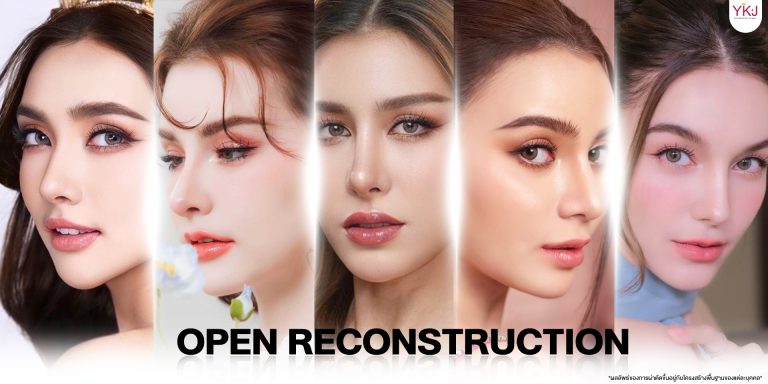
Open Rhinoplasty Program or Open Nose Surgery
The Open Rhinoplasty Program allows for tip extension and projection using septal cartilage, which serves as the primary structural material. Septal cartilage is the only cartilage in the body that is flat, smooth, and strong, making it ideal for nasal framework support.
During surgery, the doctor harvests approximately 2/3 of the septal cartilage, ensuring that the remaining structure remains intact while using the extracted portion to refine and elongate the nasal tip. This technique helps achieve a slim, extended, and more projected tip.
In addition to septal cartilage, other types of cartilage are often used for further refinements. The three most commonly used types of cartilage in Open Rhinoplasty are:
Scar Behind the Ear After 6 Months / Image of Ear Cartilage
1. Open Rhinoplasty with Septal Cartilage Extension and Ear Cartilage Tip Support
There are two incision sites in this procedure:
Columellar Incision – The standard incision is made on the nasal columella (the tissue between the nostrils) to provide full access for structural modifications.
Ear Incision for Cartilage Harvesting – An additional incision is made in the natural fold of the ear to extract ear cartilage. This incision is strategically hidden within the conchal area (middle ear curve), making it virtually invisible. A skilled surgeon ensures that only the necessary amount of cartilage is removed, preserving the natural shape of the ear.
The primary structural element for nasal elongation is the septal cartilage, which is carefully harvested from inside the nose. It is then grafted and sutured to the existing nasal septum to extend and refine the nasal structure.
This technique enhances the nasal tip projection using a silicone-free approach, allowing for greater customization and structural refinement than traditional silicone augmentation. Additionally, it reduces the risk of implant extrusion, providing a safer and more natural long-term result.
Rib Cartilage Incision (Approx. 2 cm) / Image of Rib Cartilage for Nose Augmentation
2. Open Rhinoplasty with Rib Cartilage/strong>
This technique offers a versatile solution for complex nasal corrections by utilizing rib cartilage as the primary structural material. Currently, there are three types of rib cartilage commonly used for nose augmentation:
To obtain rib cartilage for nasal reconstruction, the surgeon makes a 2 cm incision below the breastbone to extract approximately one rib segment. This segment is then divided into more than 10 pieces, with additional subdivisions into 10-20 smaller pieces, which are carefully shaped to create the nasal framework and enhance the nose’s structure.
Artificial (Synthetic) and Donated Rib Cartilage from overseas are available in various brands, qualities, and sizes, each with different characteristics. While these alternatives provide structural support for nasal reconstruction, they have some key differences compared to autologous rib cartilage (from the patient’s own body).
Polycaprolactone Mesh (PCL Mesh) is a synthetic medical material that has been widely used in the medical field for years. Recently, it has been adapted for rhinoplasty and nasal reconstruction as a substitute for natural cartilage.
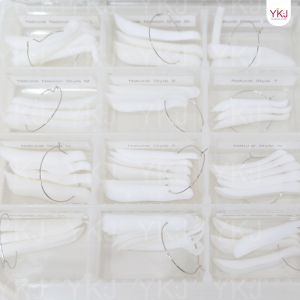
I-Shaped Silicone (Top) and Gore-Tex (Bottom) for Nose Augmentation
3. Other Types of Open Rhinoplasty Techniques
It may involve augmentation using L-shaped or I-shaped silicone implants, extending from the nasal bridge to the tip, positioned as the topmost layer of the nasal structure. This technique creates a high, sharp, and well-defined nasal bridge, while also correcting a short nasal septum to some extent.
For the tip refinement, an additional layer of Gore-Tex or ear cartilage is placed to add volume, creating a smoother, softer appearance and reducing the visibility of implant edges or seams.
However, this technique is not suitable for individuals with thin skin or a history of nasal inflammation, as it may increase the risk of tip thinning and translucency over time.
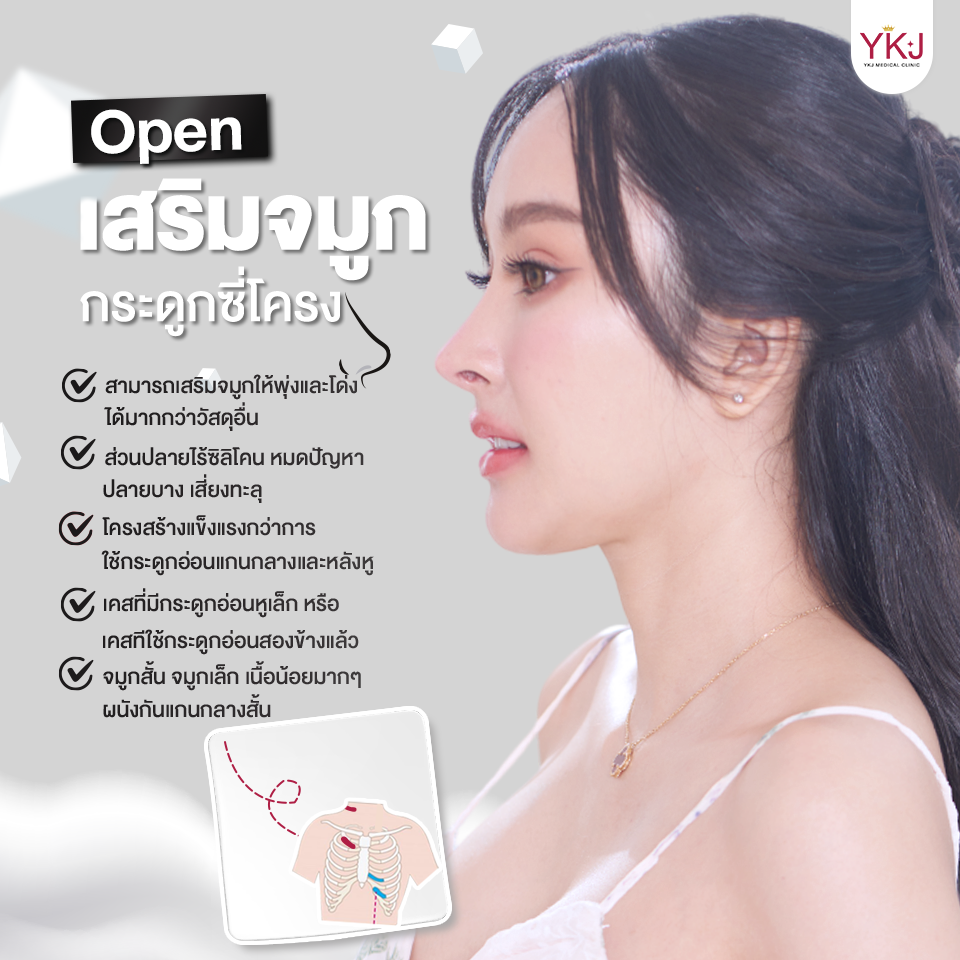
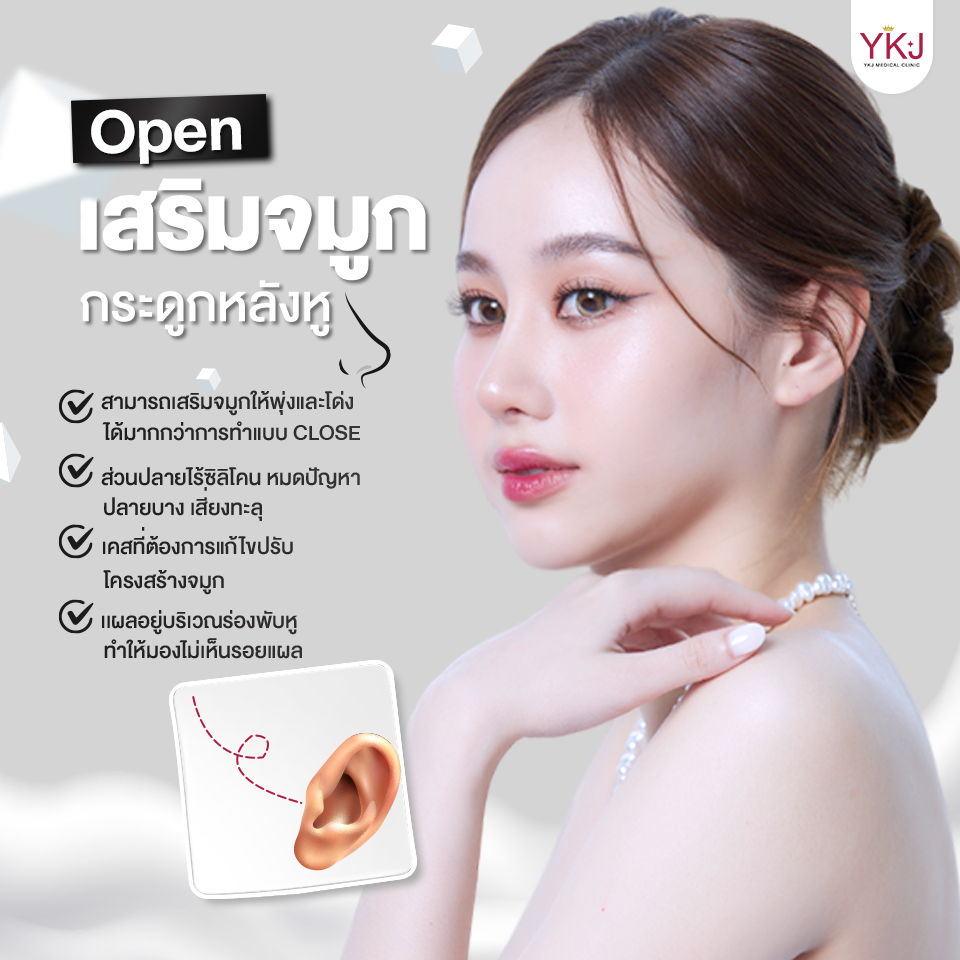
Using the body’s natural materials for nasal structure enhancement helps create a beautiful and well-balanced nose shape. However, both materials have their differences and limitations, so they must be carefully selected based on each individual’s specific concerns.
อ่านเพิ่มเติม: แก้จมูก เสริมจมูกด้วยกระดูกซี่โครง สไตล์เกาหลี
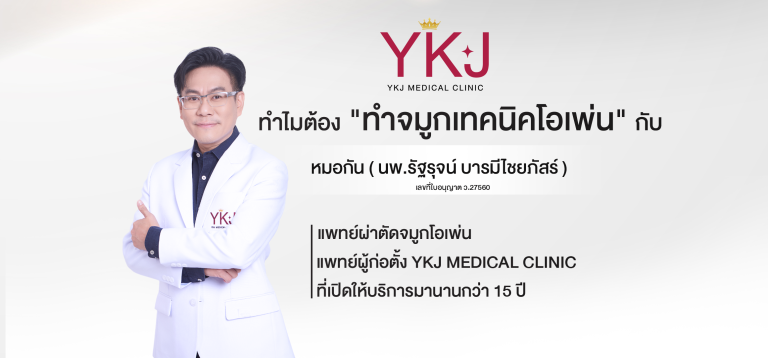
Open Rhinoplasty Can Correct a Wide Range of Nasal Issues
At YKJ Medical Clinic, Dr. Gun, with nearly 15 years of experience, specializes in Open Rhinoplasty surgery. His expertise allows for the precise correction and enhancement of various nasal concerns.
Based on extensive experience, here are the types of nasal structures that benefit most from Open Rhinoplasty:
At YKJ Medical Clinic, Dr. Gun, with nearly 15 years of experience, specializes in Open Rhinoplasty surgery. His expertise allows for the precise correction and enhancement of various nasal concerns.
Based on extensive experience, here are the types of nasal structures that benefit most from Open Rhinoplasty:
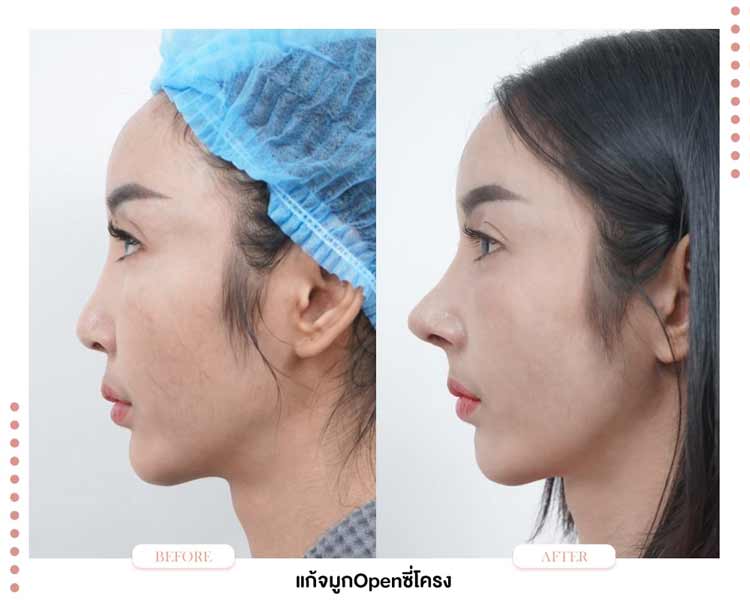
❌ ปัญหาของคนไข้
ผ่านการทำจมูกมาแล้ว 12 ครั้ง และทำแบบ Open โครงสร้างกระดูกปีกนกเสียหายหลายตำแหน่ง กระดูกอ่อนแกนกลางคดรูปตัว S ผนังกั้นแกนกลางใช้ไปแล้ว จมูกเคยทะลุปลายบาง มีพังผืดสะสมมาก โดยเพื่อนในวงการแม่ค้าออนไลน์ที่รู้จักกันซึ่งเคยมาทำจมูก Open กับหมอกันแนะนำมา
✅ วิธีรักษาของคุณหมอ
- ใช้ซี่โครงของตัวเองเพื่อแก้ไขผนังกั้นแกนกลางที่คดเอียง ด้วยเทคนิควางตอหม้อ 3 เสา เพื่อให้โครงสร้างแข็งแรงขึ้น ไม่ล้ม
- ซ่อมแซมกระดูกอ่อนปีกนกใหม่ รวมถึงกระดูกอ่อนขาหน้า จากนั้นรองกระดูกอ่อนซี่โครงปลายจมูก 5 ชั้น
- วางเนื้อเยื่อหุ้มกระดูกอ่อนปลายจมูก 2 ชั้น เหลาซิลิโคนใหม่ จากนั้นเย็บด้วยเทคนิคสลิง สะพานแขวน ทำให้ปลายพุ่งมากขึ้น
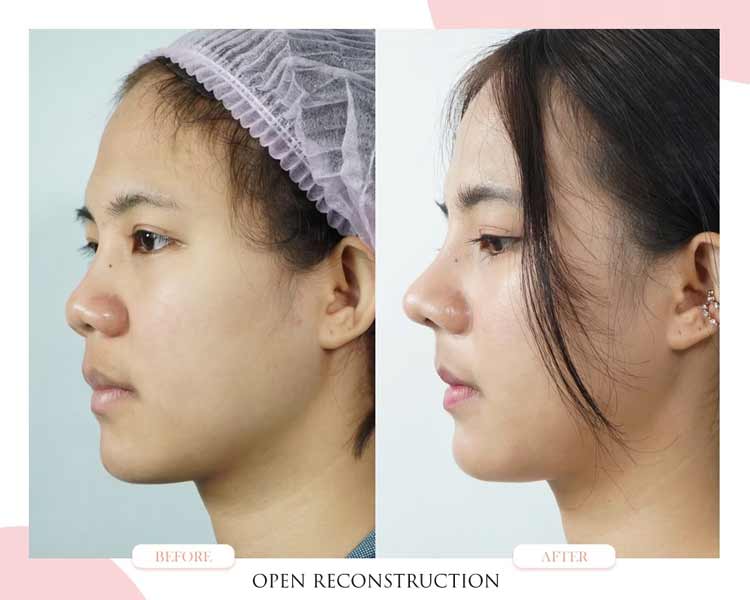
❌ ปัญหาของคนไข้
จมูกใหญ่ จมูกชมพู่ เนื้อเยอะ กระดูกปีกนกใหญ่
อ่านเพิ่มเติม: แก้จมูกใหญ่ จมูกชมพู่ “ให้เรียวสวย มีหยดน้ำ” แก้ที่ไหนดี?
✅ วิธีรักษาของคุณหมอ
- แก้ไขจมูกหมูหรือจมูกชมพู่ให้เล็กลงด้วยการตัดไขมันปลายจมูก ตัดเเต่งกระดูกอ่อนปลายจมูก Latteral Spanning Suture
- เทคนิคการเย็บจั่วบ้านให้แคบลง วาง Batten Graft วางกระดูกอ่อน แล้วยืดผนังกั้นเเกนกลางจมูก
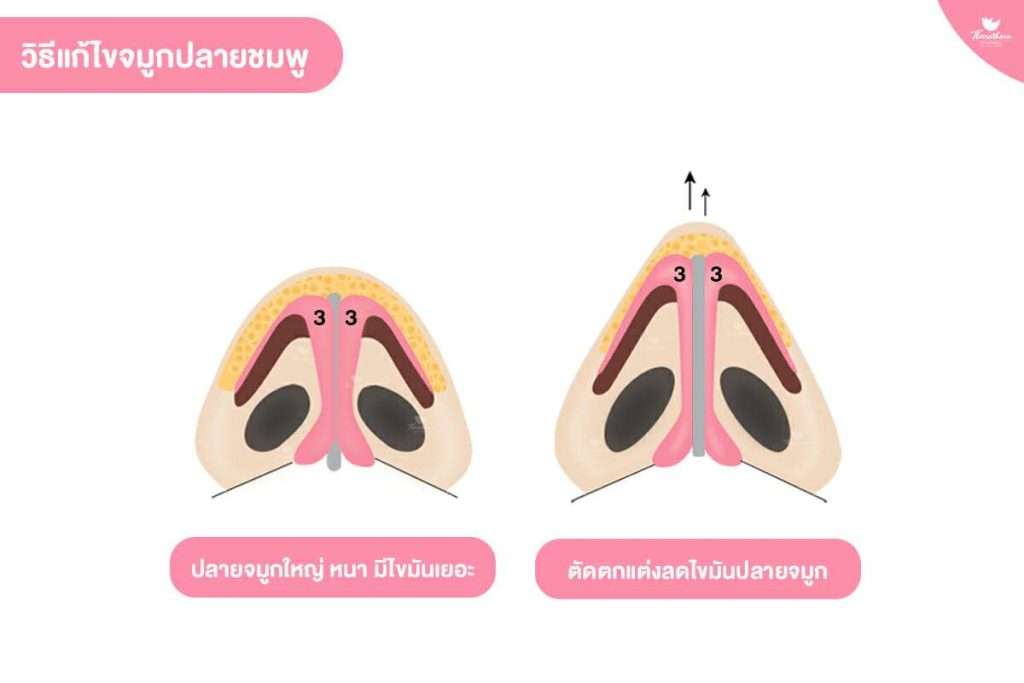
วิธีแก้ไขปลายจมูกชมพู่ เนื่องจากปลายจมูกใหญ่ ไขมันเยอะ จึงใช้วิธีตัดตกแต่งลดไขมันปลายจมูก
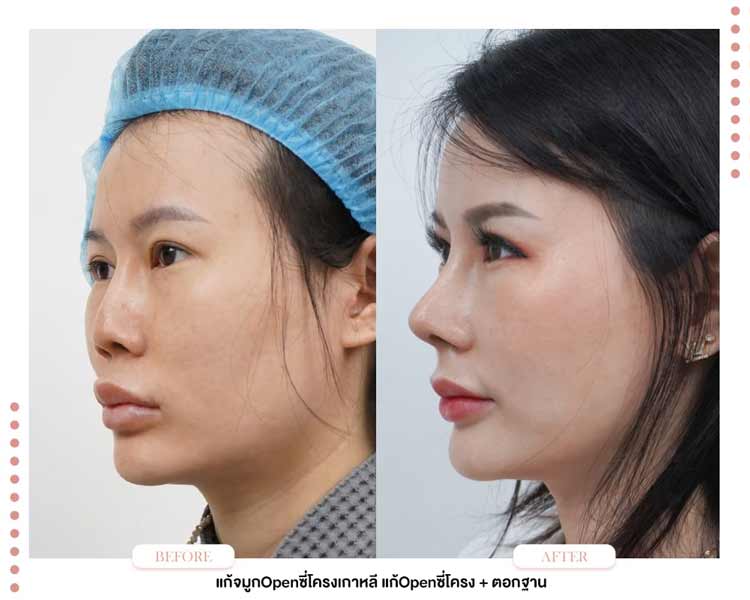
❌ ปัญหาของคนไข้
คนไข้ผ่านการทำจมูกมาแล้ว 5 ครั้ง และครั้งสุดท้ายบินไปทำที่เกาหลีเพื่อแก้จมูก Open โดยใช้กระดูกซี่โครงตัวเอง แต่ผลลัพธ์ที่ได้คือโครงสร้างด้านในทรุดตัว ทำให้ปลายจมูกงุ้ม มีปัญหาการหายใจไม่คล่อง
✅ วิธีรักษาของคุณหมอ
- ความยากของเคสที่เคยผ่าตัดแบบ Open มาแล้วคือเกิดพังผืดสะสมเเละ โครงสร้างถูกรื้อ
- คุณหมอกันแก้ไขโดยการทำซี่โครงซ้ำอีกครั้ง และรื้อโครงสร้างใหม่ทั้งหมด
- แกนกลางด้านในคด ตัดแต่งกระดูกอ่อนแกนกลาง ปรับให้เล็กลง ด้วยเทคนิควาง Spreader Graft ฝั่งซ้ายและฝั่งขวา วางตั้งเสาเเกนกลางใหม่ 1 คู่ และวาง Columellar strut ด้วยกระดูกอ่อนซี่โครง จากนั้นวางกระดูกอ่อนซี่โครงที่บริเวณปลาย
- ความยากคือการเลาะซี่โครงที่เคยทำมาจากเกาหลีออกโดยไม่ให้กระดูกอ่อนแกนกลางเสียหาย ยืดจมูกให้ยาวและพุ่งขึ้นได้ถึง 1 cm.
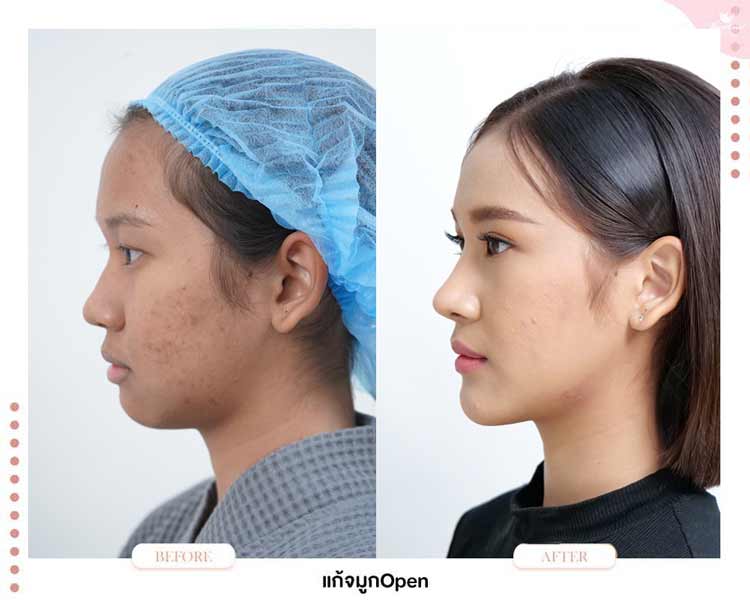
❌ ปัญหาของคนไข้
คนไข้อยากหน้าเหมือน “วินเทอร์” วง “Aespa” และไม่เคยทำศัลยกรรมมาก่อน การเสริมหรือการปรับทำบนพื้นฐานของโครงหน้าที่มีมาแต่กำเนิด จมูกเดิมมีความเอียง ฐานกว้าง และมีฮัมพ์ (ปัญหาดั้งจมูกเตี้ย ปลายจมูกแบน แกนกลางคด คอลาเมล่าสั้น ฮัมพ์ใหญ่ ฐานกว้าง )
อ่านเพิ่มเติม: ฮัมพ์ (HUMP) กระดูกฮัมพ์ คืออะไร?
✅ วิธีรักษาของคุณหมอ
- ตอกตัดฮัมพ์ ปรับกระดูกบริเวณฐานจมูกให้แคบลง
- ปรับกระดูกอ่อนบริเวณแกนกลาง โดยคำนึงถึงฟังค์ชั่นการหายใจของจมูก แล้วยืดผนังกั้น
- วาง Batten Graft วาง Columellar วางกระดูกอ่อน และเนื่องจากคนไข้อายุยังน้อย จึงยังไม่สามารถใช้กระดูกอ่อนซี่โครงตัวเองได้
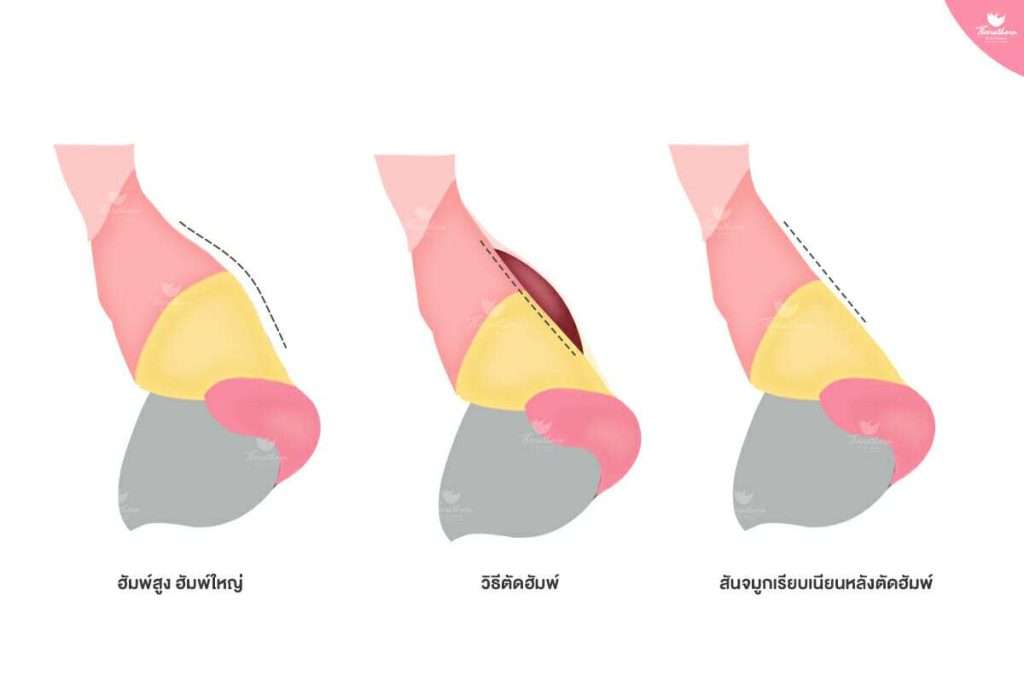
วิธีแก้ไขปลายจมูกชมพู่ เนื่องจากปลายจมูกใหญ่ ไขมันเยอะ จึงใช้วิธีตัดตกแต่งลดไขมันปลายจมูก
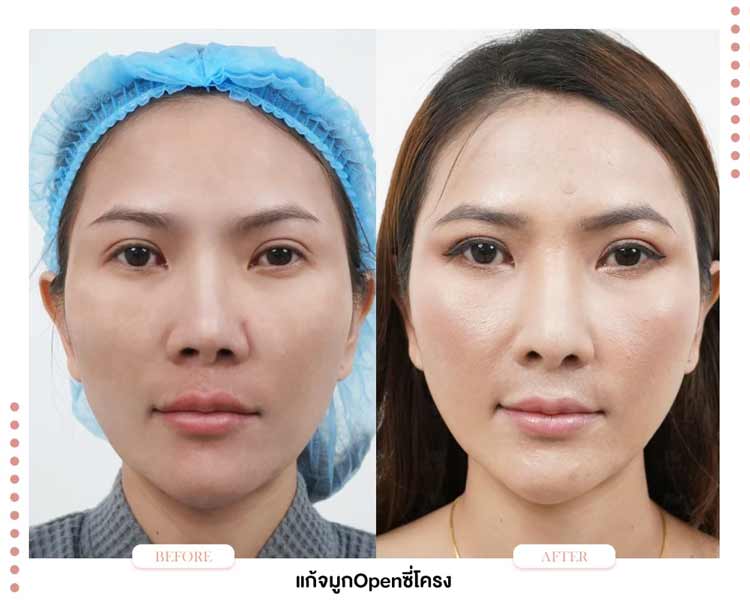
❌ ปัญหาของคนไข้
โครงหน้าเบี้ยวมาก มีผลให้ แกนจมูกมีความคดผิดรูป กระดูกใหญ่ แกนกลางคด มีฮัมพ์สูง ฐานจมูกกว้าง ปลายจมูกแบนเนื้อน้อย
✅ วิธีรักษาของคุณหมอ
- แก้ไขโดยใช้เทคนิค Open ตอกตัดฮัมพ์ ตอกฐาน ยืดผนังกั้นแกนกลาง วาง Batten Graft
- รองปลายด้วยกระดูกอ่อนหลังหู
- วาง Columellar strut จากนั้นเย็บ Interfoot, Intercrus และ Interdome โดยปรับผนังกั้นแกนกลางที่คดเอียง ด้วย Scrolling Technique
อ่านเพิ่มเติม: เคล็ด (ไม่) ลับ เสริมจมูกยังไงให้ดูเด็ก(คนไข้มีปัญหาซิลิโคนเอียง)
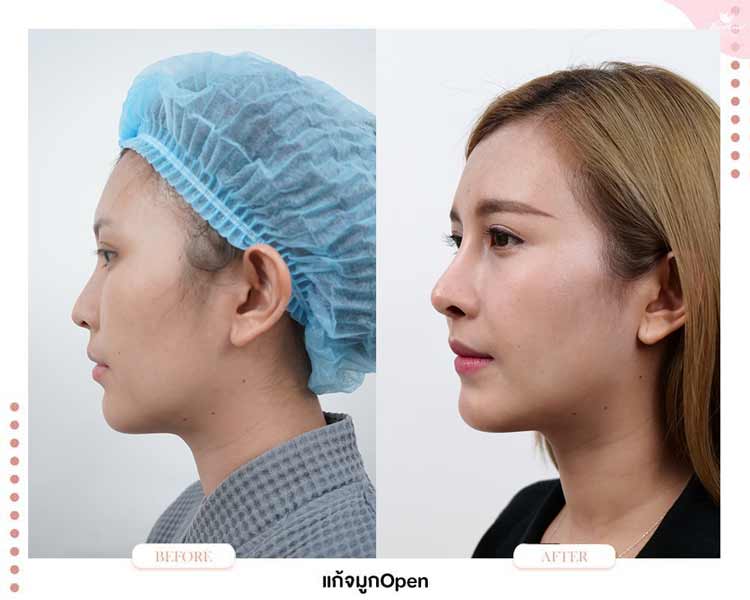
❌ ปัญหาของคนไข้
มาอัพความสวย จัดทั้งเสริมจมูก Open เเละเสริมคาง ปรับรูปหน้าด้วยฟิลเลอร์ ไปพร้อมกันเลยทีเดียว
อ่านเพิ่มเติม: ไขข้อสังสัย ร้อยไหมจมูก เสริมจมูกได้ไหม?
✅ วิธีรักษาของคุณหมอ
- แก้ไขโดยใช้เทคนิค Open ตอกตัดฮัมพ์ ตอกฐาน ยืดผนังกั้นแกนกลาง
- วาง Batten Graft จากนั้นรองปลายด้วยกระดูกอ่อนหลังหู
- วาง Columella Strut จากนั้นเย็บ Interfoot, Intercrus และ Interdome โดยปรับผนังกั้นแกนกลางที่คดเอียง ด้วย Scrolling Technique
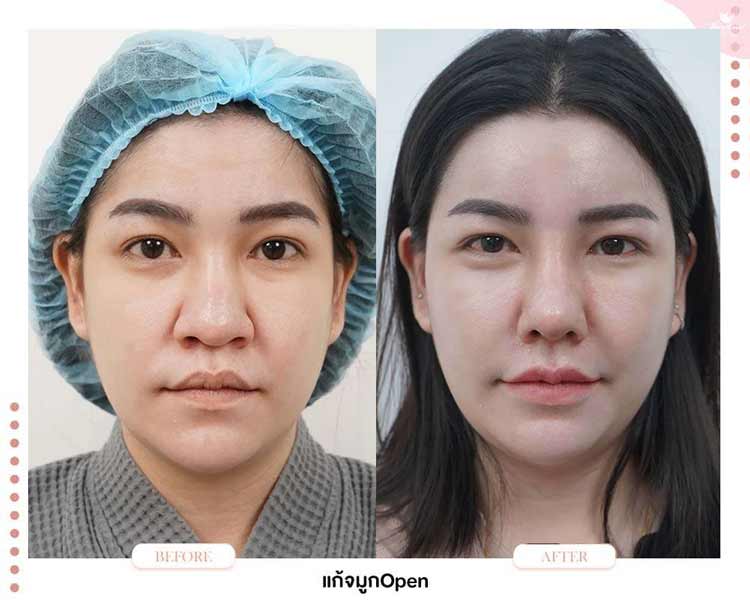
❌ ปัญหาของคนไข้
ฉีดซิลิโคนเหลว เมื่อ 10 ปีก่อน นานวันเกิดการอักเสบ มีอาการแดงทั้งจมูก และซิลิโคนเหลวไหลไปเรื่อยๆ จนจมูกผิดรูป ไม่เป็นรูปเป็นร่างเหมือนแต่ก่อน ล่าสุดจมูกบวมดูใหญ่เหมือนงวงช้าง
อ่านเพิ่มเติม: เคยฉีดฟิลเลอร์หรือสารเหลวที่จมูกจะแก้ทั้งที ทำไมค่าใช้จ่ายสูง
✅ วิธีรักษาของคุณหมอ
- ตัดเลาะพังผืดและสารเหลว ยืดผนังกั้นแกนกลาง
- ตั้งฐาน วาง Columella Strut จากนั้นวางกระดูกอ่อนบริเวณปลายจมูก
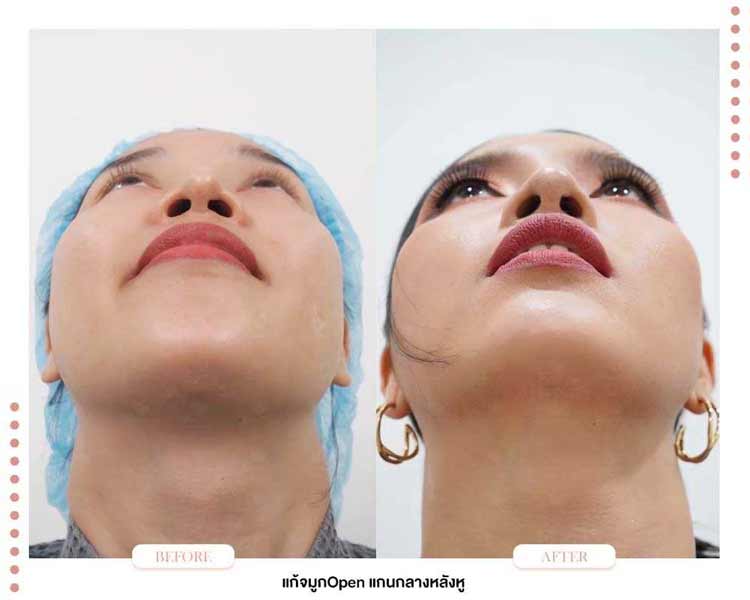
❌ ปัญหาของคนไข้
มีปัญหาปลายจมูกบางใส จมุกมีลักษณะงุ้ม และแกนกลางคด
อ่านเพิ่มเติม: 10 สัญญาณเตือนก่อน ” ซิลิโคน ” ทะลุ!!
✅ วิธีรักษาของคุณหมอ
- ยืดผนังกั้นแกนกลาง จากนั้นวาง Batten Graft แล้วรองปลายจมูกด้วยกระดูกอ่อนหลังหู
- วาง Columella Strut จากนั้นนำเนื้อเยื่อในจมูกมาซ่อมผิวบริเวณปลายจมูกที่บางใส
อ่านเพิ่มเติม: แก้ Open เกาหลีหมดเกือบล้านพัง!!!…ปลายบางใกล้ทะลุ
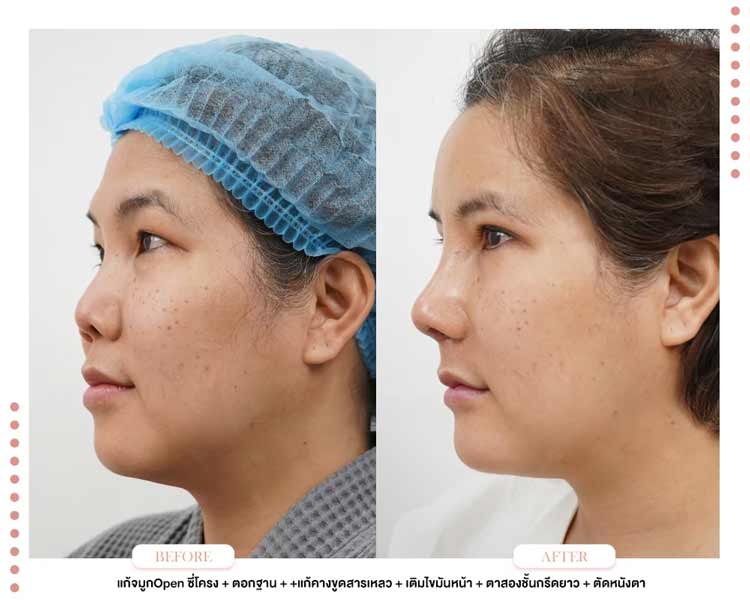
❌ ปัญหาของคนไข้
จมูกเคยเกิดอุบัติเหตุ ทำให้จมูกผิดรูป และมีลักษณะบุ๋มอย่างรุนแรง
✅ วิธีรักษาของคุณหมอ
- ตัดเลาะพังผืดและสารเหลว จากนั้นยืดผนังกั้นแกนกลางจมูก
- วางตอหม้อ 1 เสา แล้ววาง Columella Strut จากนั้นวางกระดูกอ่อนบริเวณปลายจมูก 3 ชั้น
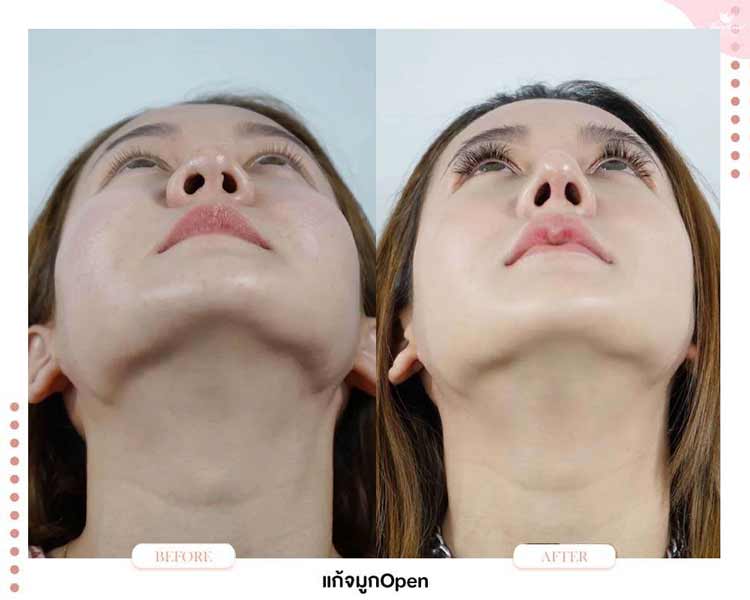
❌ ปัญหาของคนไข้
- คนไข้ผ่านการเสริมจมูกมาแล้ว 2 ครั้ง ครั้งแรกเป็นการเสริมจมูกด้วยซิลิโคนปกติ
- คนไข้พื้นฐานเป็นคนปลายจมูกใหญ่ ทำให้ยังไม่ได้ทรงจมูกตามที่ต้องการ
- การแก้จมูกครั้งที่ 2 มีการศึกษาข้อมูลมาเป็นอย่างดี โดยหากต้องการลดขนาดความใหญ่ของจมูก ต้องทำแบบ Open เท่านั้น
- คนไข้ตัดสินใจเลือกทำจมูกแบบ Open กับคลินิกชื่อดังแห่งหนึ่ง แต่สิ่งที่ได้คือรูจมูกผิดรูป มีกระดูกอ่อนโผล่ออกมาจากผนังกั้น
- สาเหตุเกิดจากพังผืดรั้งขากระดูกอ่อนส่วนหน้า และขากระดูกอ่อนขาด ทำให้มีกระดูกอ่อนโผล่ออกมาจากผนังกั้น เป็นสาเหตุทำให้รูจมูกผิดรูป
- คนไข้ใช้กระดูกอ่อนหลังหูไปแล้ว 1 ข้าง
อ่านเพิ่มเติม: เสริมจมูกแล้ว รูจมูกเบี้ยว เกิดจากอะไร ต้องแก้หรือไม่?
✅ วิธีรักษาของคุณหมอ
- คุณหมอกันแก้จมูกครั้งนี้โดยยืดผนังกั้นแกนกลางจมูกที่คดเอียง
- วาง Batten Graft จากนั้นทำกระดูกอ่อนขาหน้าขึ้นมาใหม่
- ซ่อมกระดูกอ่อนปีกนกที่ขาด ใกล้ทะลุ จากนั้นวางกระดูกอ่อนบริเวณปลายจมูก
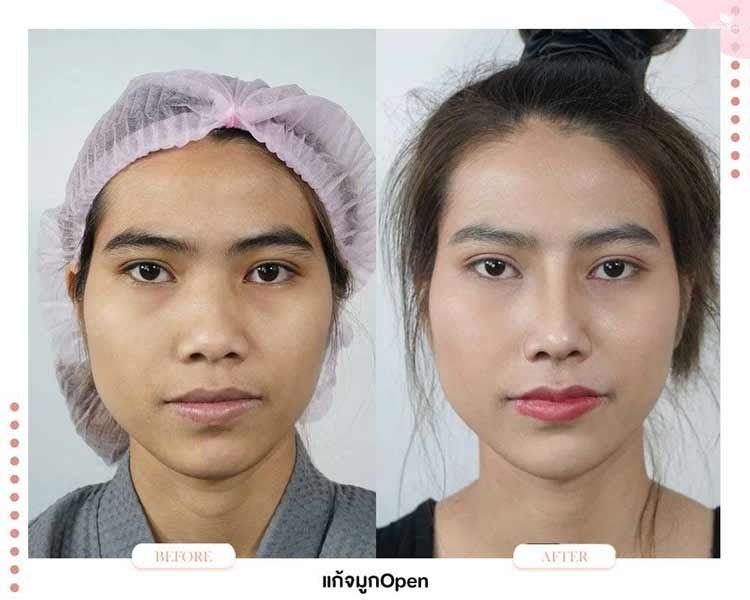
❌ ปัญหาของคนไข้
- คนไข้มีโครงหน้าที่เบี้ยวมาก มีผลทำให้แกนจมูกมีความคด ผิดรูป
- คนไข้มีกระดูกแกนกลางคด มีฮัมพ์สูง มีฐานจมูกกว้าง
- คนไข้มีปลายจมูกแบนและเนื้อน้อย
✅ วิธีรักษาของคุณหมอ
- แก้ไขโดยเทคนิค Open ตอกตัดฮัมพ์ ตอกฐาน ยืดผนังกั้นแกนกลางจมูก
- วาง Batten Graf จากนั้นรองปลายจมูกด้วยกระดูกอ่อนหลังหู
- วาง Columella Strut เย็บ Interfoot, Intercrus และ Interdome
- ปรับผนังกั้นแกนกลางที่คดเอียง ด้วย Scrolling Technique
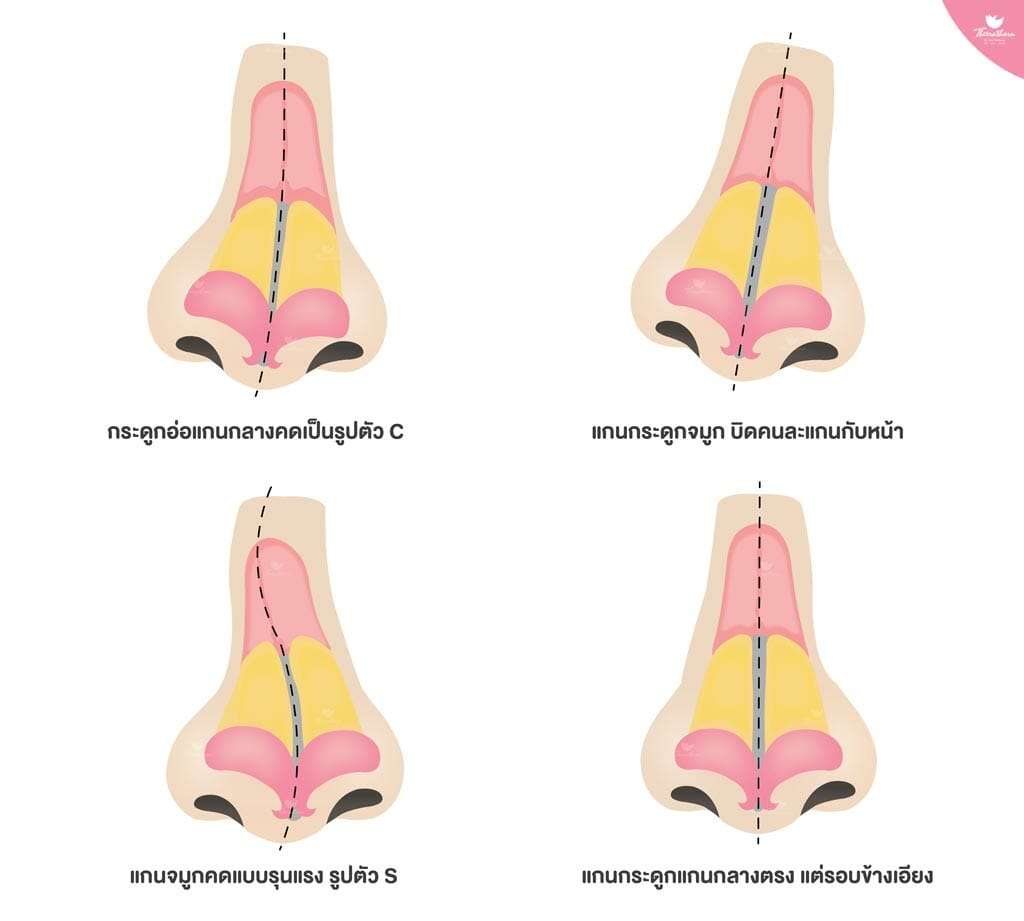
ลักษณะโครงสร้างจมูกคดเอียงในรูปแบบต่างๆ ได้แก่ แกนกลางคดเป็นรูปตัว S และแกนกลางตรงแต่รอบข้างเอียง
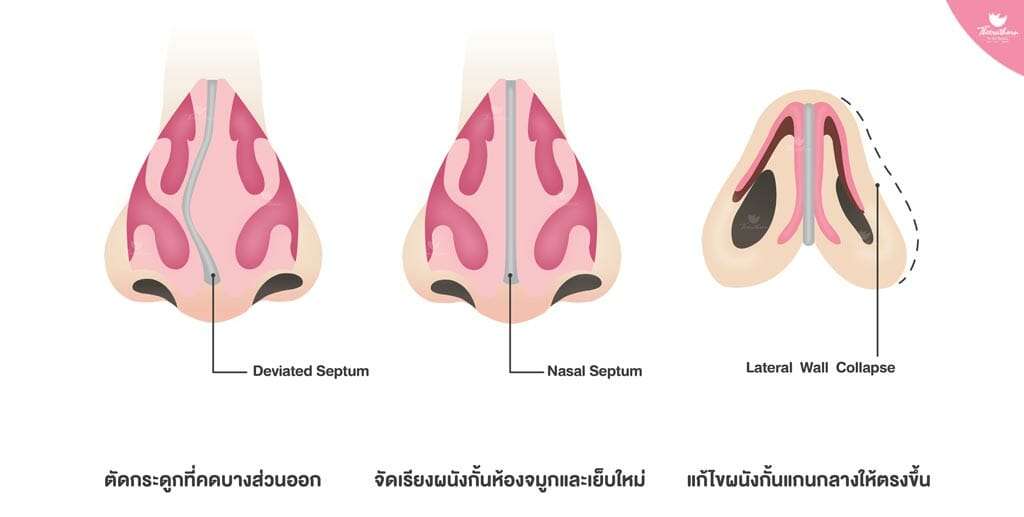
วิธีการแก้ไขจมูกคดเอียง
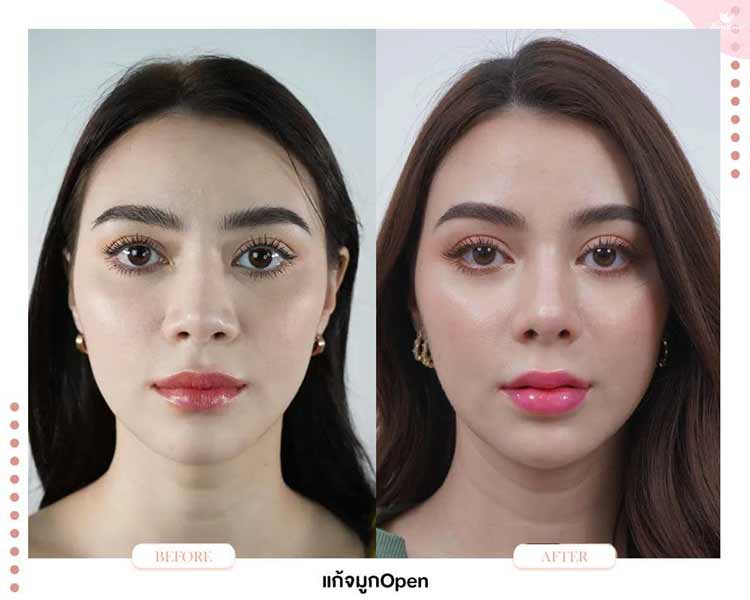
❌ ปัญหาของคนไข้
- คนไข้มีฐานจมูกที่ใหญ่ รวมถึงมีฮัมพ์
- แม้ว่าจะเคยผ่านการทำจมูกแบบ Open และเคยเหลาฮัมพ์มาก่อนแล้วก็ตาม จมูกก็ยังดูสั้น ดูไม่หวาน ไม่สโลป
✅ วิธีรักษาของคุณหมอ
- คุณหมอแก้ไขโดยการยืดผนังกั้นแกนกลางจมูก ตอกฐาน แล้ววาง Columella Strut
- วาง Batten Graft จากนั้นใช้เทคนิคเย็บให้กระดูกอ่อนปีกนกยาวและพุ่งขึ้นกว่าเดิม
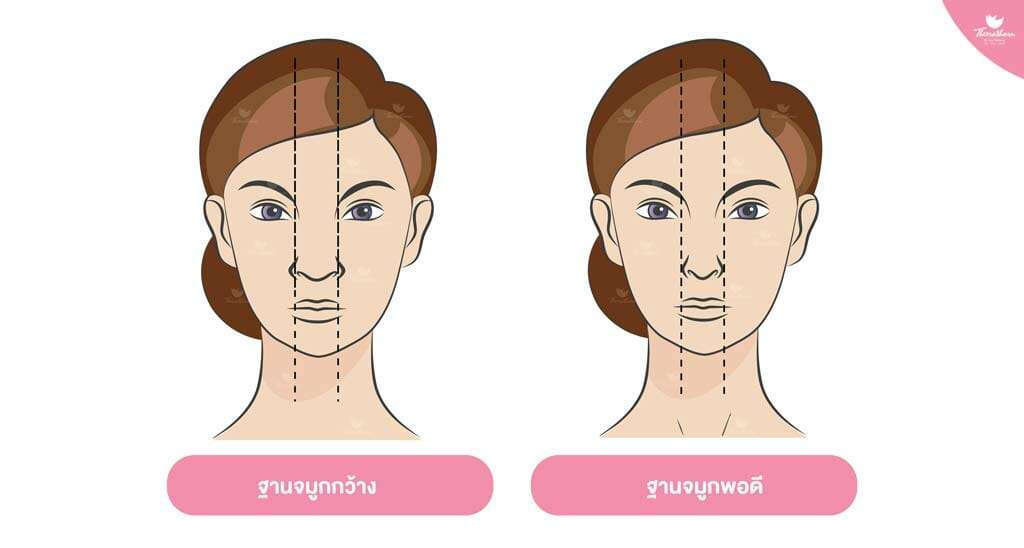
ลักษณะของคนที่ฐานจมูกกว้าง และฐานจมูกพอดี
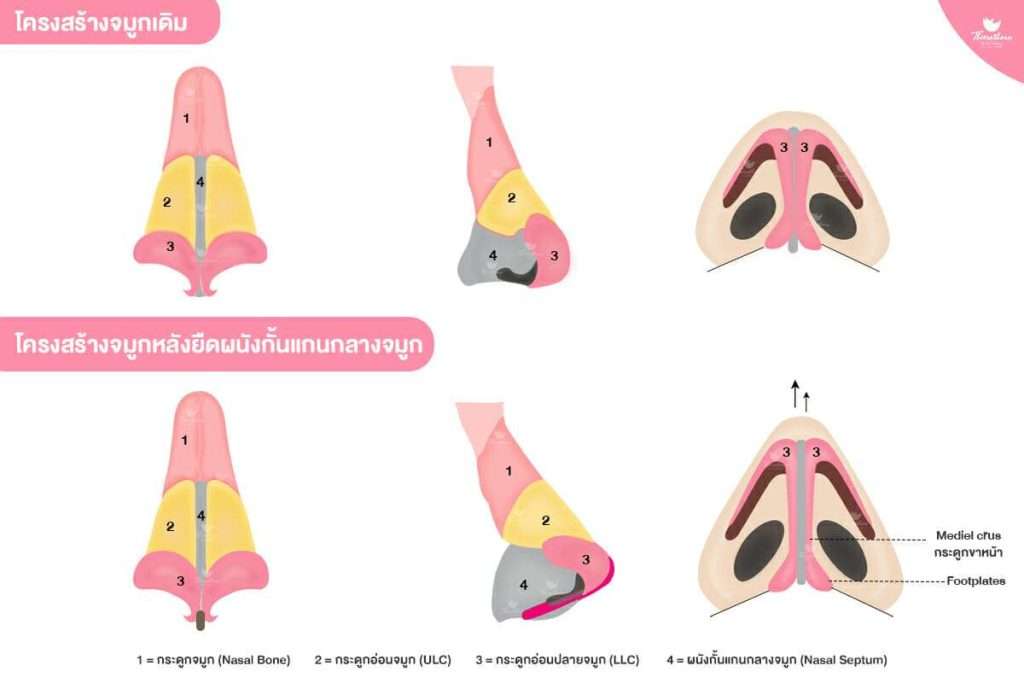
โครงสร้างจมูกทั้งก่อนและหลังยืดผนังกั้นแกนกลางจมูก
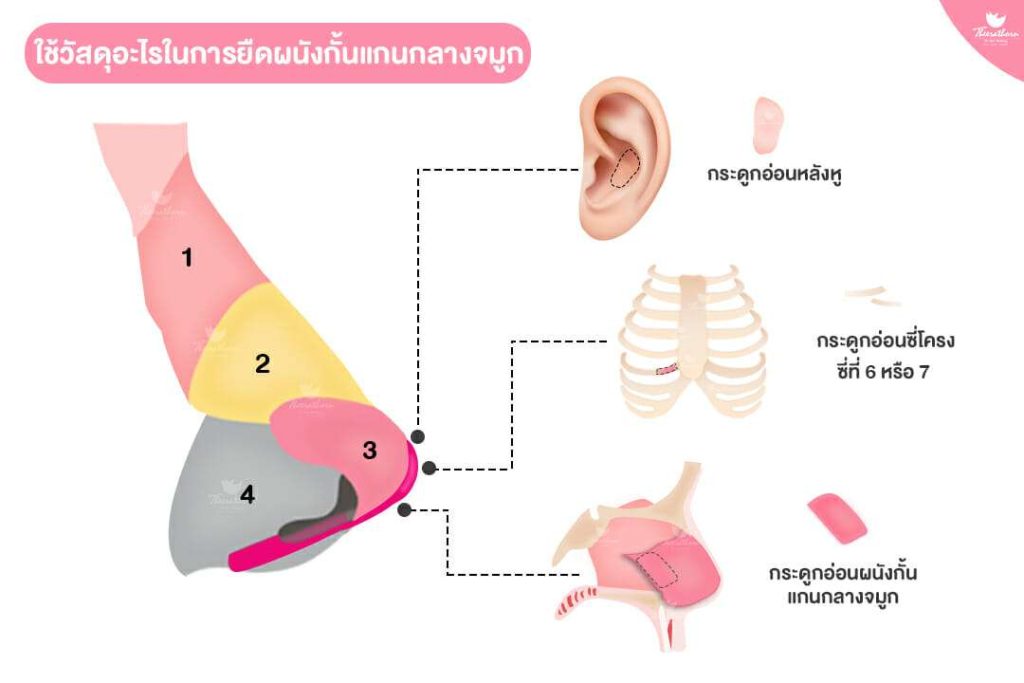
วัสดุที่ใช้ยืดผนังกั้นแกนกลางจมูก ได่แก่ กระดูกอ่อนหลังหู, กระดูกอ่อนซี่โครงซี่ที่ 6 หรือ 7, กระดูกอ่อนผนังกั้นแกนกลางจมูก
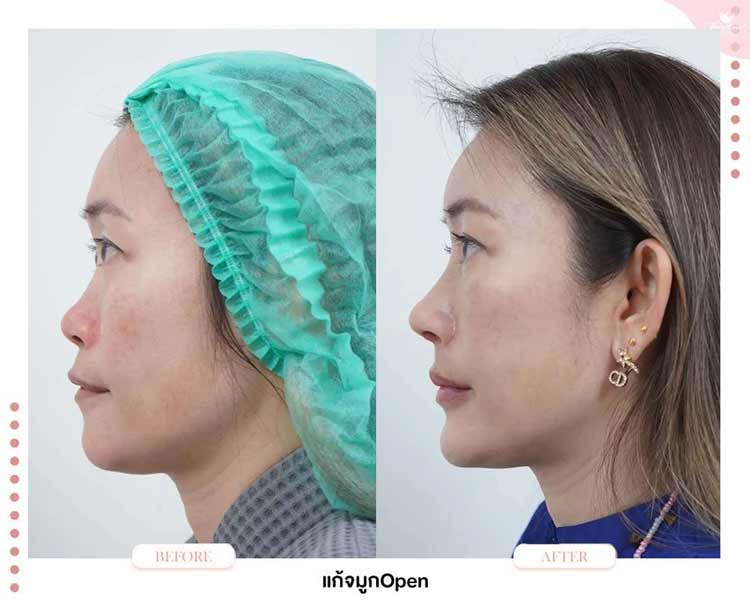
❌ ปัญหาของคนไข้
คนไข้มีจมูกแกนกลางที่คด สันจมูกเตี้ย ปลายจมูกงุ้มสั้น มีเนื้อจมูกน้อยเเต่กำเนิด
อ่านเพิ่มเติม: ทรงจมูกที่เหมาะกับคนเนื้อน้อย มีไหม ทรงไหนบ้าง?
✅ วิธีรักษาของคุณหมอ
- แก้ไขโดยการยืดผนังกั้นแกนกลาง วาง Batten Graft
- วาง Columella Strut จากนั้นวางกระดูกอ่อนหลังหูที่ปลายจมูก 5 ชั้น
อ่านเพิ่มเติม: ปัญหาเนื้อน้อย จมูกเหิน หลายคลินิกไม่รับแก้ จนมาเจอ “หมอกัน”
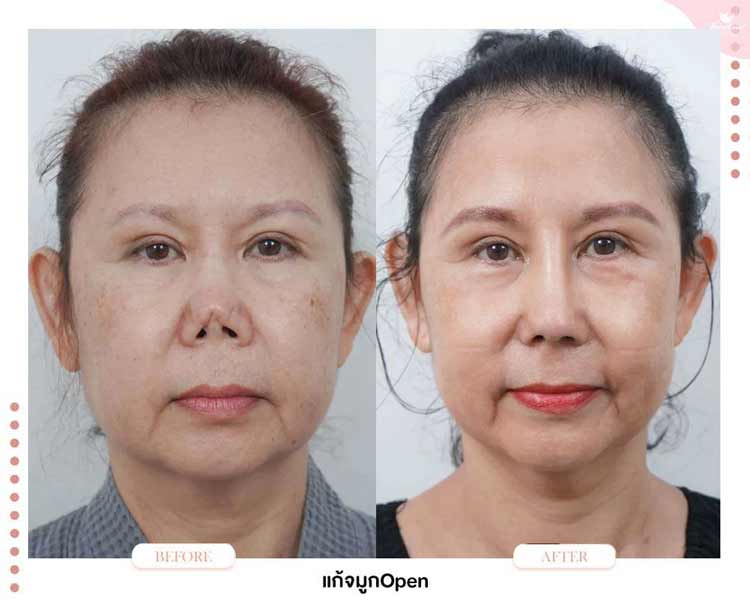
❌ ปัญหาของคนไข้
- คนไข้มีปัญหาจมูกหดรั้งอย่างรุนแรง รูจมูกไม่เท่ากัน
- คนไข้มีแผลบริเวณปลายจมูก มีแกนจมูกที่คดและสั้น
อ่านเพิ่มเติม: เสริมจมูก กระดูกอ่อนทะลุ อันตรายไหม ลดความเสี่ยงได้อย่างไรบ้าง?
✅ วิธีรักษาของคุณหมอ
- แก้ไขด้วยกระดูกอ่อนซี่โครงตัวเอง โดยตั้ง Spreader Graft แล้ววางตอหม้อ 3 เสา จากนั้นต่อกระดูกอ่อนปีกนกทั้ง 2 ข้าง
- วางกระดูกอ่อนซี่โครง จากนั้นซ่อมรูจมูกทั้ง 2 ข้าง วาง Columella Strut
- ผ่าตัดแก้รูจมูกด้วยเทคนิค Composite Graft
- วางกระดูกอ่อนซี่โครงบริเวณปลายจมูก 10 ชั้น จากนั้นเหลาซิลิโคนแล้ววางให้สูงเป็นพิเศษ รองปลายด้วยเนื้อเยื่อเทียม 2 ชั้น
- รองเยื่อหุ้มซี่โครงบริเวณปลายจมูก 3 ชั้น ยืด Columella Flap จากนั้นดึงขาตั้งบริเวณปลายจมูกให้ยาวขึ้น
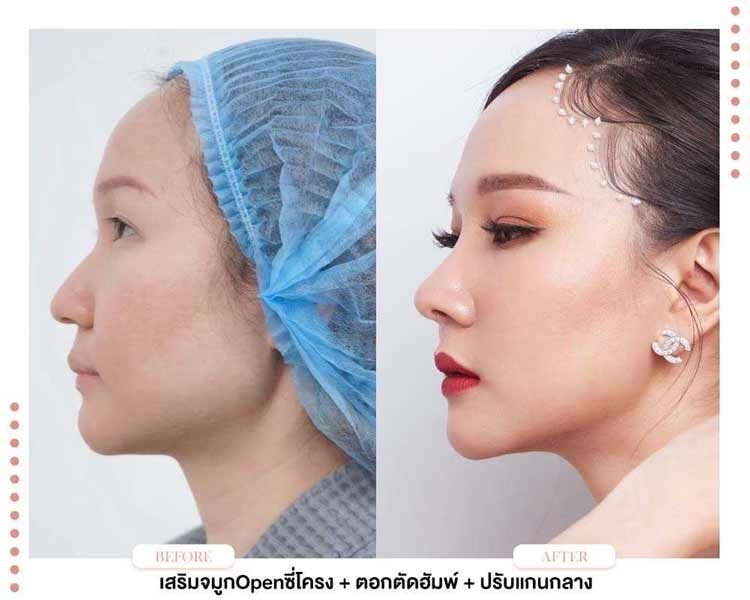
❌ ปัญหาของคนไข้
คนไข้มีปลายจมูกที่งุ้ม แกนกลางคดเยอะ ผนังกั้นแกนกลางจมูกอ่อน และมีฮัมพ์
✅ วิธีรักษาของคุณหมอ
- วาง Spreader Graft ทั้งสองข้าง จากนั้นตั้ง Columella Strut ขนาดใหญ่
- วางกระดูกอ่อนซี่โครงบริเวณปลายจมูก 3 ชั้น จากนั้นตอกกระดูกให้แคบลง แล้วตอกตัดฮัมพ์
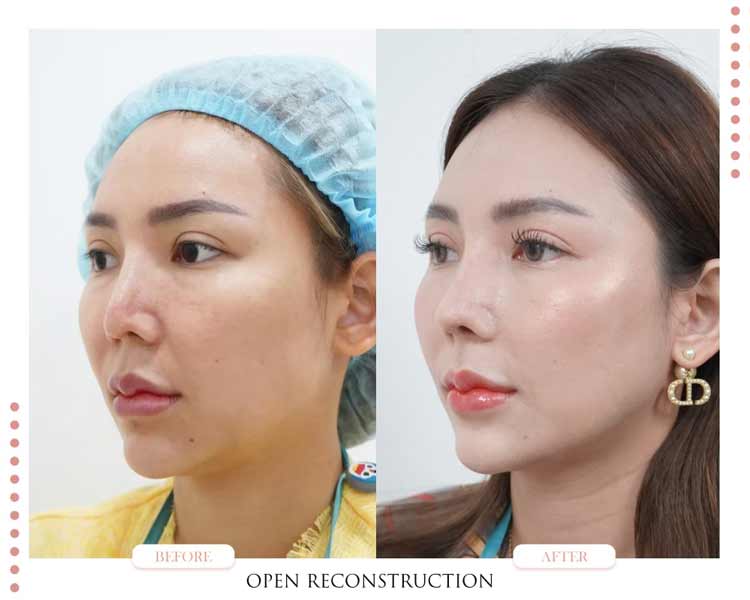
❌ ปัญหาของคนไข้
- คนไข้ผ่านการทำจมูกมา 4 ครั้ง ทำแบบซิลิโคนมา 2 ครั้ง ครั้งที่ 3 เป็นการแก้ไขโดยใช้กระดูกอ่อนหลังหู
- แต่คนไข้จมูกเบี้ยว จึงกลับไปแก้ที่เดิมอีกครั้งโดยวิธีเดิม ใช้กระดูกอ่อนหลังหูอันเดิม แต่ได้ปัญหาเพิ่มขึ้นคือหายใจไม่สะดวก รูจมูกตีบ โดยเฉพาะข้างขวา
- สาเหตุเกิดจากกระดูกอ่อนแกนกลางคด จมูก Internal Valve แคบ กระดูกปีกนกข้างซ้ายถูกซิลิโคนทับ มีลักษณะพับลงล่าง และกระดูกขาหน้าด้านขวาขาดหายไป
✅ วิธีรักษาของคุณหมอ
- คุณหมอยืดผนังกั้นแกนกลาง จากนั้นวาง Batten Graft SCG
- ซ่อมกระดูกอ่อนปีกนกด้านซ้าย สร้างกระดูกอ่อนขาหน้าบริเวณด้านขวาขึ้นมาใหม่
- วางกระดูกอ่อนปลายจมูก 4 ชั้น
Beyond Nose Augmentation: Nose Reduction Surgery
In addition to nose augmentation or revision surgery for enhancing height and aesthetics, there is also a procedure called Nose Reduction Surgery, designed to reduce the overall size of the nose.
This procedure is ideal for individuals whose nose appears disproportionately large compared to their facial structure. The surgical approach varies depending on the specific concerns and nasal structure of the patient, with multiple techniques available to achieve the best results.
📌 Learn more about: Nose Reduction Surgery – Solutions for Large or Wide Noses
Silicone-Free Tip Open Rhinoplasty Technique
The Silicone-Free Tip Open Rhinoplasty is performed in combination with open structure correction, using ear cartilage or rib cartilage to reshape and refine the nose.
This technique is ideal for individuals who:
✔ Have a prominent nasal hump
✔ Already have a naturally high nasal bridge
✔ Prefer not to use silicone implants on the nasal bridge
In cases where Gore-Tex is needed, it can be used as an alternative specialized tissue material for additional contouring.
For patients with a significantly high nasal hump, the surgeon will perform bone shaving (osteotomy) to remove the excess curvature. The reduced bone structure is then smoothed and reshaped, resulting in a gentle slope with a more natural, refined appearance.
Silicone-Free Tip Open Rhinoplasty for Drooping or High Nasal Tips
This technique is also suitable for individuals with a drooping nasal tip or an already high bridge. The procedure involves:
🔹 Open rhinoplasty combined with hump reduction (osteotomy) to lower the bridge height
🔹 Tip refinement using ear cartilage or rib cartilage, ensuring a natural and well-balanced shape.
This method provides a safer, long-lasting, and natural-looking result, especially for those looking to avoid synthetic implants.
อ่านเพิ่มเติม: แก้จมูกที่ไหนดี? คลินิกแก้จมูกที่ดีที่สุด 2023 แก้จมูกพังให้กลับมาสวยอีกครั้ง
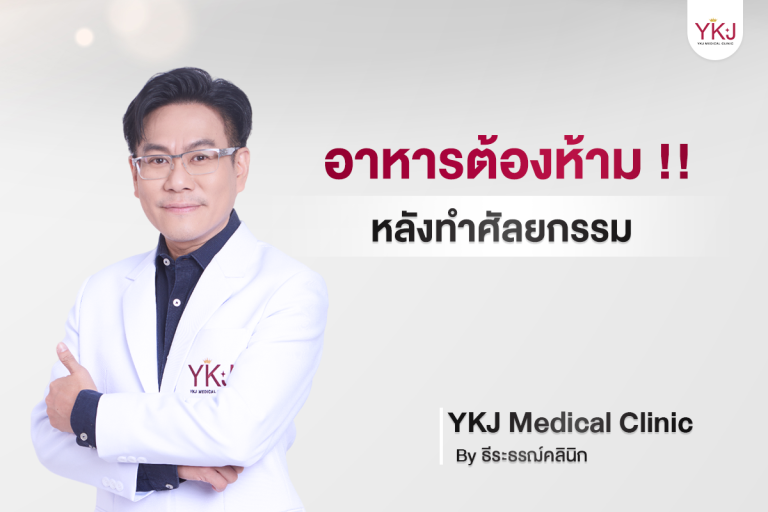
Post-Rhinoplasty Diet Guidelines
For the first 7 days after nose surgery, it is recommended to consume only soft foods and avoid dietary supplements and vitamins, such as collagen, detox supplements, and vitamin complexes. (After 7 days, supplements can be resumed as normal.)
Foods to Avoid After Rhinoplasty:
❌ Spicy foods – Can cause excess mucus production, which may affect the wound.
❌ Salty foods with high sodium content – Including foods with fish sauce or excessive seasoning, as they can cause fluid retention, prolonged swelling, and increase the risk of infection.
❌ Alcohol and cigarettes – Can delay healing and increase complications.
❌ Fermented foods – Such as shrimp paste, kimchi, fermented bamboo shoots, fermented salmon, and Thai fermented fish (pla ra).
❌ Raw or undercooked foods – Including sashimi, raw seafood, raw beef salads (larb, koi), and any dishes containing raw meat.
❌ All types of seafood – To prevent allergic reactions and reduce the risk of infection.
❌ Certain fruits – Durian, jackfruit, and longan should be avoided as they contain high gas content and may cause mouth ulcers or inflammation.
❌ Eggs of all kinds – Including chicken eggs, duck eggs, and any egg-based dishes.
Following these dietary restrictions can help reduce swelling, speed up recovery, and minimize complications after nose surgery.
Recommended Foods After Rhinoplasty
Main Dishes That Can Be Eaten After Rhinoplasty
- Fried Rice – Pork/Chicken (without egg)
- Noodles – Pork/Chicken/Beef (avoid adding seasonings like fish sauce or vinegar)
- Stir-fried Basil (Pad Krapow) – Pork/Chicken/Beef (without fried egg)
- Stir-fried Chinese Kale – With crispy pork, sliced pork, or minced pork
Garlic Stir-fry – Pork/Chicken/Beef - Mixed Vegetables Stir-fry – Pork/Chicken/Beef
- Sweet and Sour Stir-fry – Pork/Chicken/Beef
- Hainanese Chicken Rice, Red Pork Rice, Crispy Pork Rice, Braised Pork Leg Rice (without egg)
- Clear Soup with Winter Melon, Vermicelli, Minced Pork, and Shiitake Mushrooms (avoid egg tofu and seaweed)
- Stewed Pork/Chicken/Beef with Rice
- Steamed Fish (Seabass, Tilapia, Snakehead, Ruby Fish, Catfish) with Soy Sauce
- Fried Chicken from – KFC, Texas Chicken, Chester’s Grill, McDonald’s, Bonchon, Five Star Grilled Chicken (avoid pickled radish, fermented vegetables, seafood dishes, and eggs)
- Suki, Shabu, BBQ Pork (avoid pickled vegetables, seafood, and eggs)
- Japanese Food – Ramen, Fried Chicken Karaage, Gyoza, Curry Rice (avoid raw fish, pickled radish, pickled vegetables, seafood, and eggs)
Herbal Soup (Kaeng Liang) (without shrimp paste, fermented fish sauce, or shrimp) - Spicy Thai Salads (Larb, Nam Tok, Mushroom Soup, Spicy Broth Soup) (avoid fermented fish sauce, fermented bamboo shoots, dried shrimp, raw meat, and additional seasonings like fish sauce or vinegar)
- Vegetable Salad (without eggs) (use clear dressing)
- Stir-fried Morning Glory
- Braised Duck, Braised Pork Belly
- Chicken Galangal Soup (Tom Kha Gai)
- Steak – Pork/Chicken/Beef
- Sandwiches – With sausage, shredded pork, ham, and cheese (avoid chili paste containing shrimp paste and imitation crab sticks made from seafood)
- Spaghetti – Tomato Sauce, Carbonara
Following these food guidelines can help prevent inflammation, reduce swelling, and promote better healing after nose surgery.
Desserts That Can Be Eaten After Rhinoplasty
Thai Desserts
- Tako (Coconut Pudding)
- Kalamae (Thai Caramel Candy)
- Crispy Krong Krang (Thai Crunchy Dessert)
- Krong Krang in Coconut Milk
- Sago with Sweet Corn
- Khao Taen (Rice Cracker)
- Bua Loy (Glutinous Rice Balls in Coconut Milk) (without egg)
- Sticky Rice with Black Beans
- Khao Tom Mud (Sticky Rice Banana Wrap)
- Sweetened Mung Beans
- Coconut Jelly
- Khanom Krok (Thai Coconut Pancakes)
- Thai Banana in Coconut Milk & Other “Boiled in Coconut Milk” Desserts
- Tub Tim Krob (Water Chestnuts in Coconut Milk)
- Look Choup (Mung Bean Thai Sweets)
- Syrup-Soaked Thai Desserts
- Thai Dessert in Iced Syrup (Loy Kaew)
- Khanom Piak Poon (Black Jelly Dessert)
- Khanom Chan (Layered Thai Dessert)
- Khanom Thuai (Steamed Coconut Milk Pudding)
❌ Avoid egg-based Thai desserts such as Thong Yip, Thong Yod, and Foi Thong (Golden Egg Yolk Sweets).
Bakery & Western Desserts
- Cakes
- Bread
- Cookies
- Banoffee
- Fruit Tart
- Pudding
- Chocolate
- Brownies
- Bingsu (Korean Shaved Ice)
- Shaved Ice Desserts
- Crepes (without egg filling)
- Fruit Jam
- Ice Cream
Fruits
✅ All fruits are allowed (except durian, jackfruit, and longan, which contain high gas content and may cause mouth ulcers or inflammation).
Following these dessert guidelines can help ensure smooth recovery and minimize any risks of inflammation or irritation after rhinoplasty.
Beverages That Can Be Consumed After Rhinoplasty
- Fruit Juices
- Smoothies
- Soy Milk, Soybean Milk
- Tea, Coffee
- Fermented Milk Drinks (Avoid cow’s milk as it may trigger allergies.)
- Pumpkin Juice, Centella Asiatica Juice, Coconut Water (Highly recommended)
These beverages help promote healing, reduce inflammation, and provide essential nutrients for a smooth recovery after nose surgery.
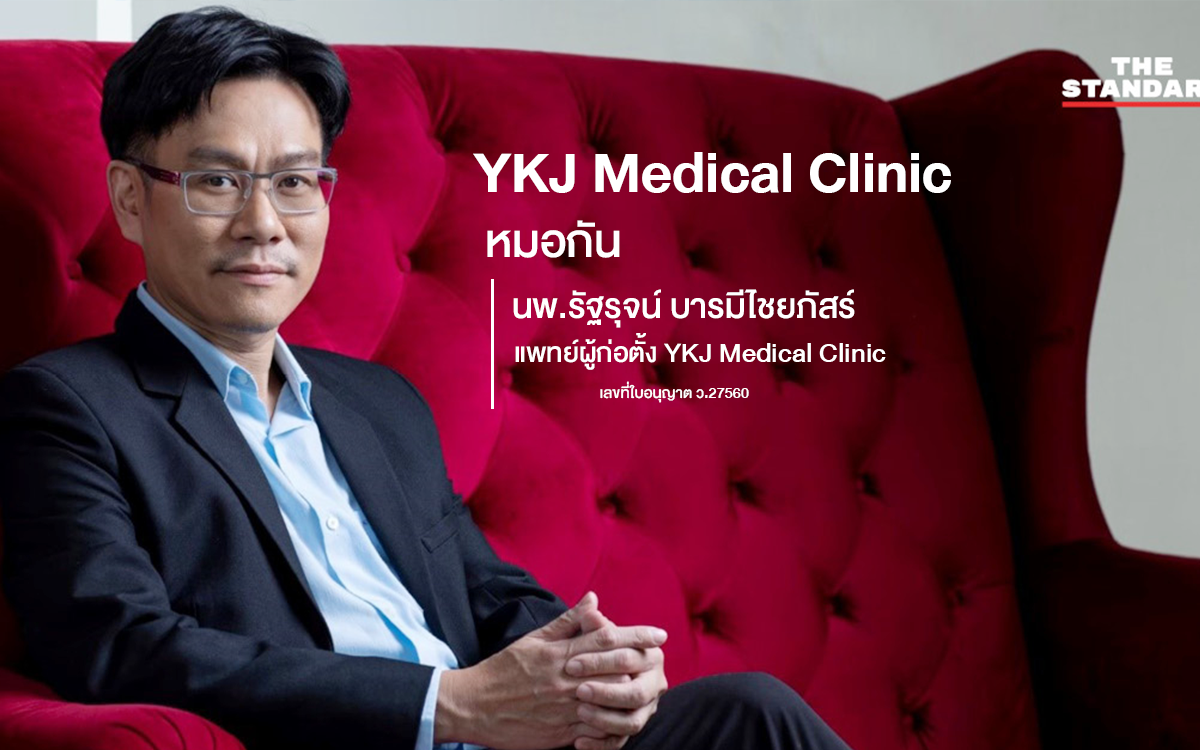
หมอกัน หรือ นพ.รัฐรุจน์ บารมีไชยภัสร์ แพทย์ผ่าตัดปรับโครงสร้างจมูกแบบ Open Reconstruction
คุณหมอกันเป็นผู้เริ่มทำจมูกแบบโอเพ่นในยุคแรกๆ ของไทย ในสมัยที่ยังไม่มีใครรู้จักเทคนิคโอเพ่น
คุณหมอได้มีการศึกษาและผสมผสานศาสตร์และศิลป์ในการวิเคราะห์รูปหน้า รูปทรงจมูก ให้รับกับรูปหน้า ตามหลัก Fibonacci ratio อัตราส่วนทองคำ เพื่อให้ได้ใกล้เคียงตามความต้องการของคนไข้ โดยยึดหลัก การออกแบบให้ดูดีขึ้นแต่ยังคงความเป็นอัตลักษณ์ของตนเองอยู่ ปรับเปลี่ยนโดยไม่เสียความเป็นตัวเองไป เพราะผู้หญิงทุกคนมีความสวยของตนเองอยู่แล้ว
ในการเสริมด้วยเทคนิคโอเพ่นซี่โครง เป็นการนำซี่โครงมาประมาณ 1 ซี่ จากนั้นทำการแบ่งย่อยเป็น 16-20 ชิ้น ทำให้เพียงพอต่อการตกแต่งและแก้ไขโครงสร้าง ดังนั้นไม่จำเป็นต้องใช้กระดูกอ่อนหลังหู
แผลโอเพ่นซี่โครงมีโอกาสเป็นคีลอยด์ ดังนั้นควรป้องกันไว้ก่อน หลังจากแผลเริ่มปิดให้หลีกเลี่ยงการแกะสะเก็ดแผลและทายาลดรอย
อ่านเพิ่มเติม: บทความคีลอยด์ป้องกันและรักษาอย่างไร?
เสริมโอเพ่นสามารถทำได้ทั้งแบบใส่ซิลิโคนและไม่ใส่ซิลิโคน โดยส่วนใหญ่แพทย์ที่ YKJ Medical Clinic จะใส่ซิลิโคนเพียง 20-30% บริเวณสันจมูก หรือในบางเคสที่มีสันอยู่แล้วสามารถทำแบบไร้ซิลิโคน หรือสามารถทำโดยใส่กอร์เท็กซ์บริเวณสันได้เช่นกัน
- เนื้อเยื่อเทียม(Alloderm) เป็นวัสดุที่สังเคราะห์ขึ้นมีลักษณะคล้ายฟองน้ำ ใช้เสริมปลายจมูกหรือกระตุ้นการสร้างเนื้อเยื่อและสามารถใช้ในรายที่ผิวบางหรือเสริมเพิ่มเพื่อป้องกันผิวหนังทะลุ ใช้กันแพร่หลายทั้งในไทยและต่างประเทศ แต่ในระยะยาวเนื้อเยื่อเทียมอาจมีการยุบตัว ทำให้ปลายดูดรอปลงได้
- กระดูกอ่อนหลังหู เป็นวัสดุที่นำมาจากตัวคนไข้เอง มีความแข็งแรง ทำให้โอกาสแพ้น้อย ไม่เกิดการยุบตัวในระยะยาว ดูเป็นธรรมชาติ สามารถเสริมและปรับแต่งปลายจมูกได้มากกว่าเนื้อเยื่อเทียม
เสริมจมูกแบบไร้ซิลิโคนสามารถทำได้ด้วยเทคนิคโอเพ่น โดยการเสริมแบบไร้ซิลิโคนจะเหมาะกับคนที่มีปลายจมูกงุ้มหรือสันจมูกสูงอยู่แล้ว โดยคุณหมอจะทำเทคนิคโอเพ่นร่วมกับการตอกตัดฮัมพ์เพื่อลดความสูงบริเวณสัน และตกแต่งปลายด้วยกระดูกอ่อนหลังหู หรือกระดูกอ่อนซี่โครง
เสริมจมูกแบบโอเพ่นมีโอกาสทะลุ ขึ้นอยู่กับเทคนิคและความรู้ของแพทย์ โดยที่ แพทย์ผู้ผ่าตัด จะปรับแต่งโครงสร้างด้วยเทคนิค ใส่ซิลิโคนเพียง 20-30% เพื่อไล่เคริฟ์บริเวณสันจมูกเท่านั้น
หลังเสริมจมูกเพื่อหลีกเลี่ยงนํ้าเข้าแผลและก่อให้เกิดการติดเชื้อ ควรงดสระผมไปจนกว่าแผลจะแห้งสนิท หรือตามคำแนะนำของแพทย์
หลังเสริมจมูกสามารถอยู่ได้ยาวนาน
เสริมจมูกแบบปิด (Close Rhinoplasty) เปิดแผลเล็กด้านในในจมูก เป็นการเสริมด้วยซิลิโคนเพียงอย่างเดียว เหมาะกันคนที่มีปัญหาจมูกไม่มาก ส่วนการเสริมจมูกแบบโอเพ่น (Open Rhinoplasty) เป็นการเปิดแผลบริเวณฐานจมูก ทำให้เห็นโครงสร้างทั้งหมด สามารถแก้ไขปัญหาได้หลากหลายรูปแบบ
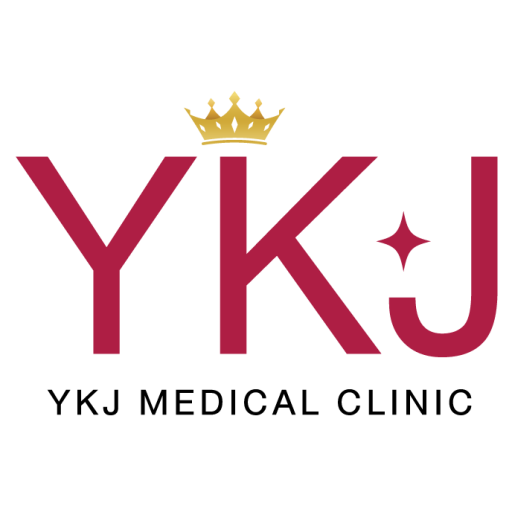
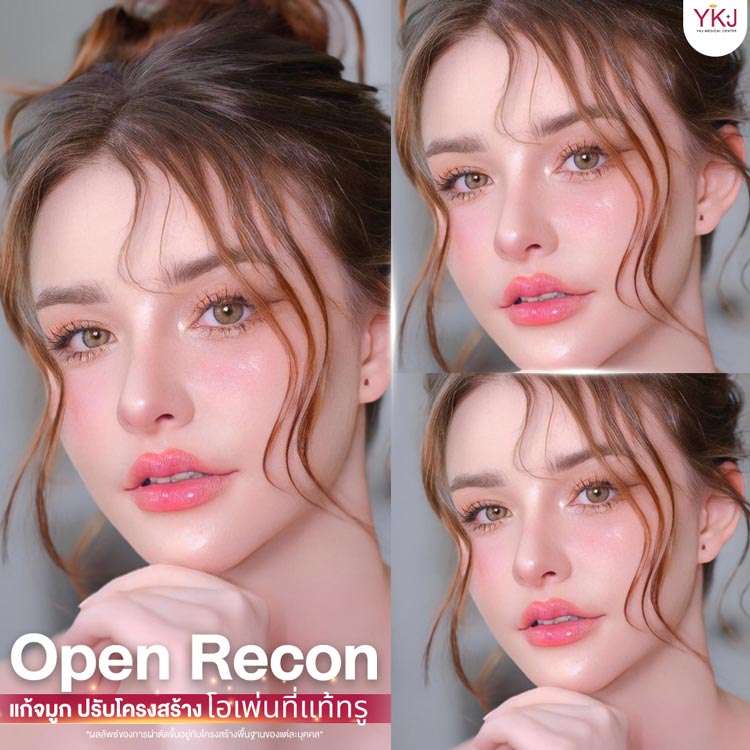
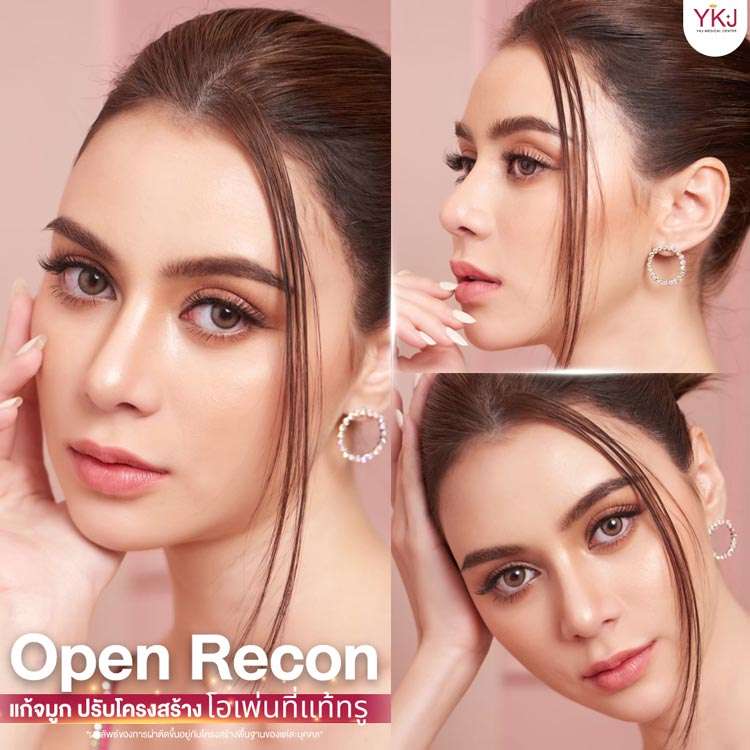
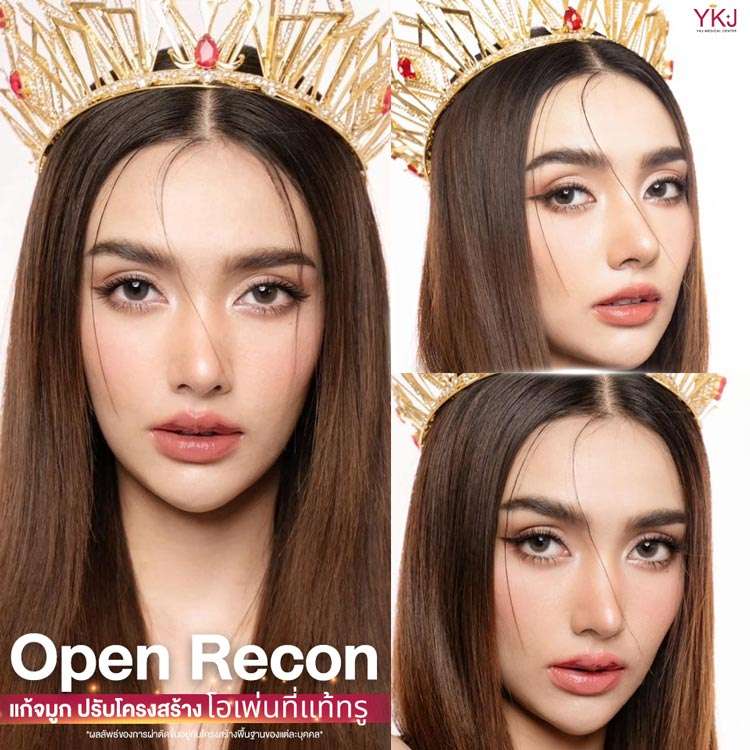
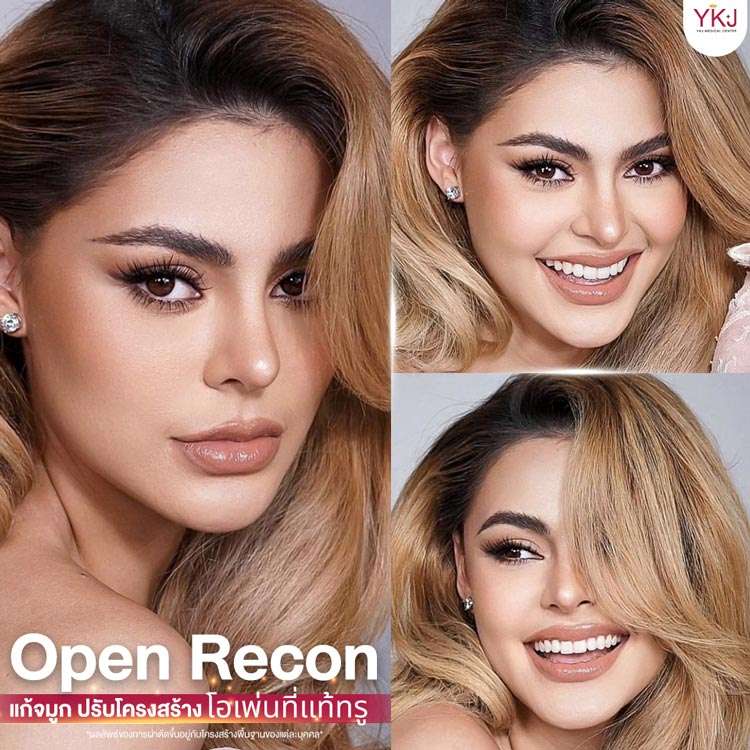
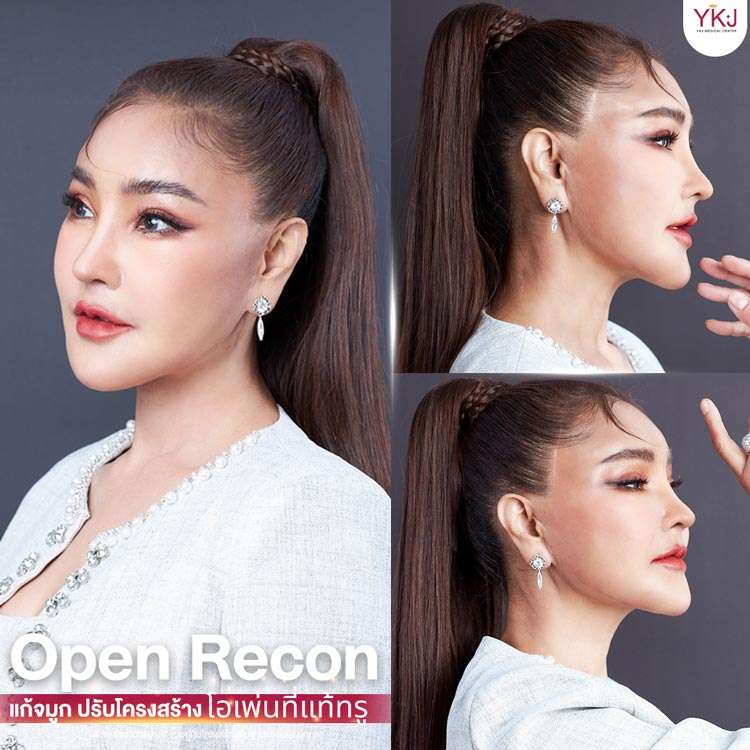
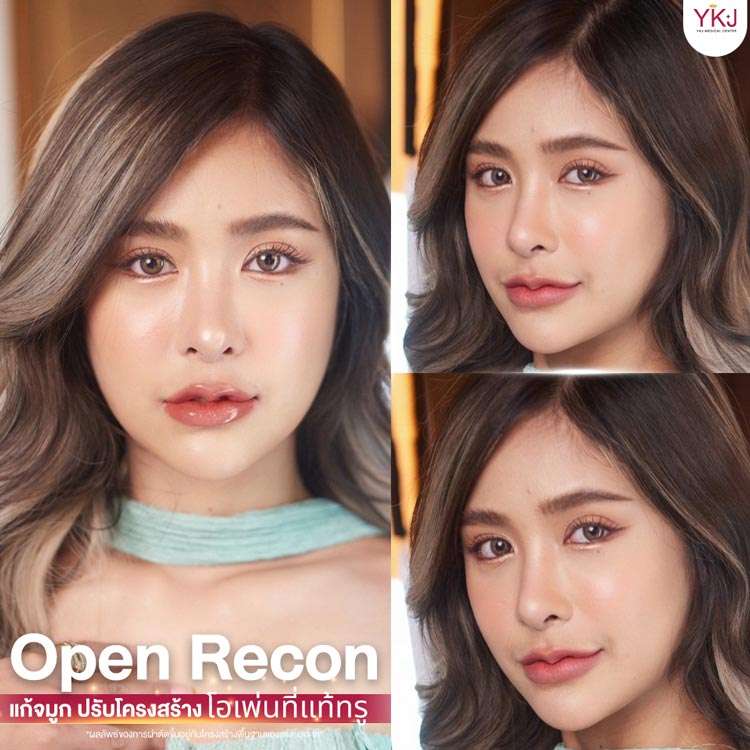
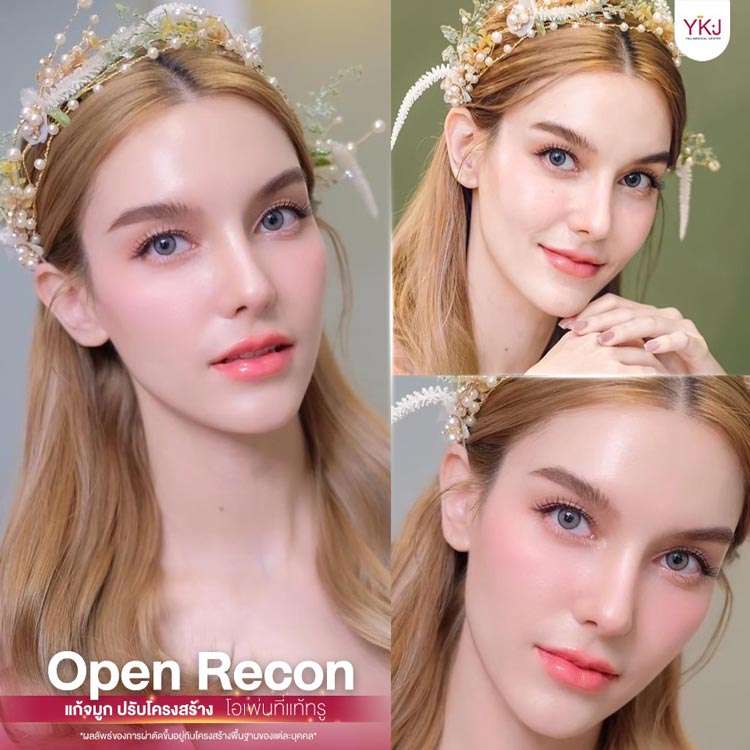
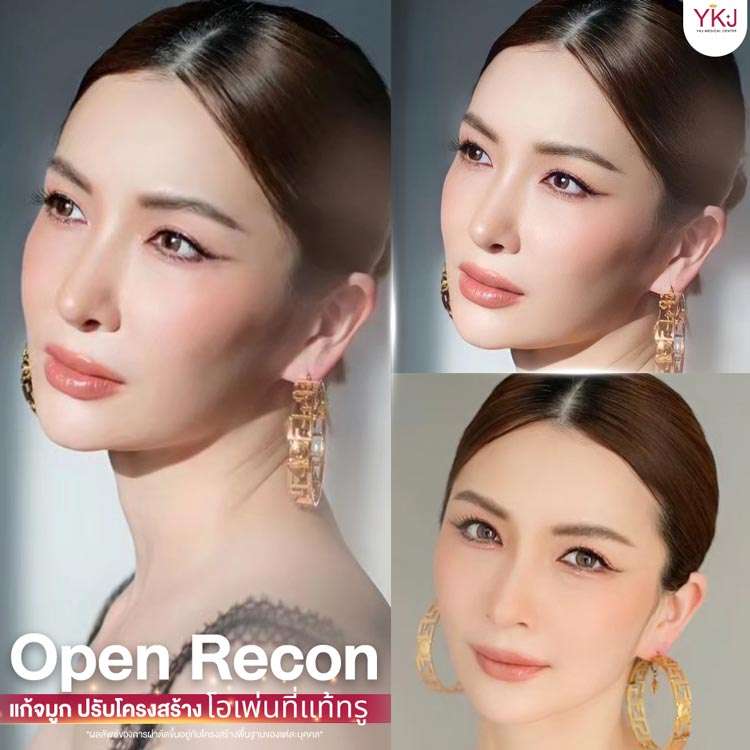
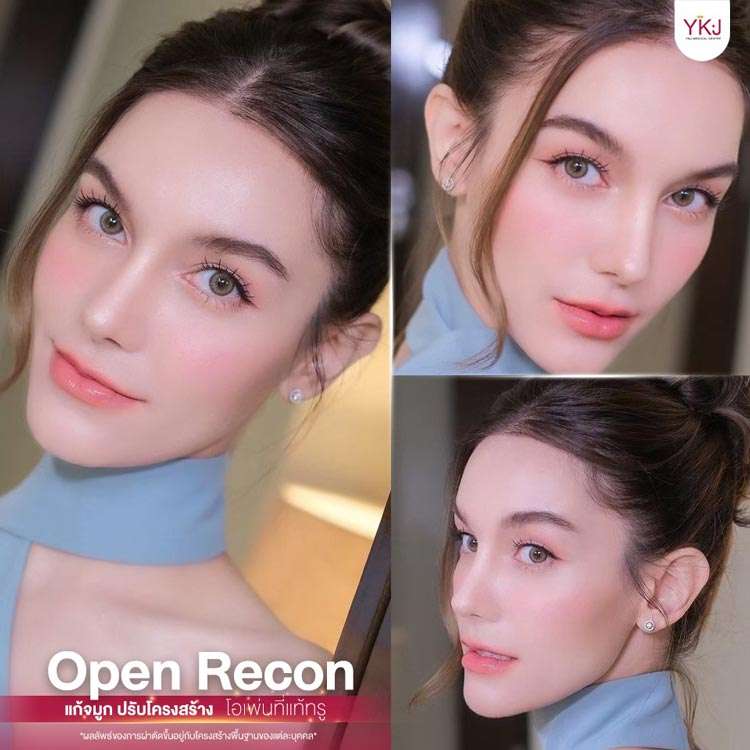
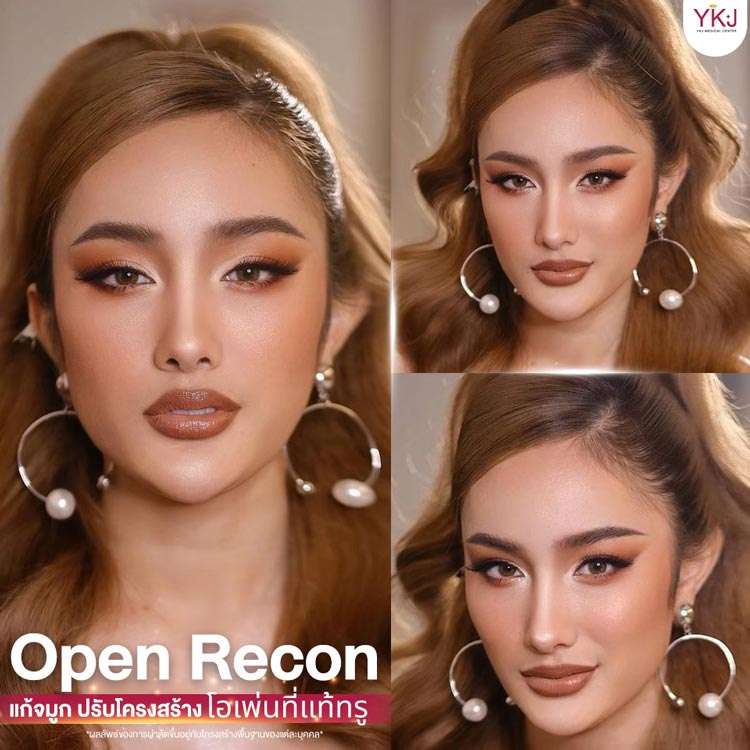
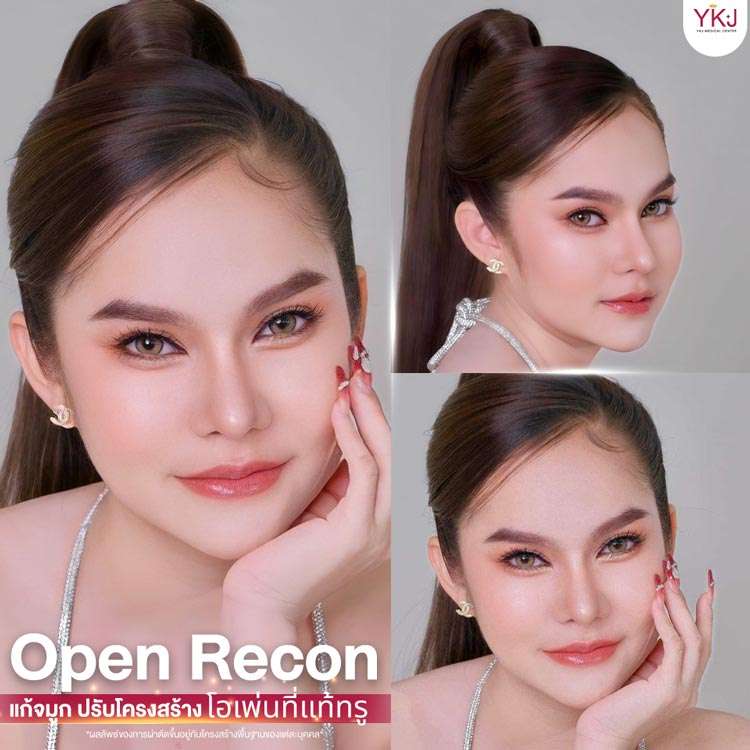
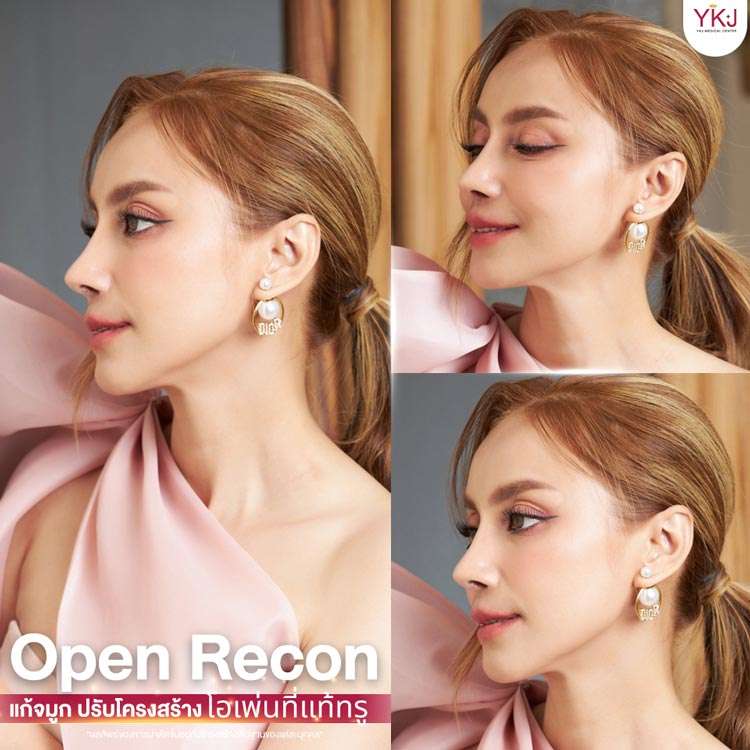
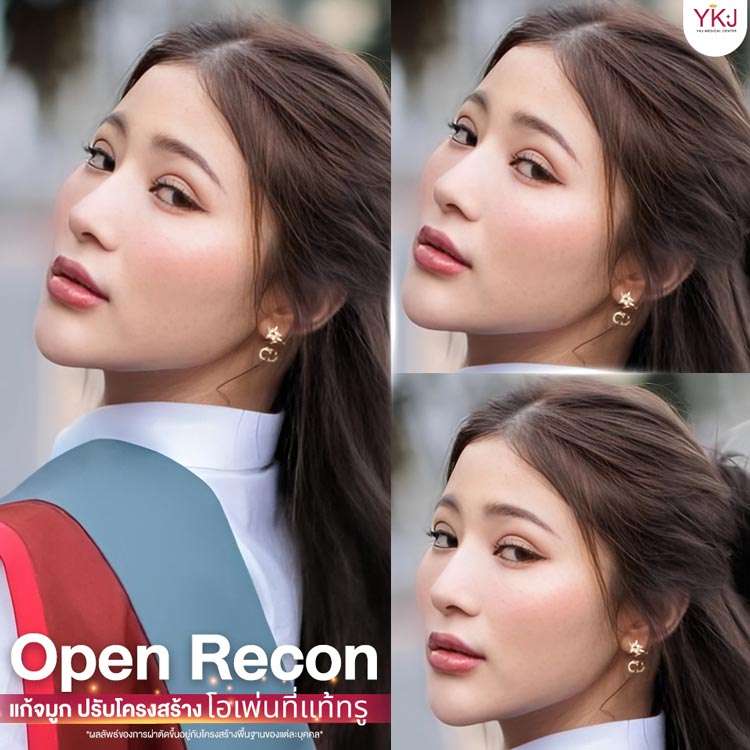
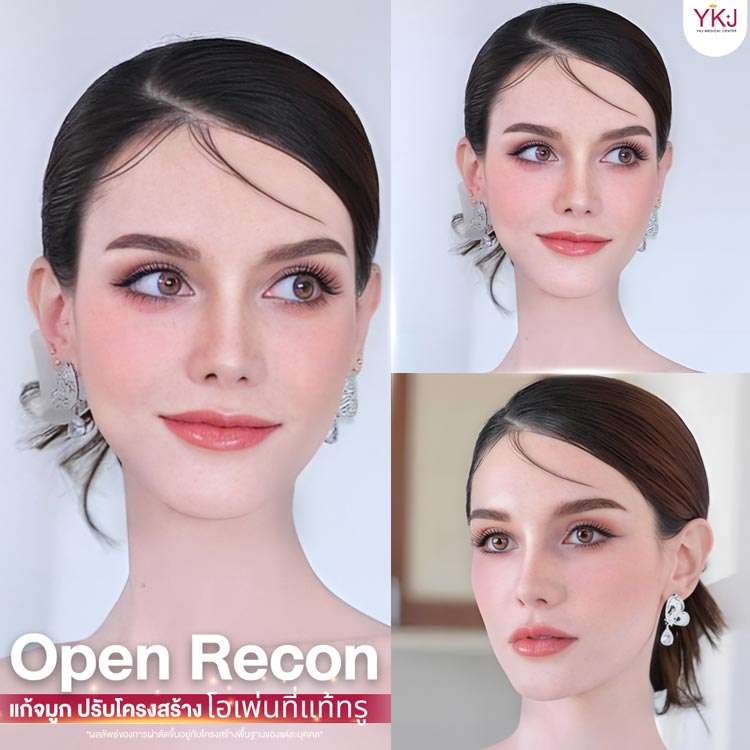
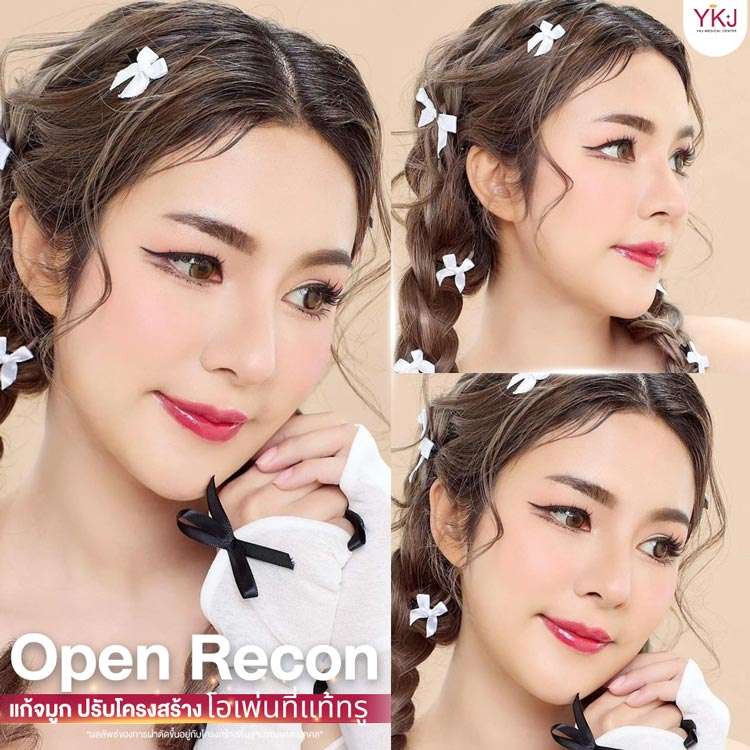
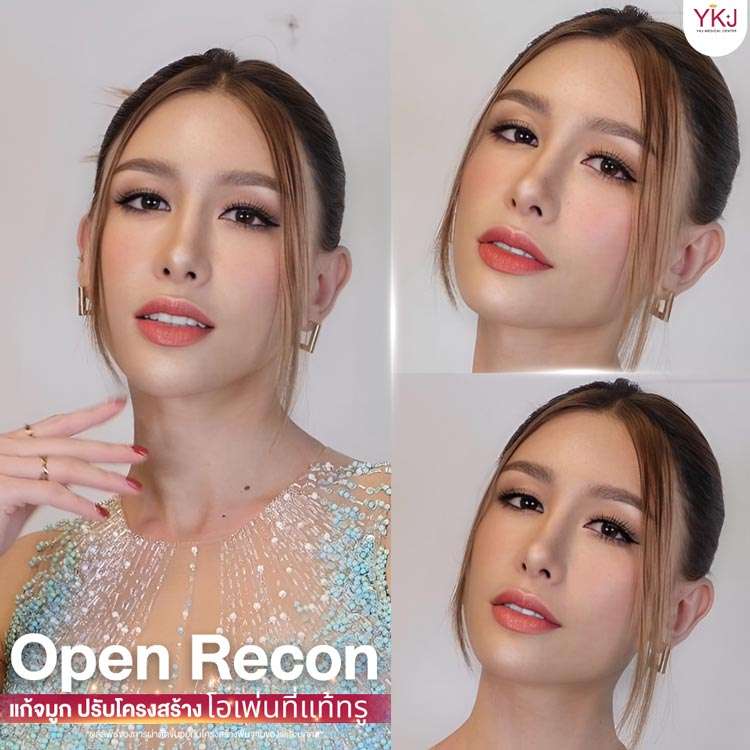
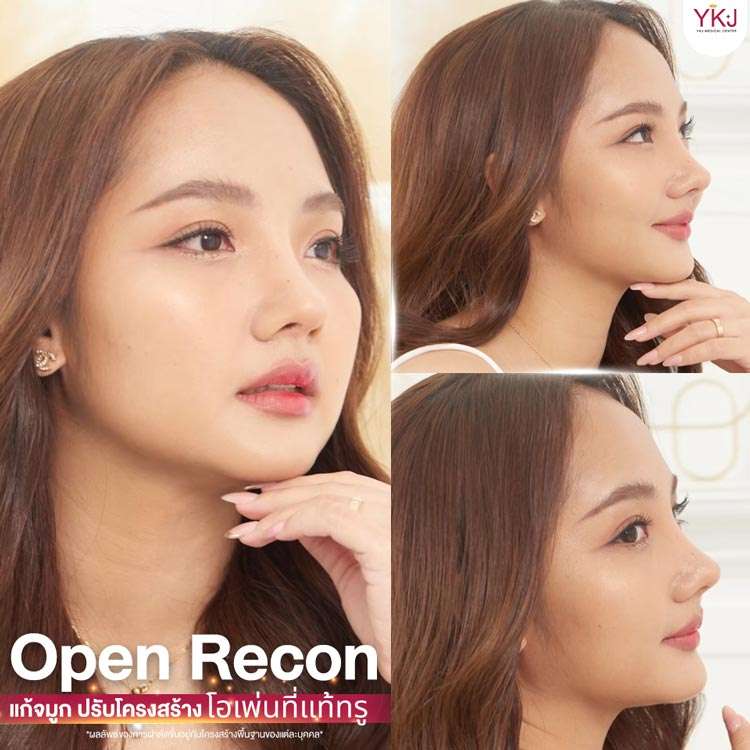
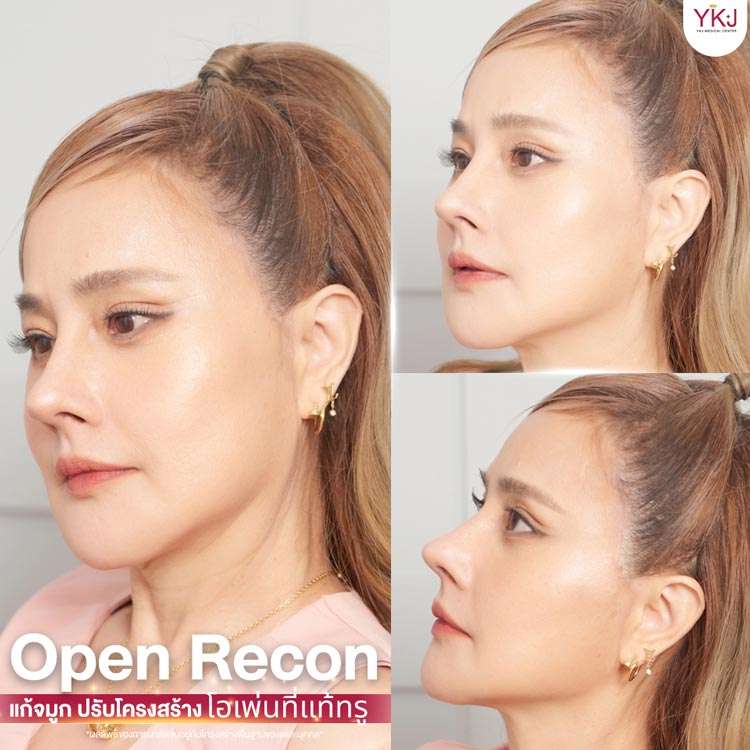
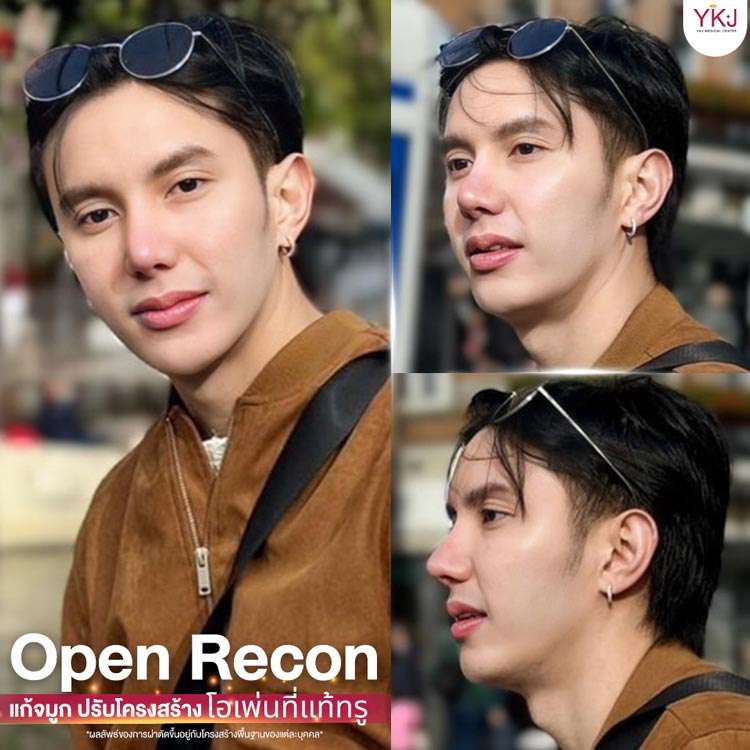
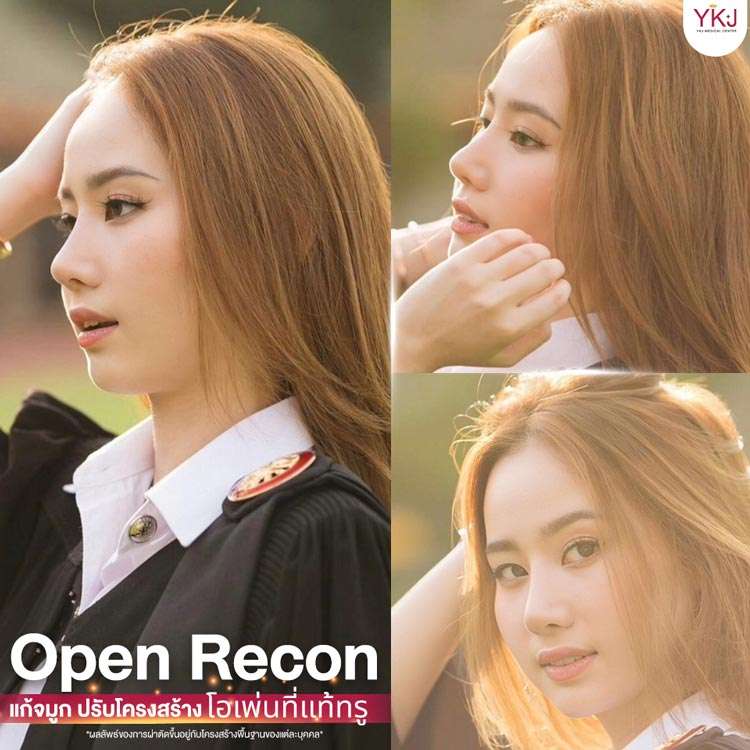
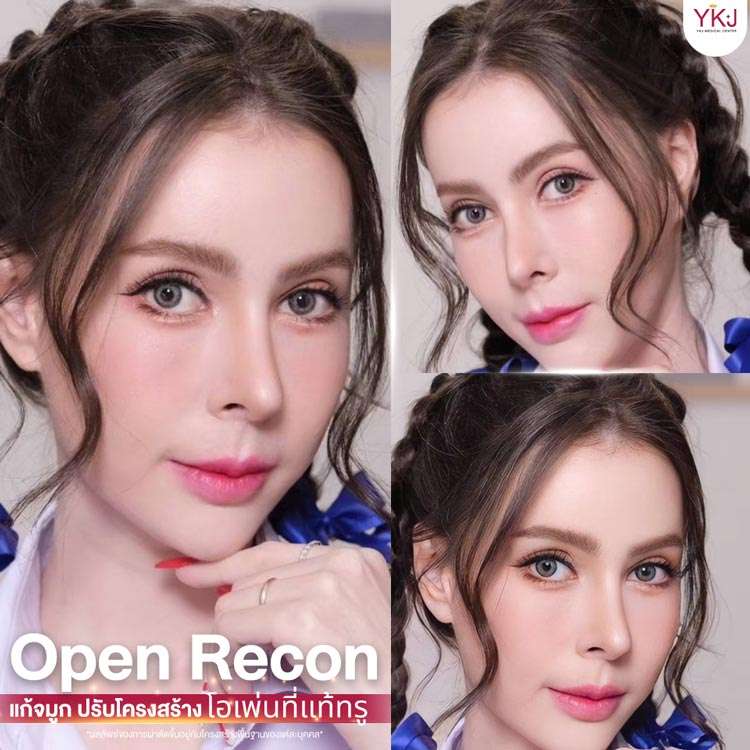
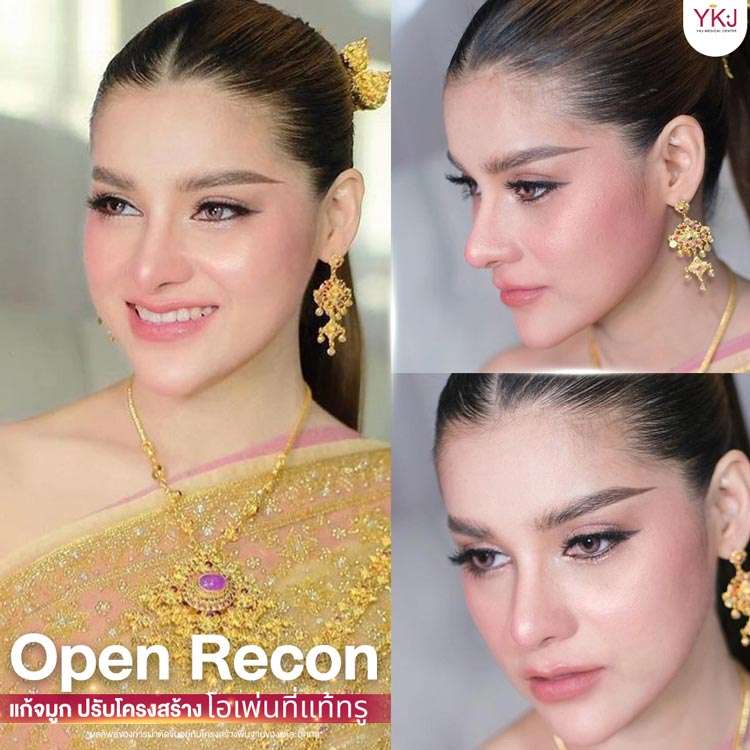
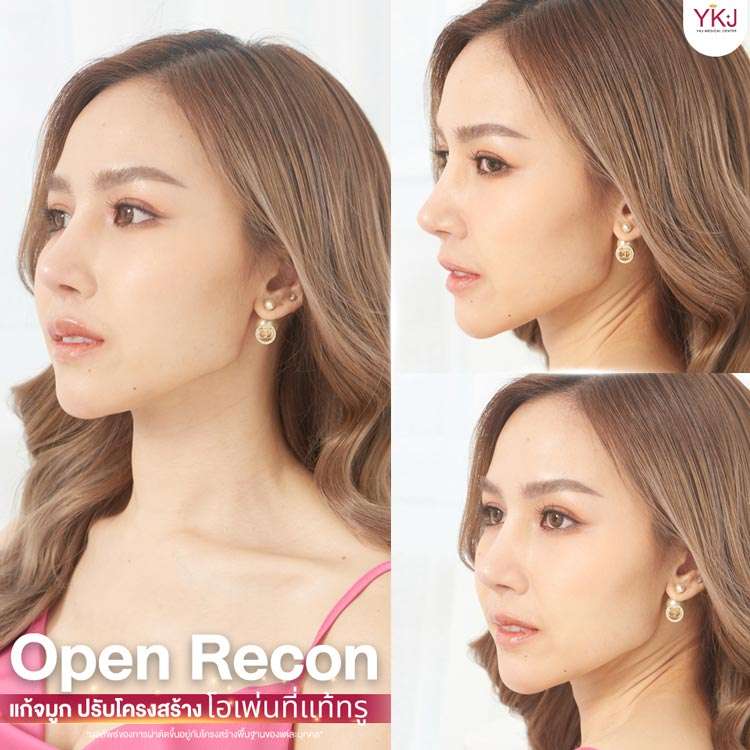
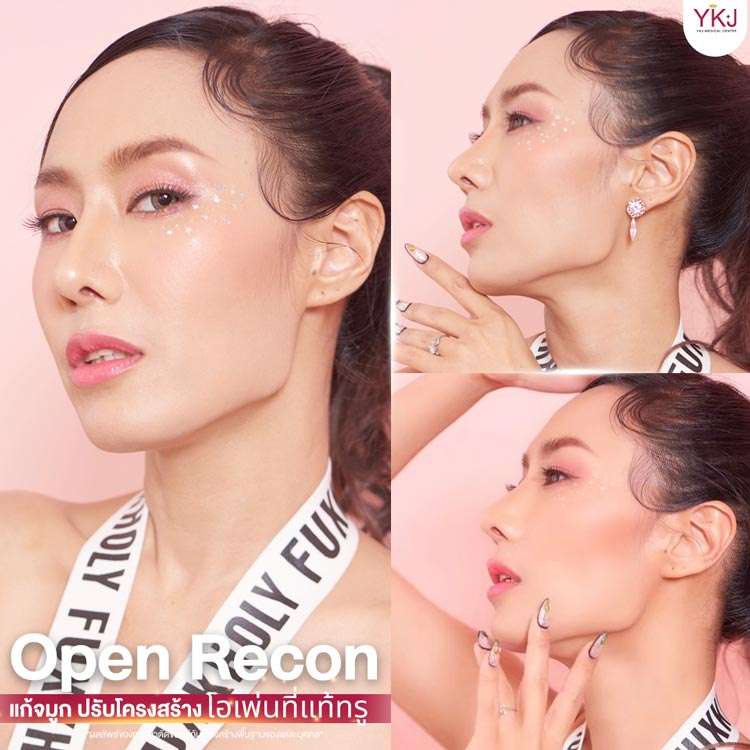
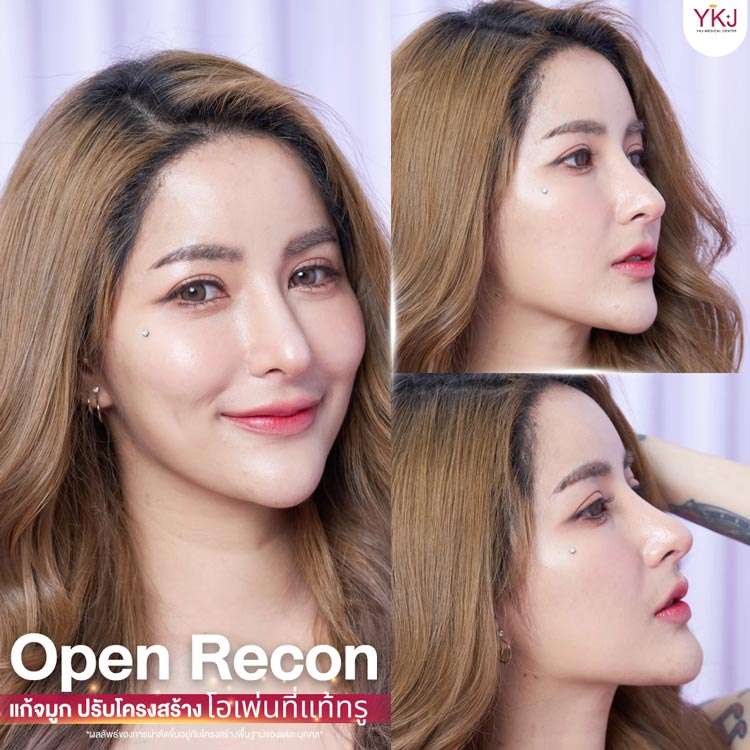
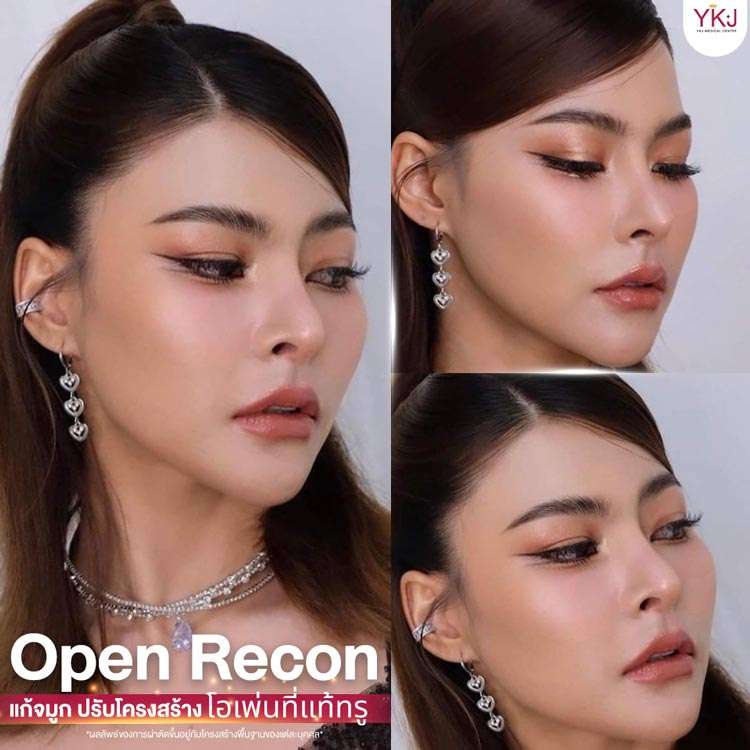
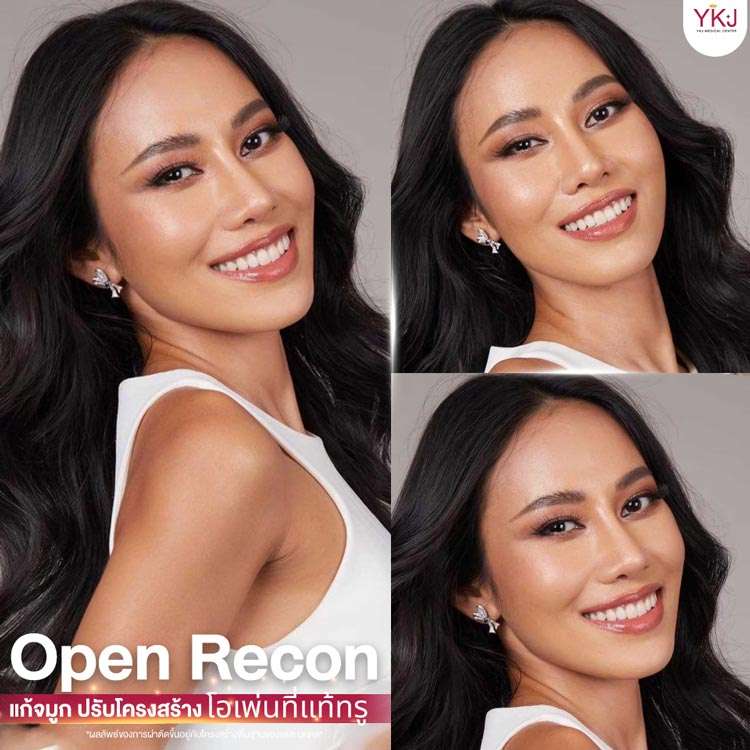
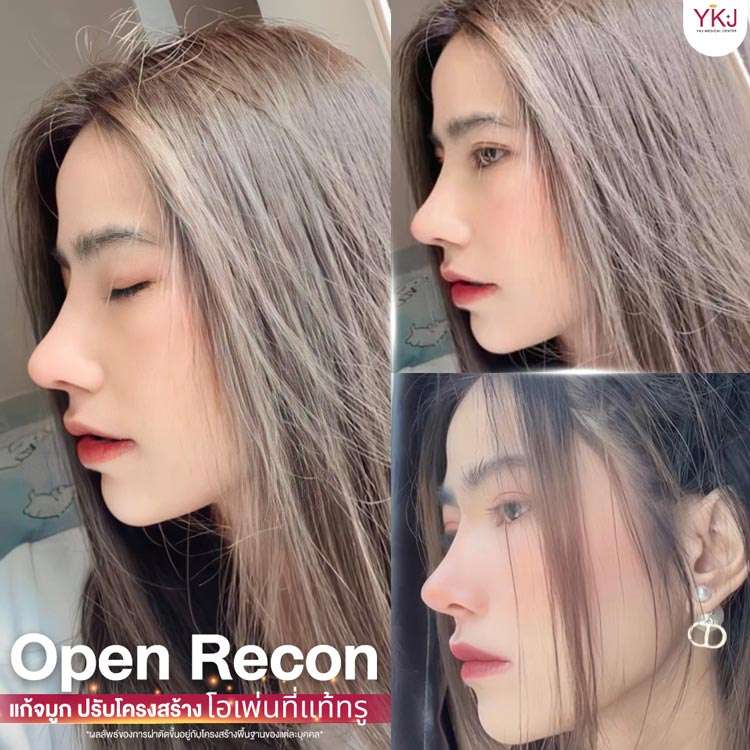
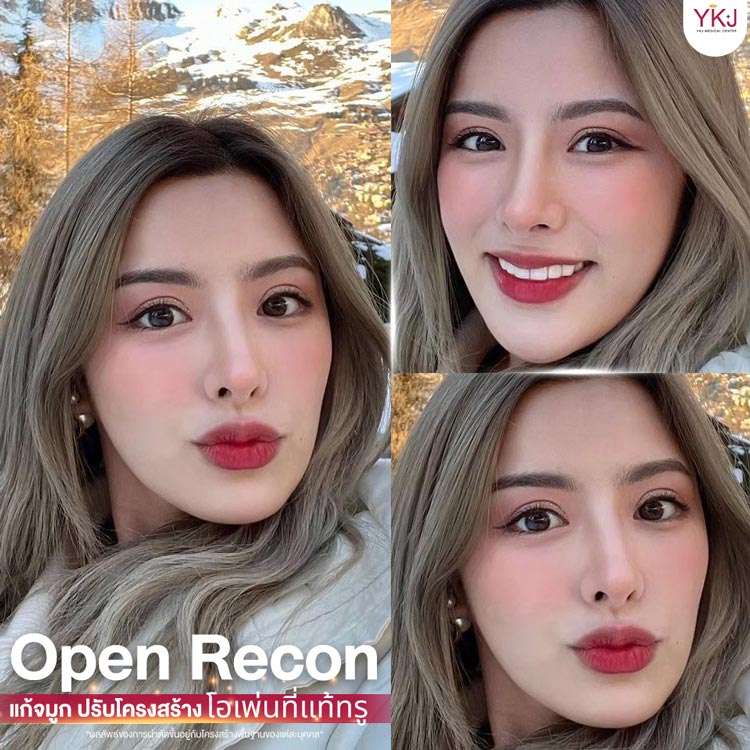
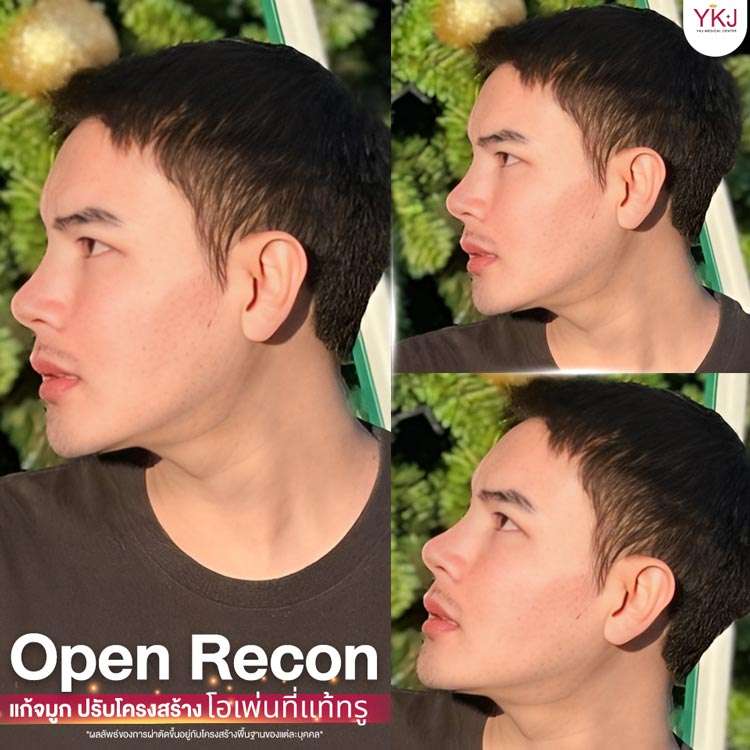
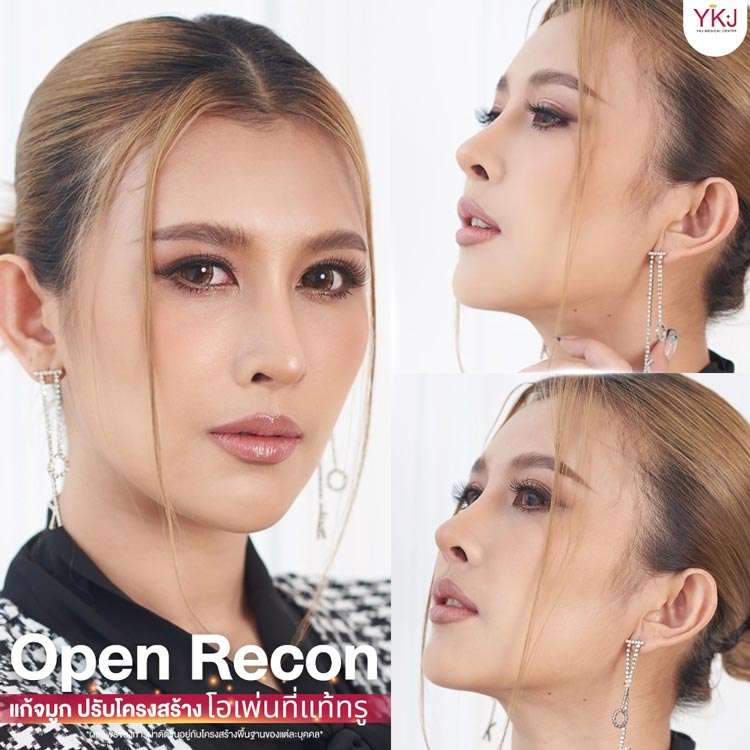
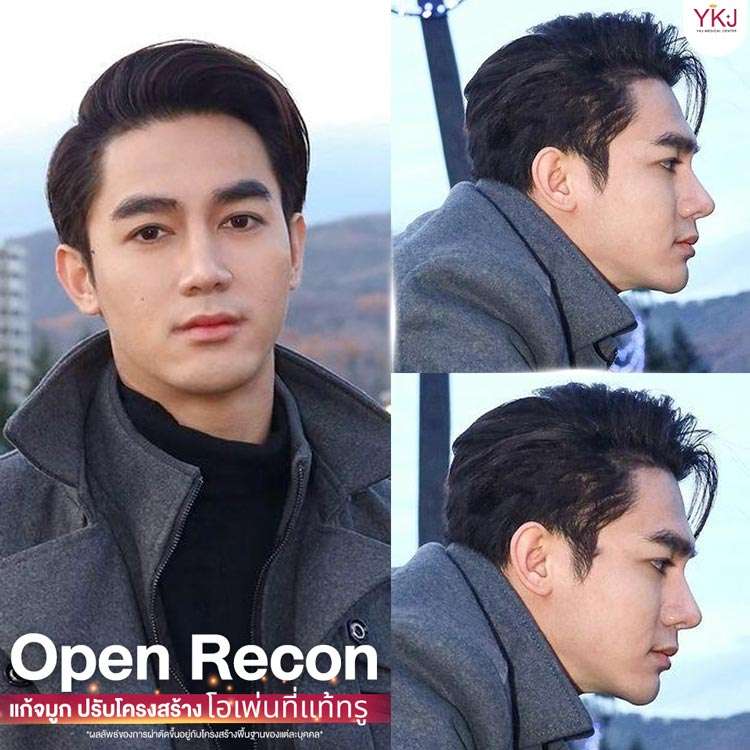
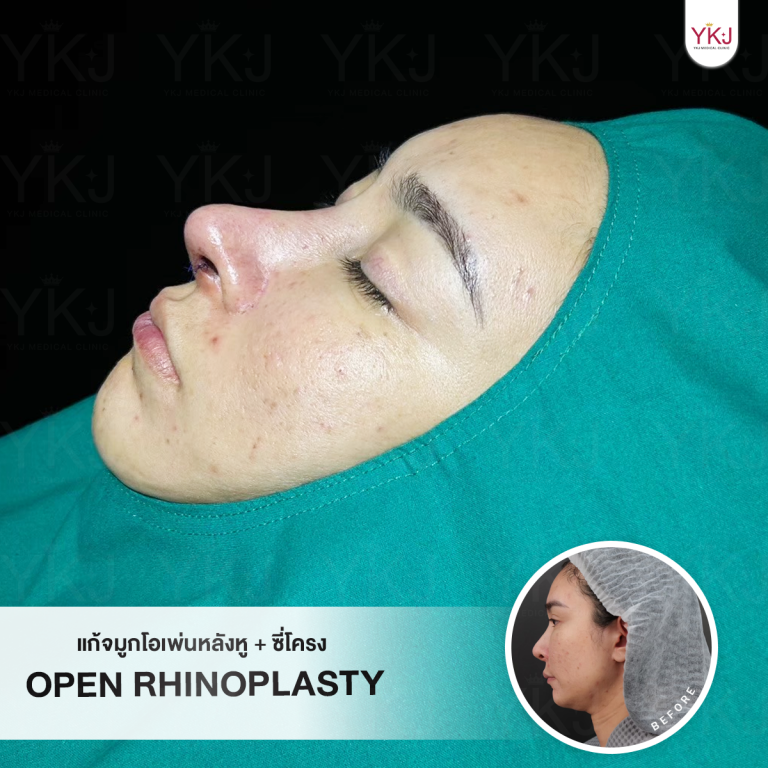
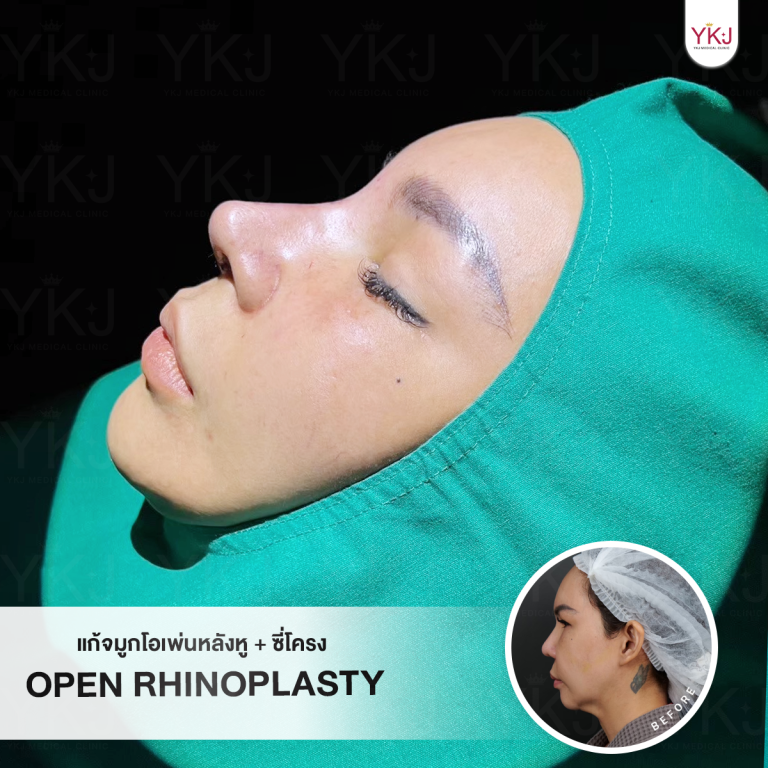
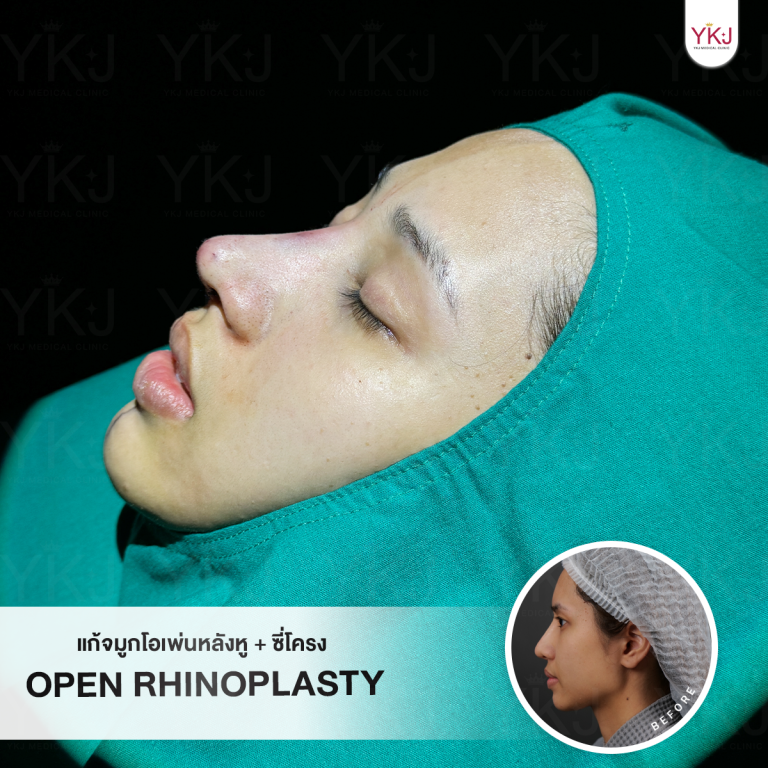
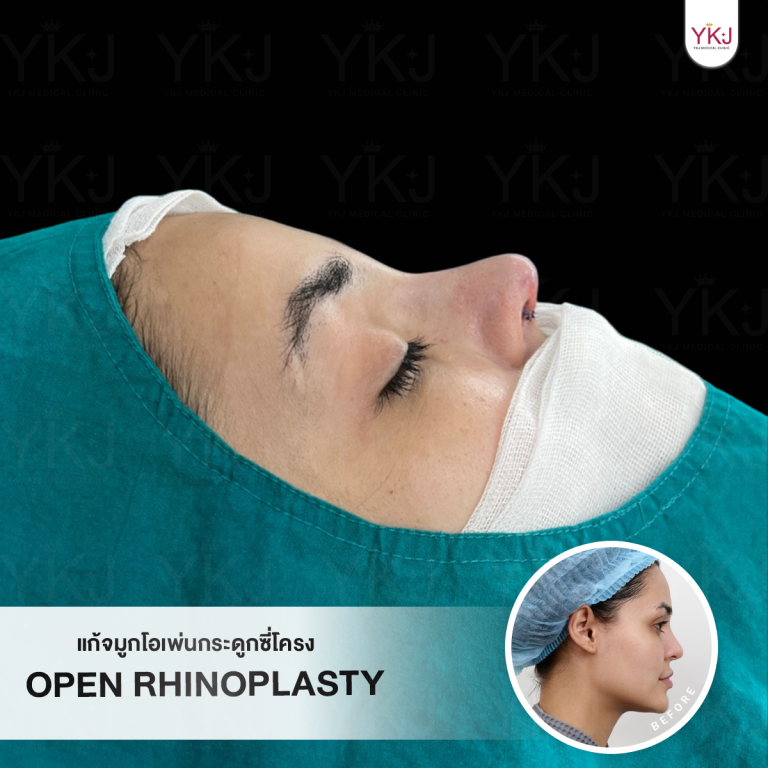
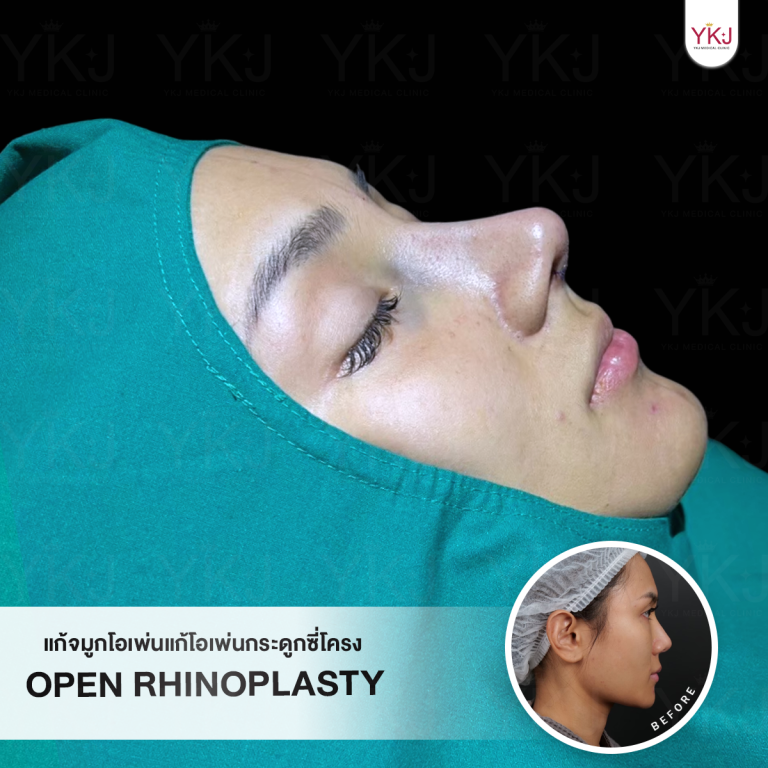


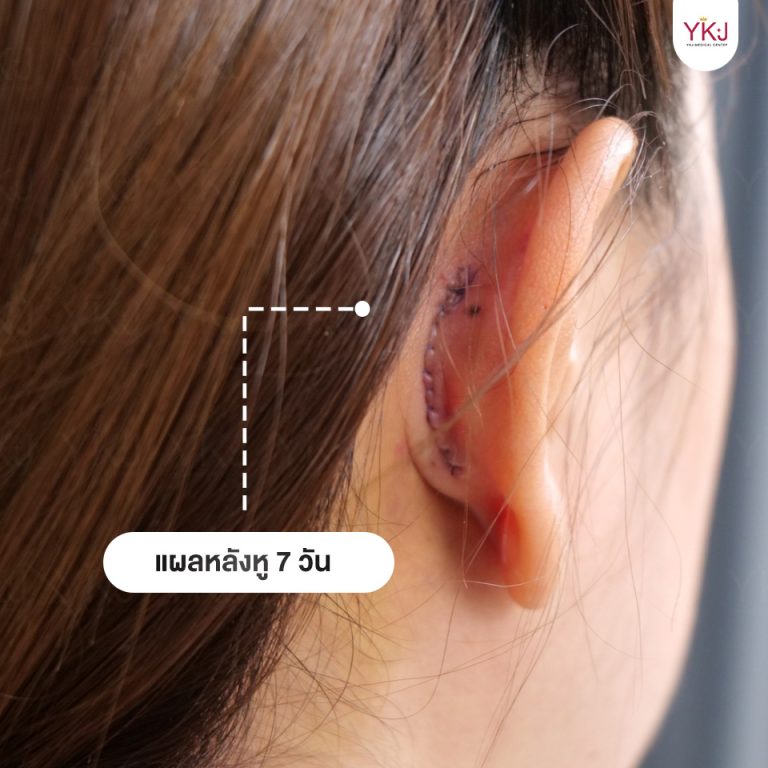
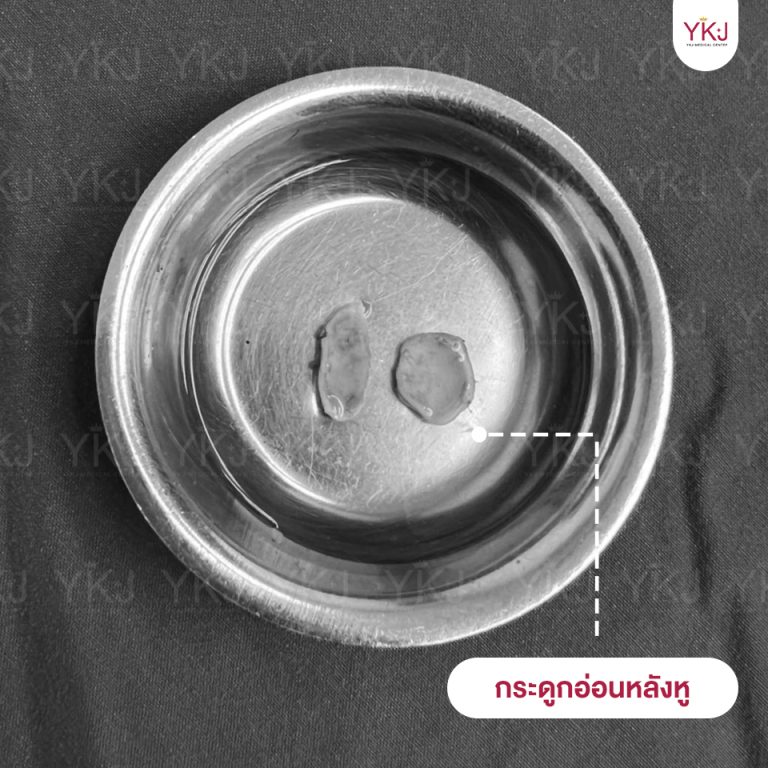
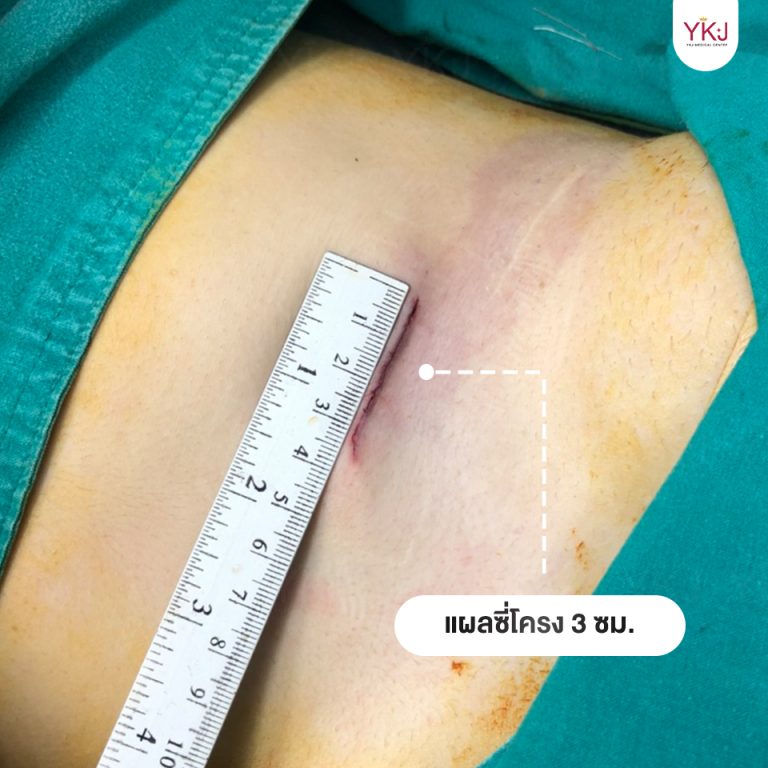
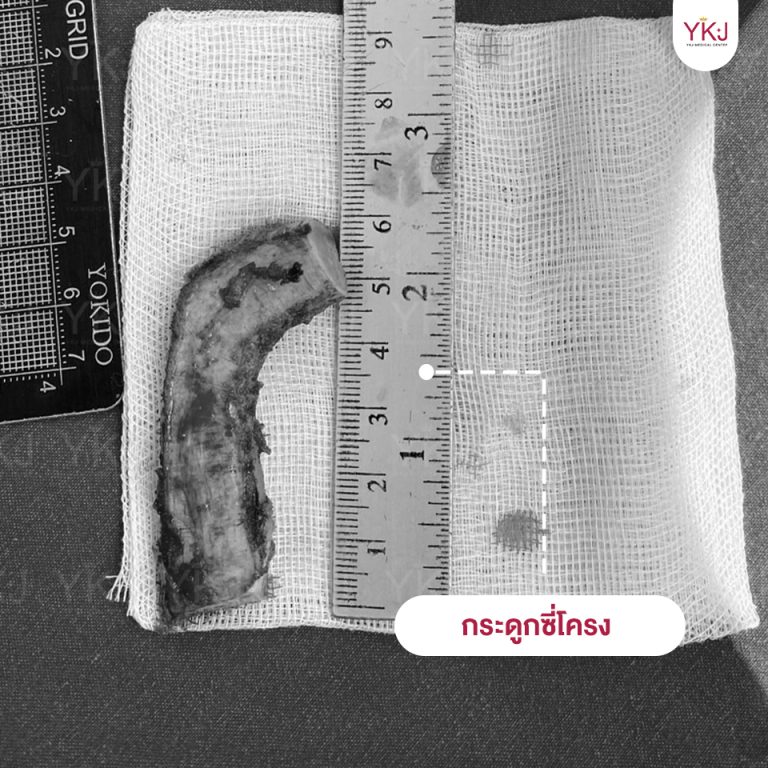
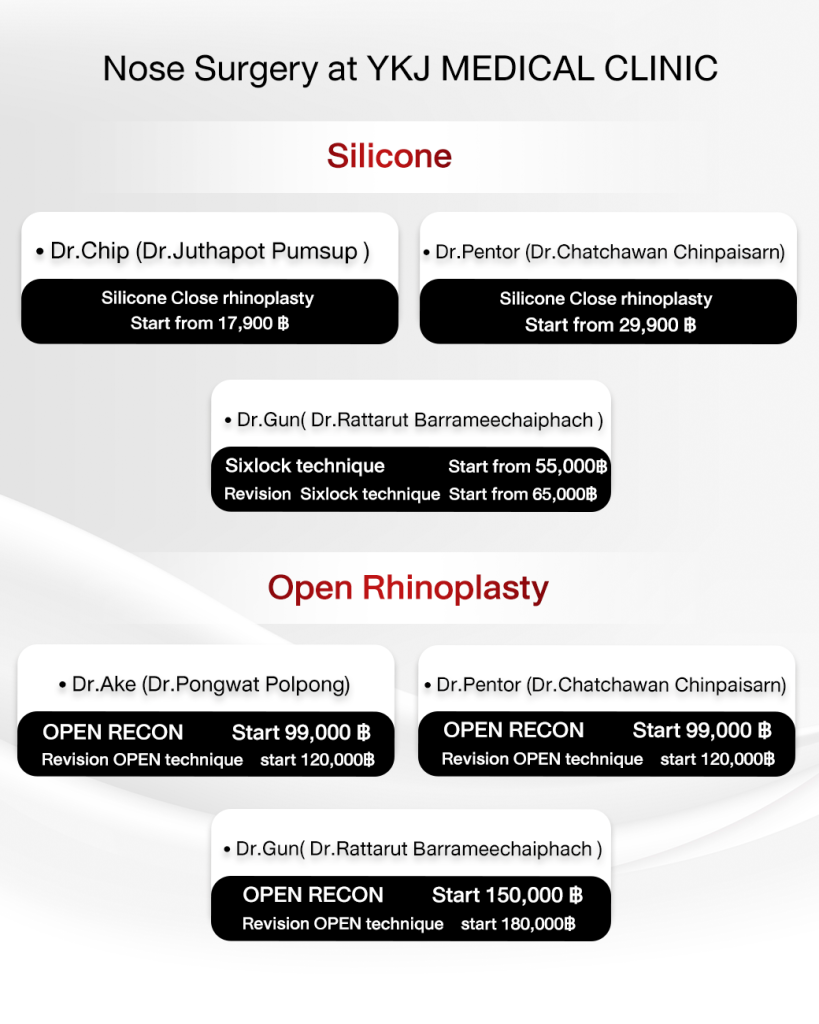
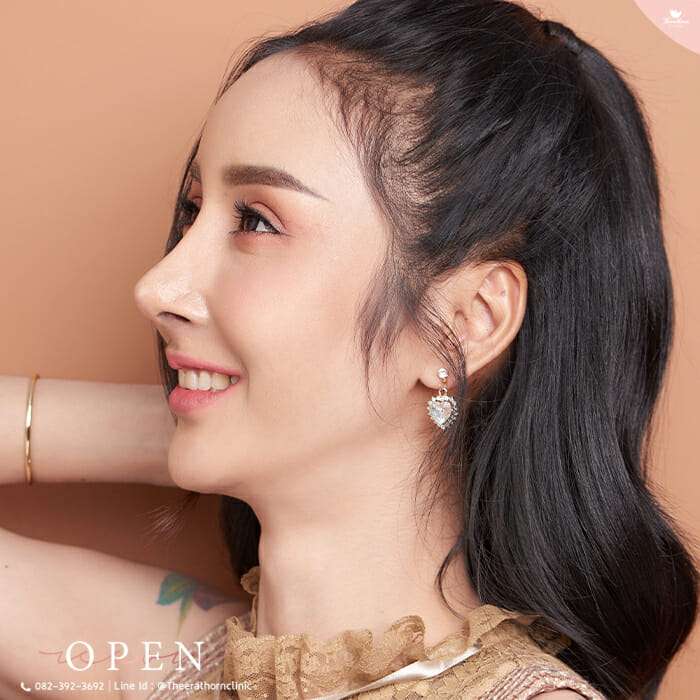
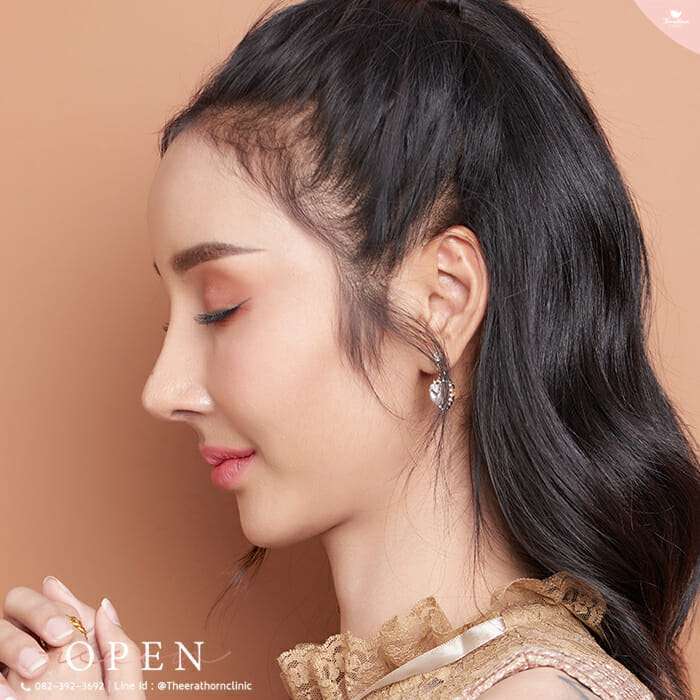
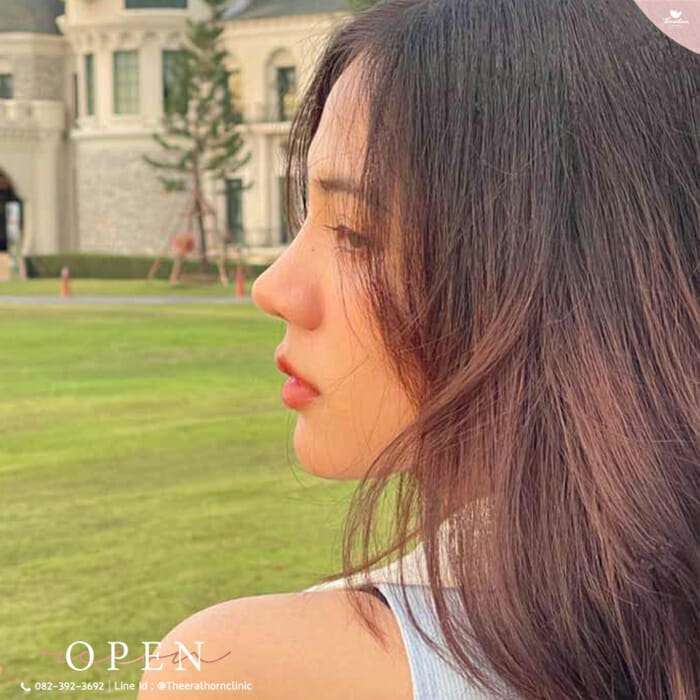
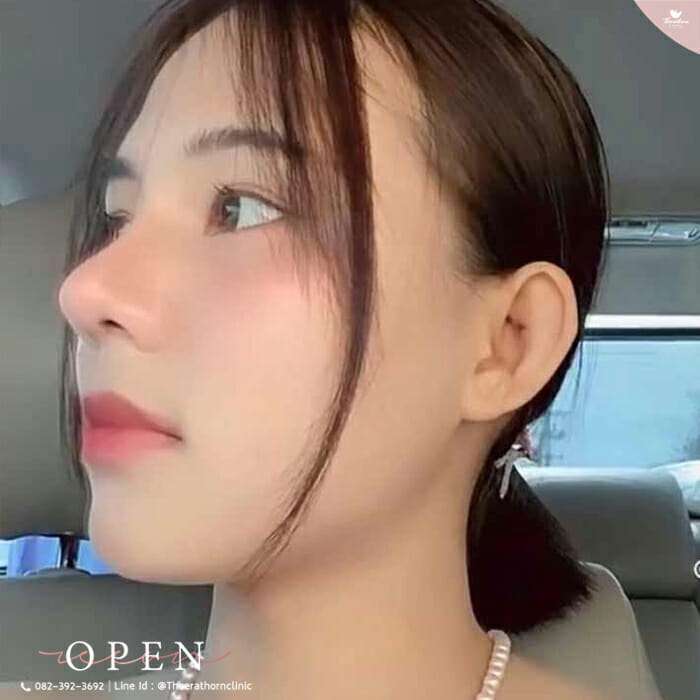
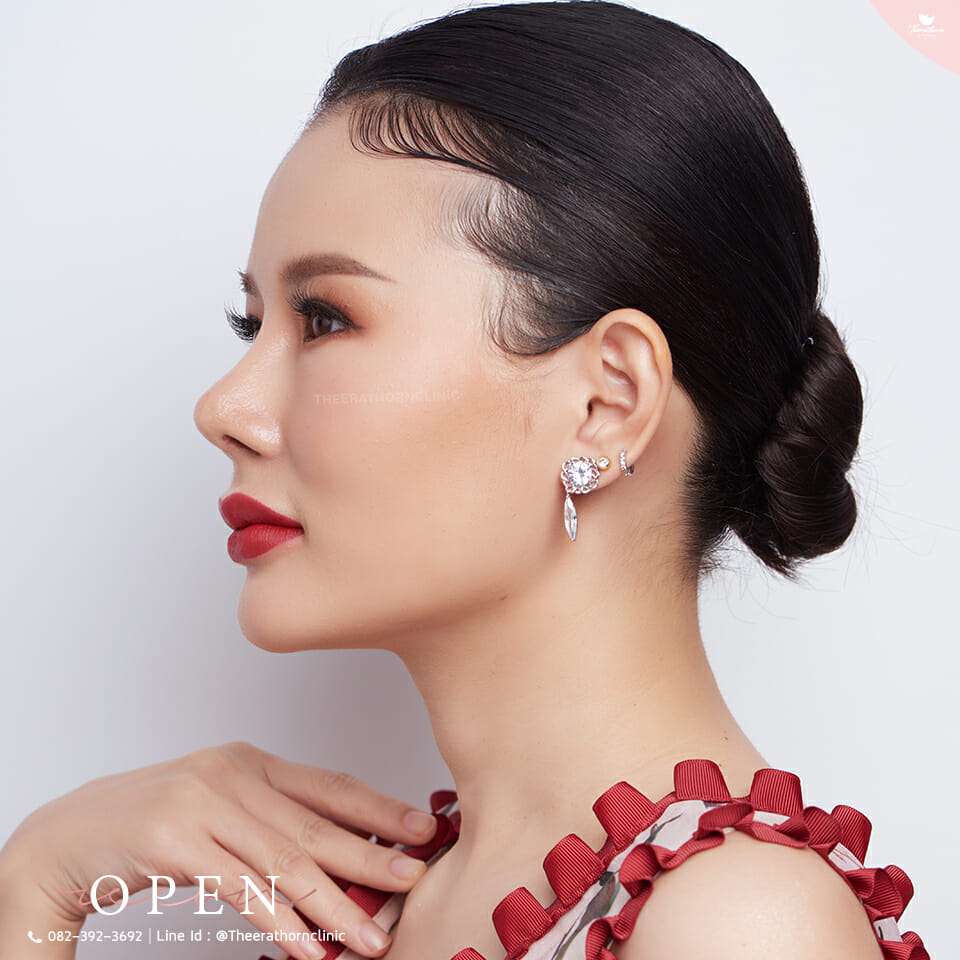
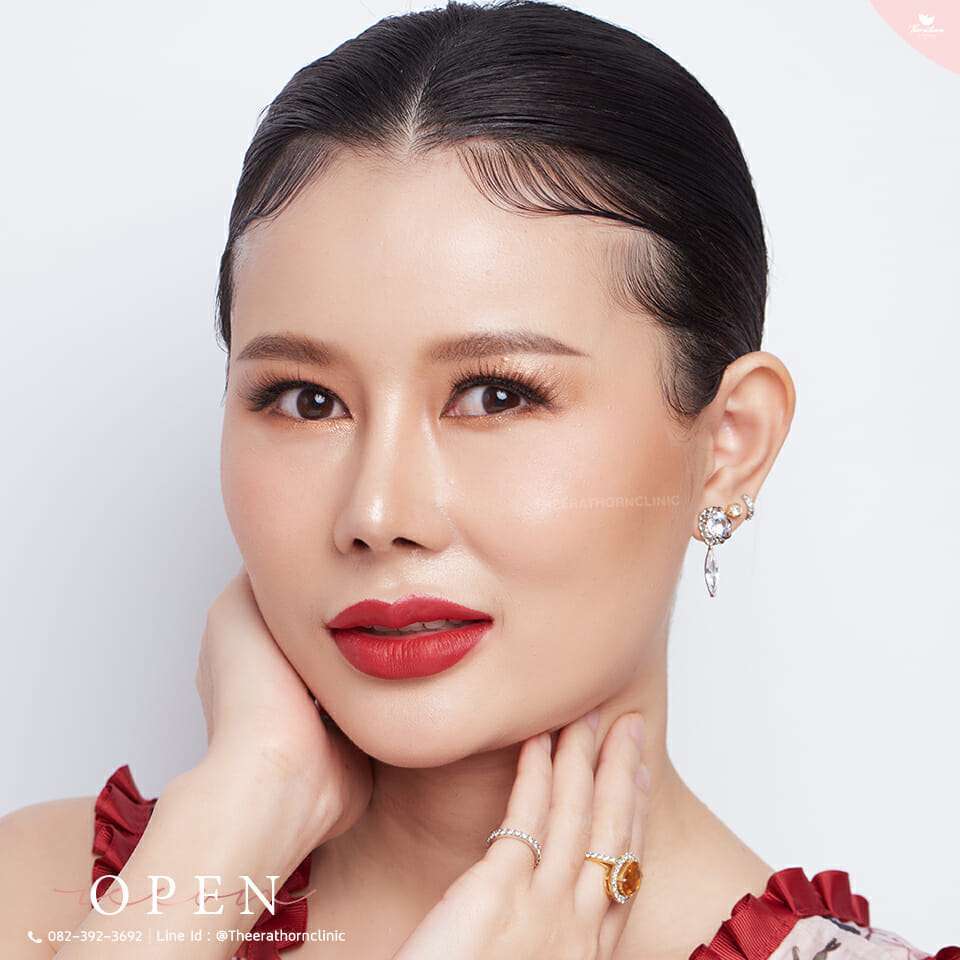
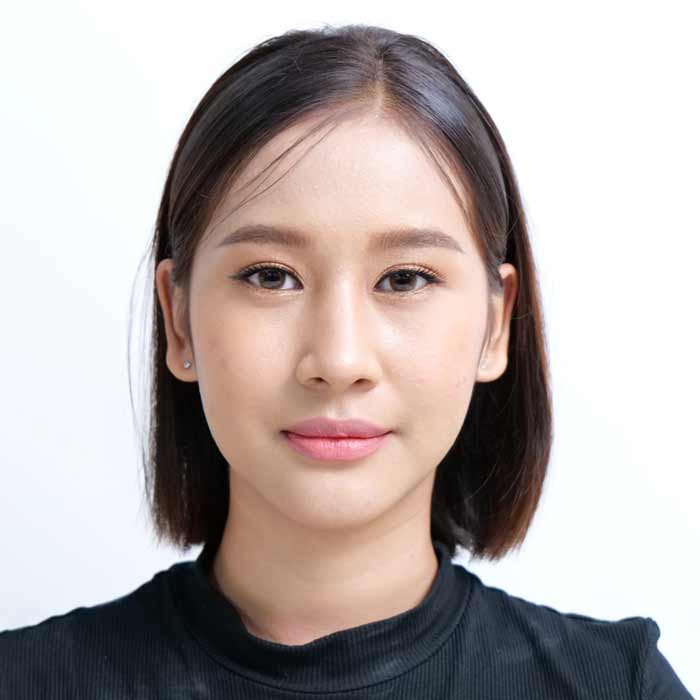
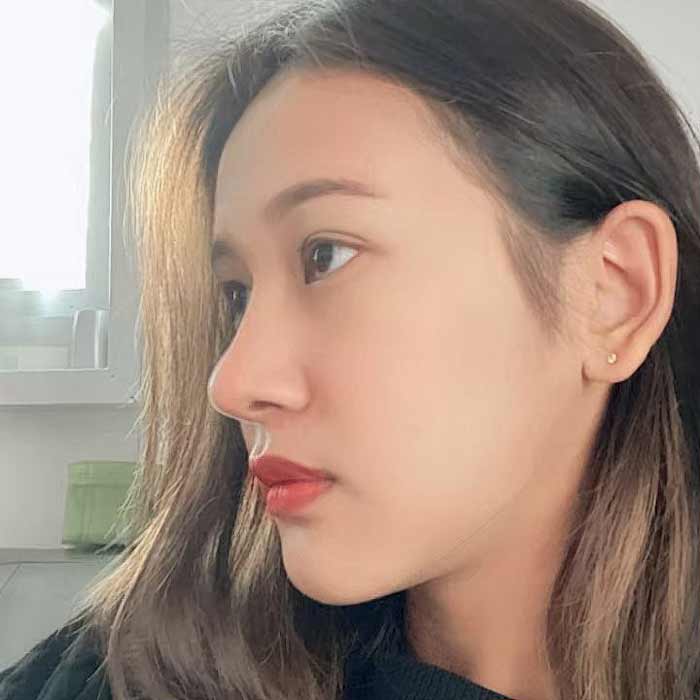
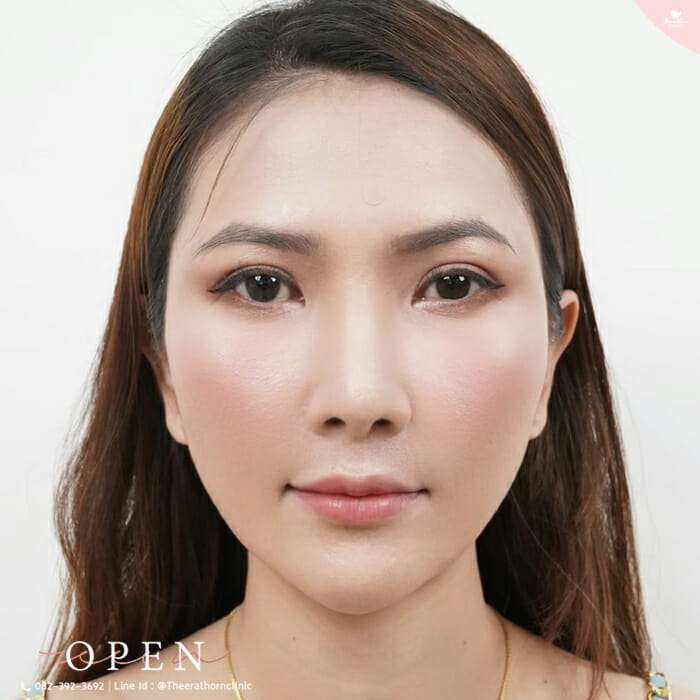
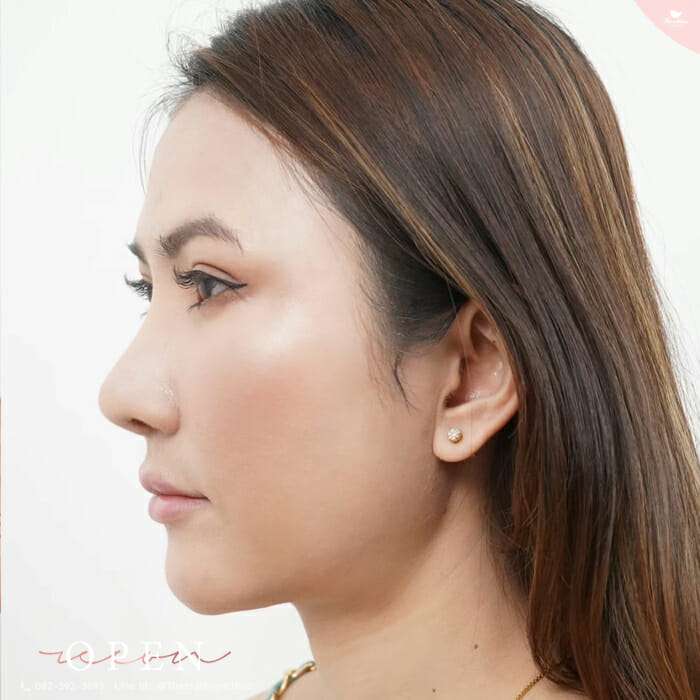

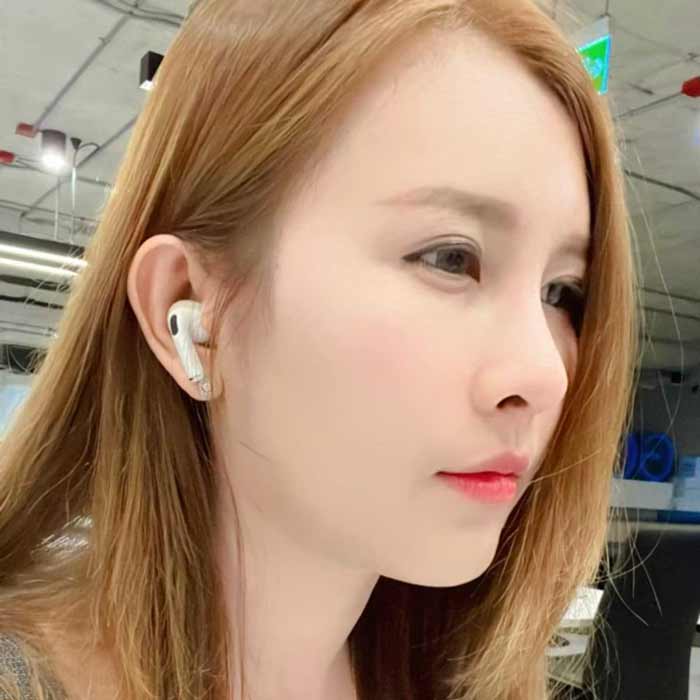
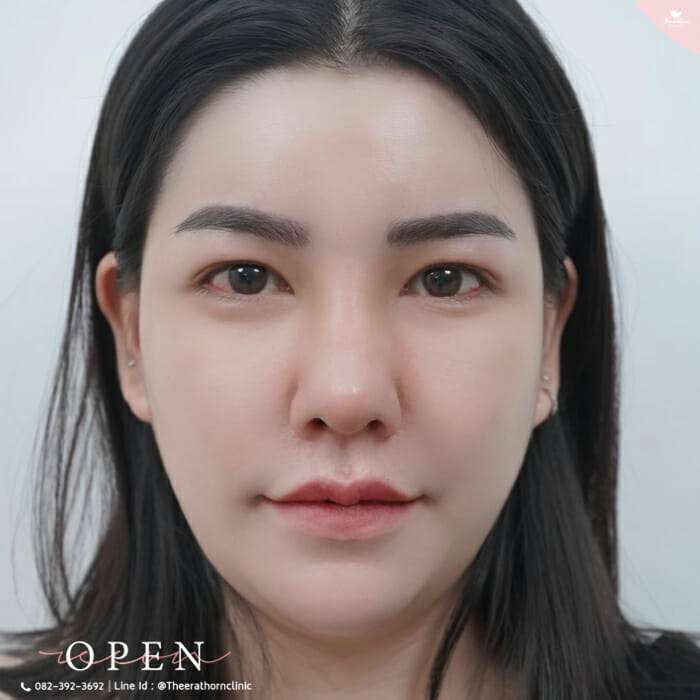
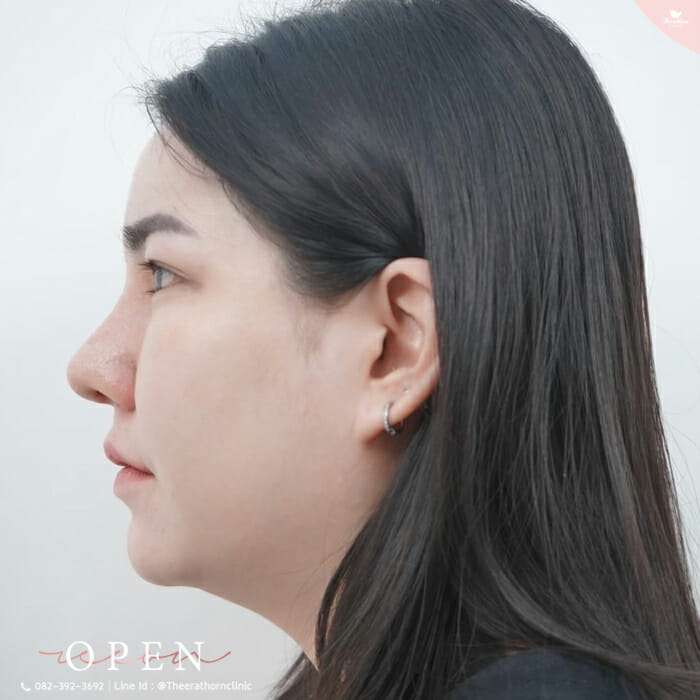
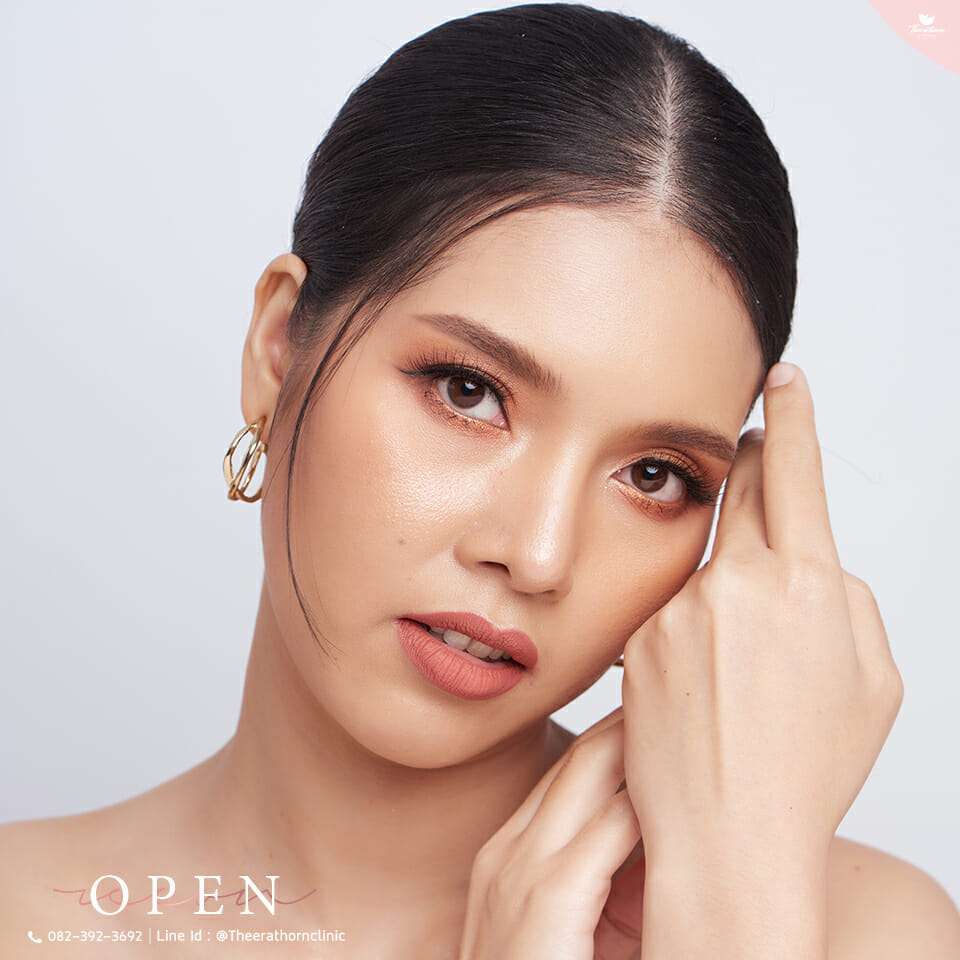
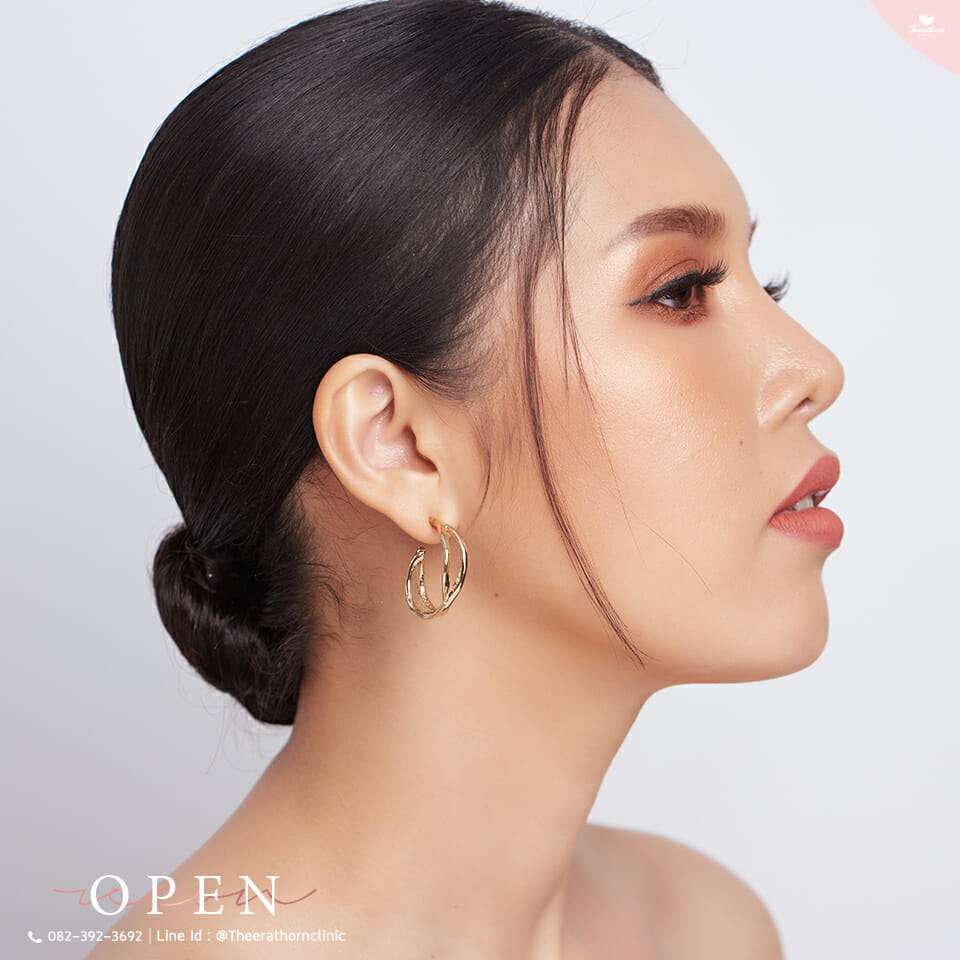
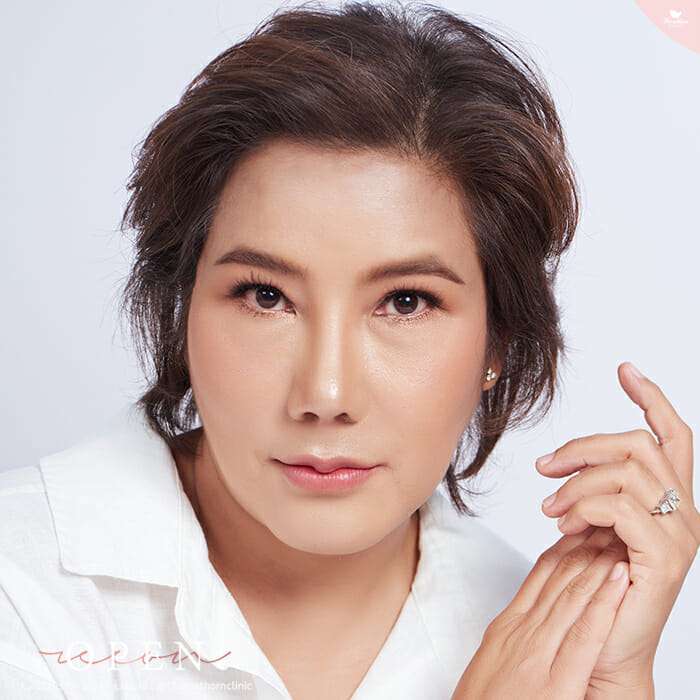
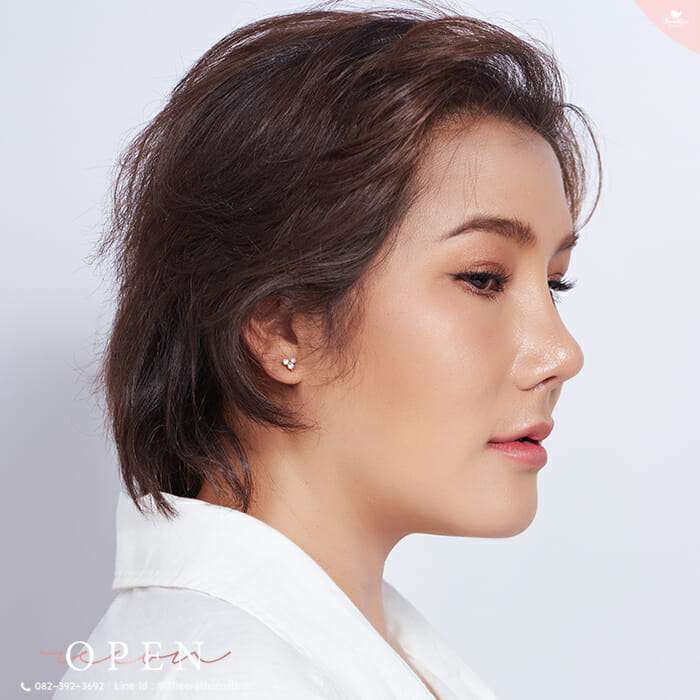
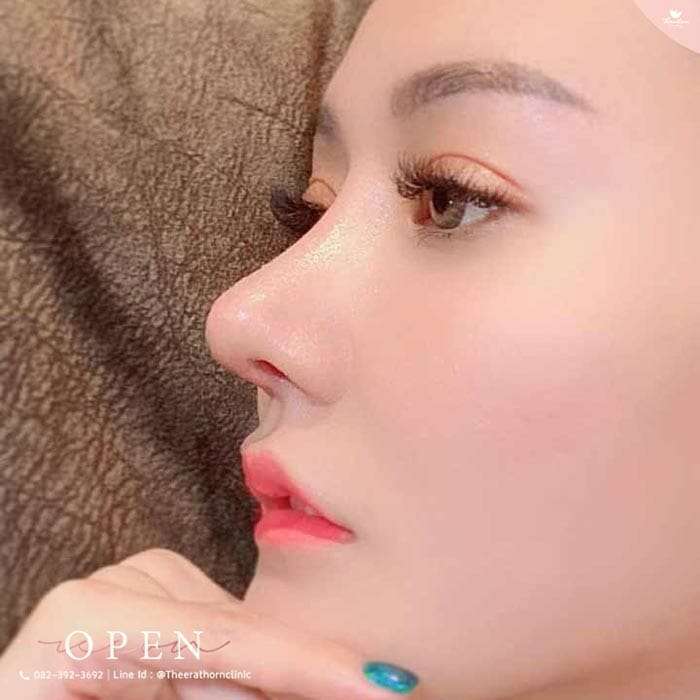

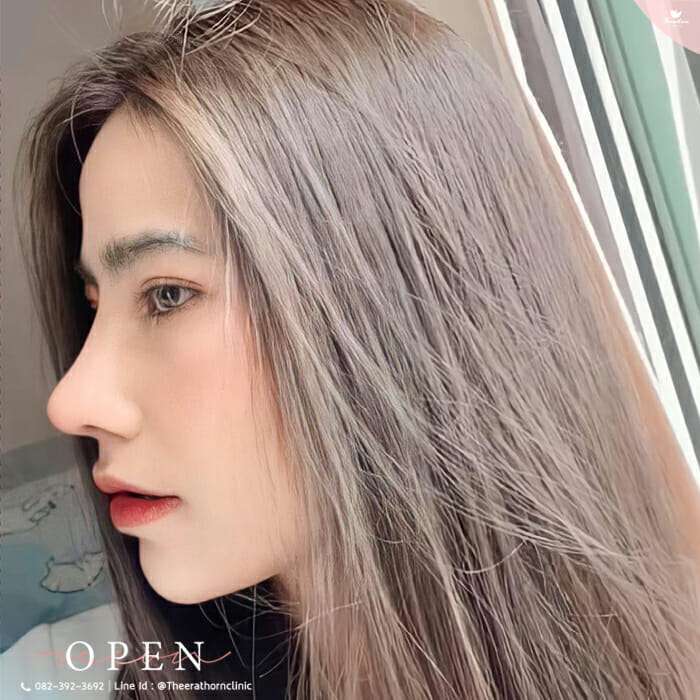
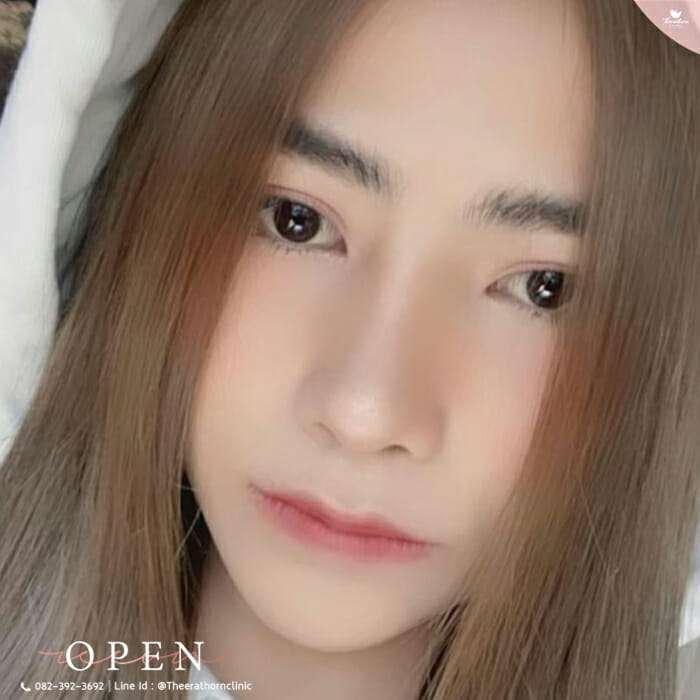

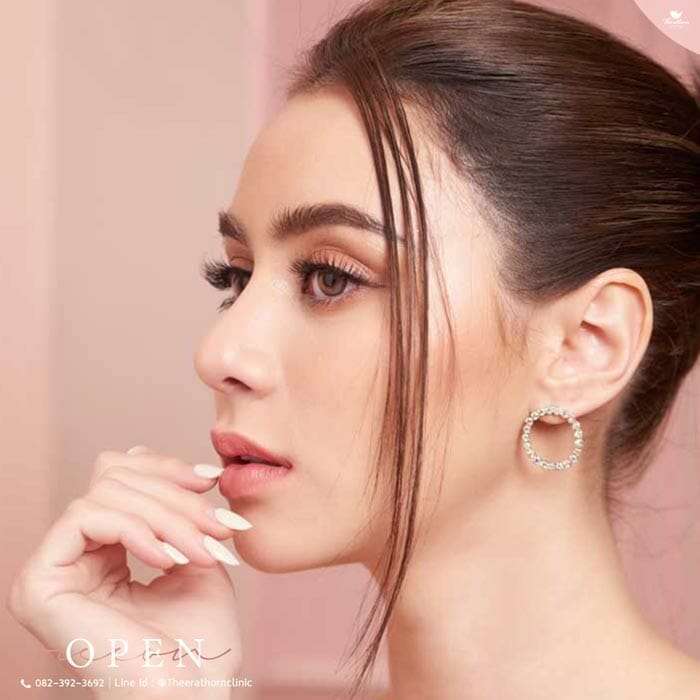
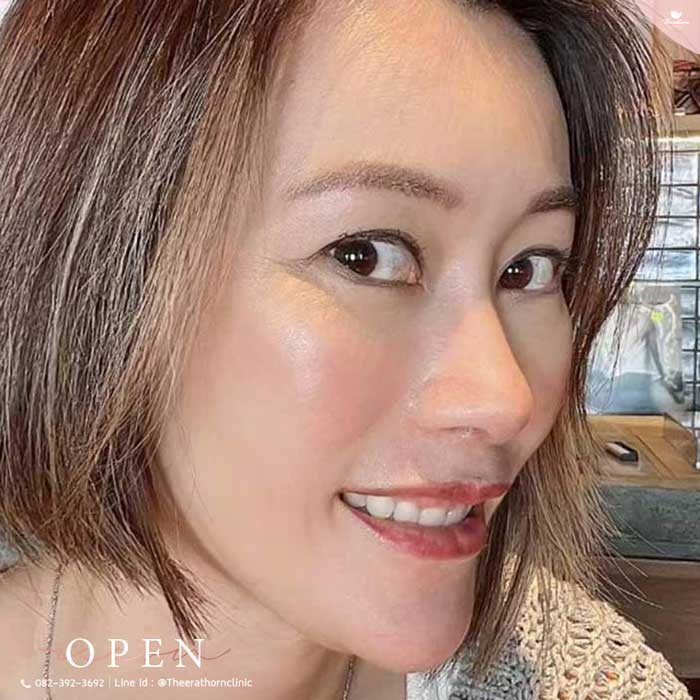
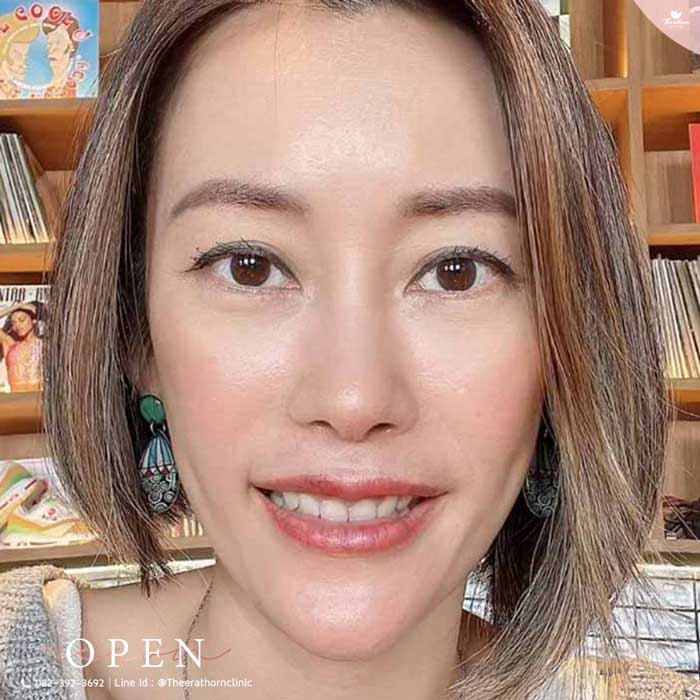
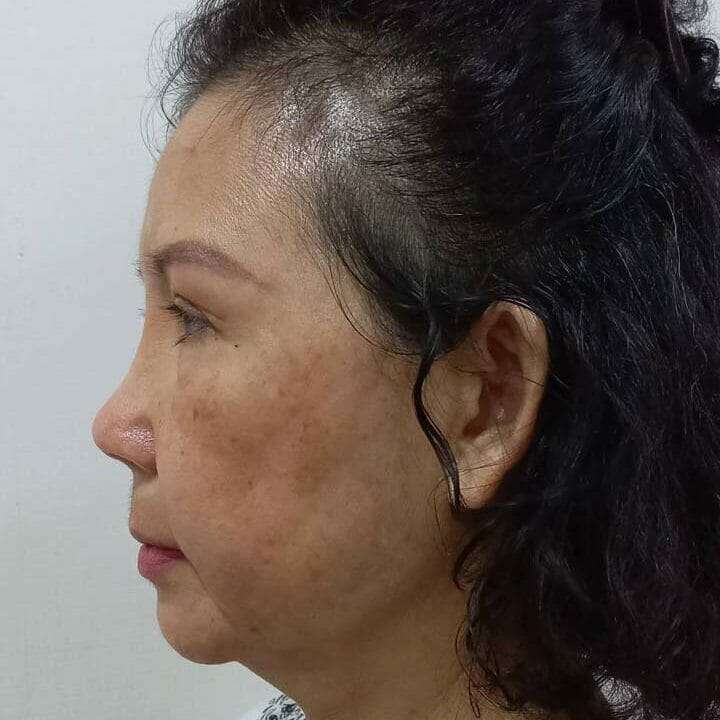
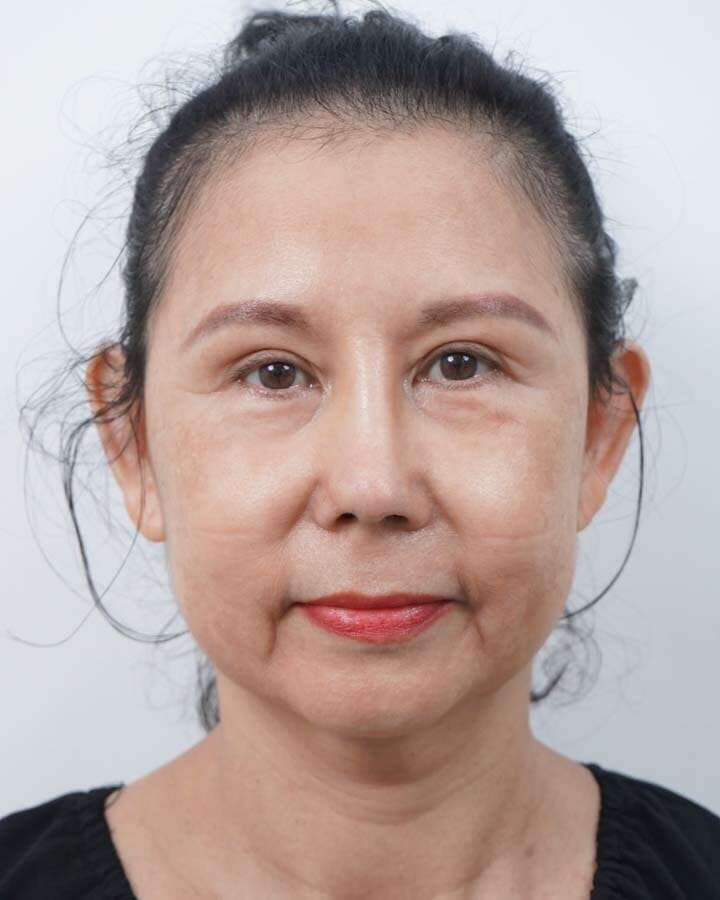

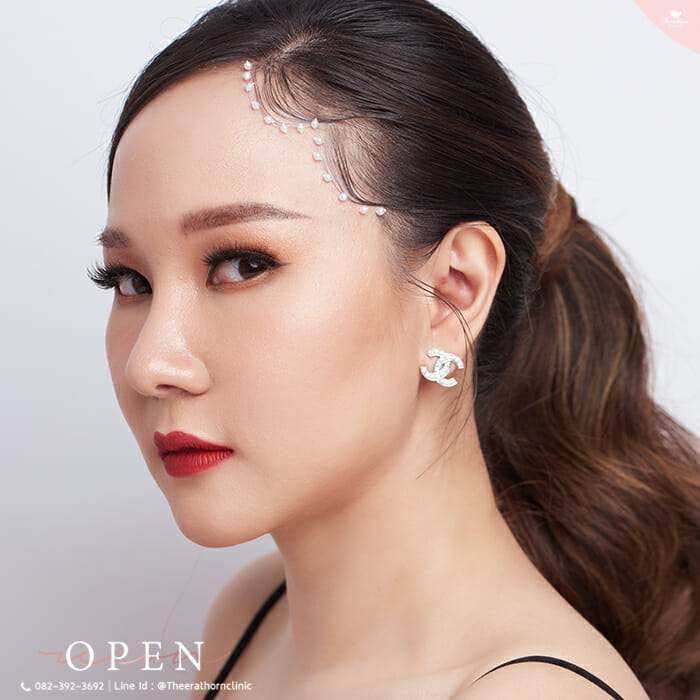
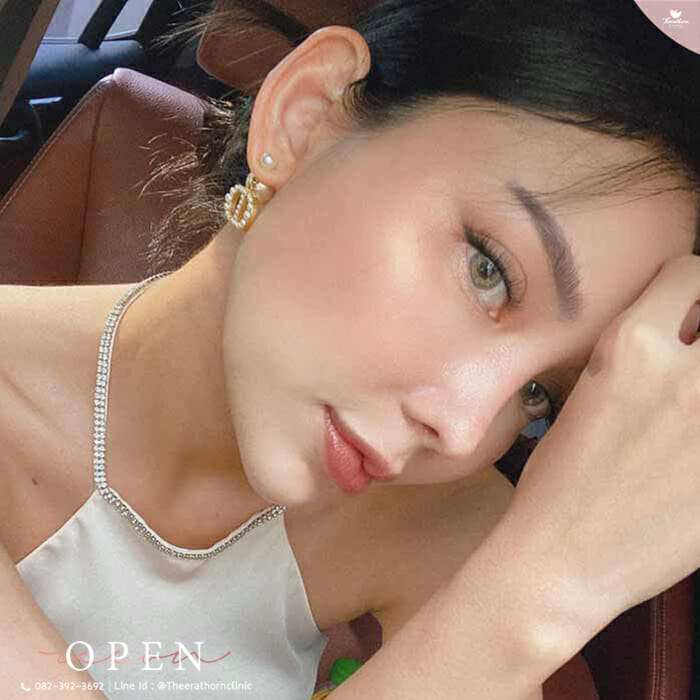
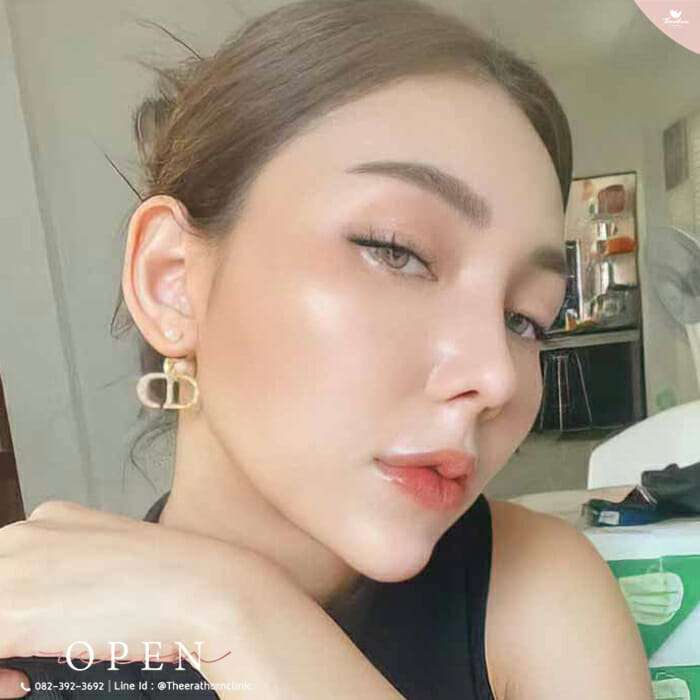
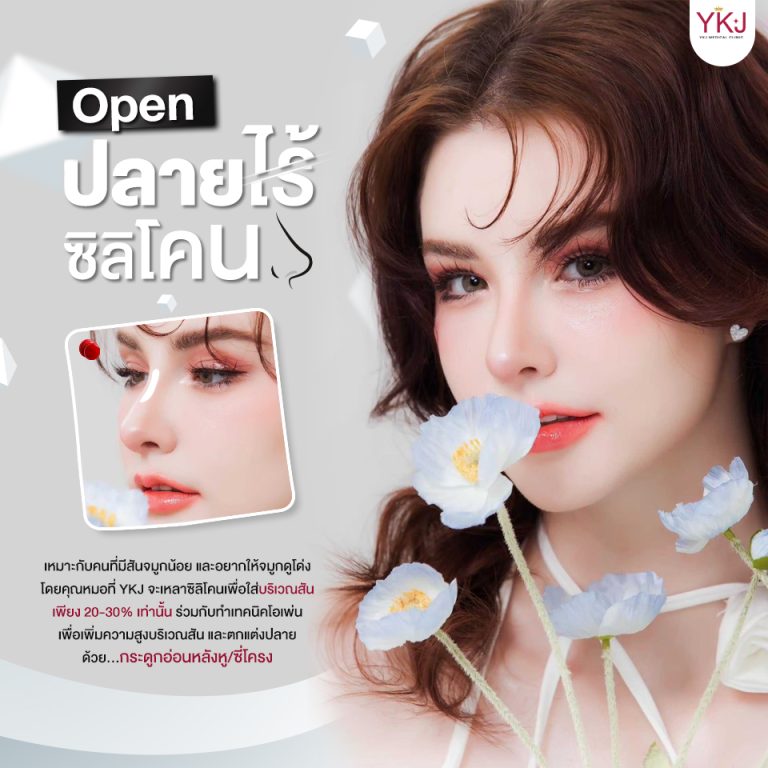
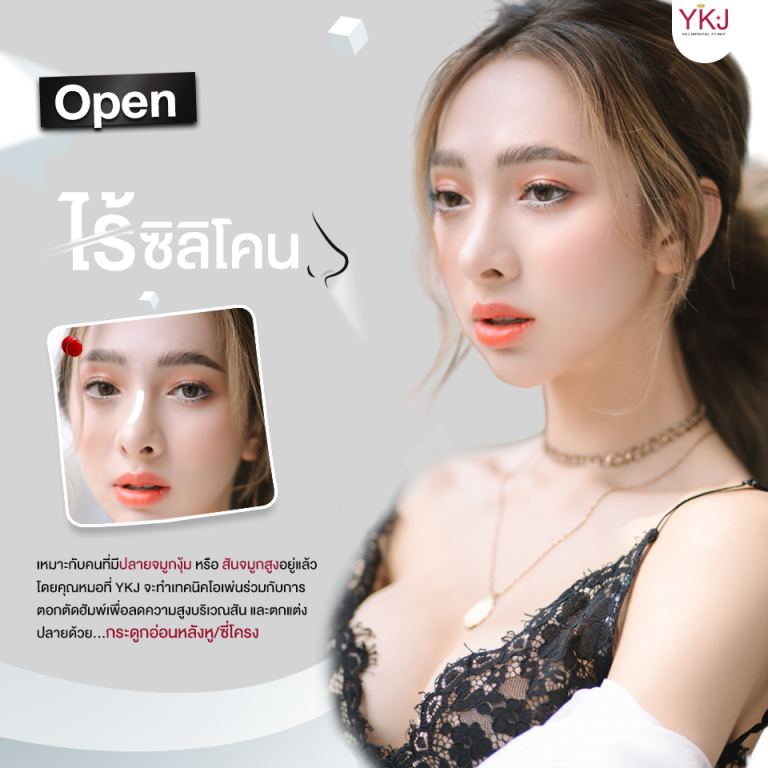
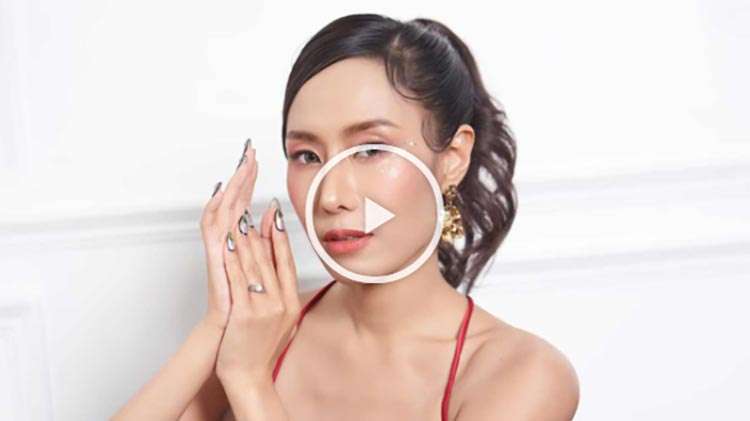




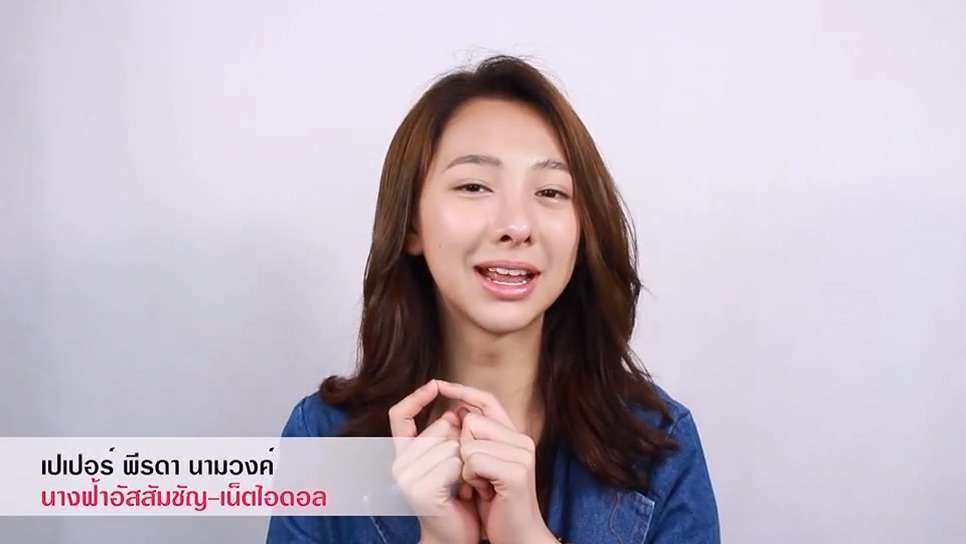
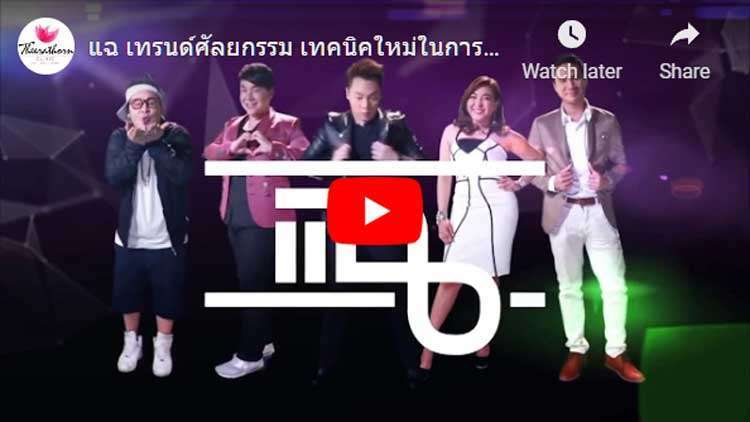
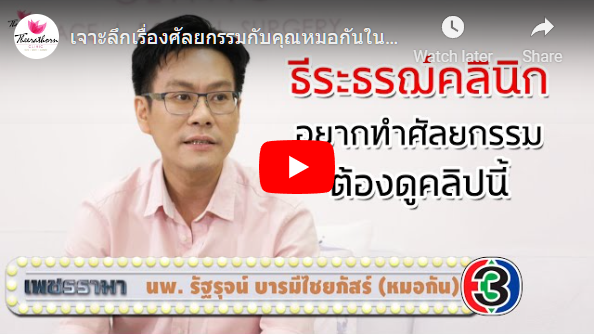

 Home
Home  Doctor
Doctor  Inquiry
Inquiry  Chat
Chat 